
- Kenya safaris

Kenya safari guide – where & when to go, and what to see
Kenya safaris rock! Kenya is one of East Africa’s premier safari destinations, with massive open savannah regions hosting a huge breadth and depth of African wildlife. Over 10% of the country is protected in some form or other, and national parks in Kenya rate as some of the best in the world. A safari in Kenya almost guarantees you a sighting of the big five African animals of lion , buffalo , elephant , rhino , and leopard . Alongside these big-hitters are hundreds of other species of African animals, and some of the world’s most diverse bird-life.
Straddling the equator, Kenya is dominated by the Rift Valley – a huge range of valleys strung along a 5,000 km crack in the earth’s crust that runs through East Africa. Within the Rift Valley are Africa’s highest peaks – in Kenya these are the volcanoes of Mount Kenya and Mount Elgon. East of the Rift Valley are the coastal plains, whilst the north of Kenya is made up of arid wastelands. The prime Kenya safari destinations are the Central Highlands and areas within the Rift Valley. The south of the country hosts the great migration of plains animals and their predators each year between June and November. In short, Kenya safaris are up there with the very best in terms of wildlife and scenery.
Self-drive safaris are an option in many national parks in Kenya, though to enjoy full access to the most remote (and tourist-free) areas you’ll need a 4WD car or jeep. If you fancy taking a tour or arranging your own guide and/or driver have a look at our list of safari tour companies in Kenya before arrival in the country.
Alongside safaris and wildlife spotting, a visit to Kenya allows you to easily extend your safari with a visit to a resort on the Indian Ocean coast, or with activities such as trekking, hiking, sailing or diving .
Useful resources
- Book a Kenya Safari
- Kenyan Ministry of Tourism
- Kenya Wildlife Service
Kenya safari highlights
Experience maasai culture.
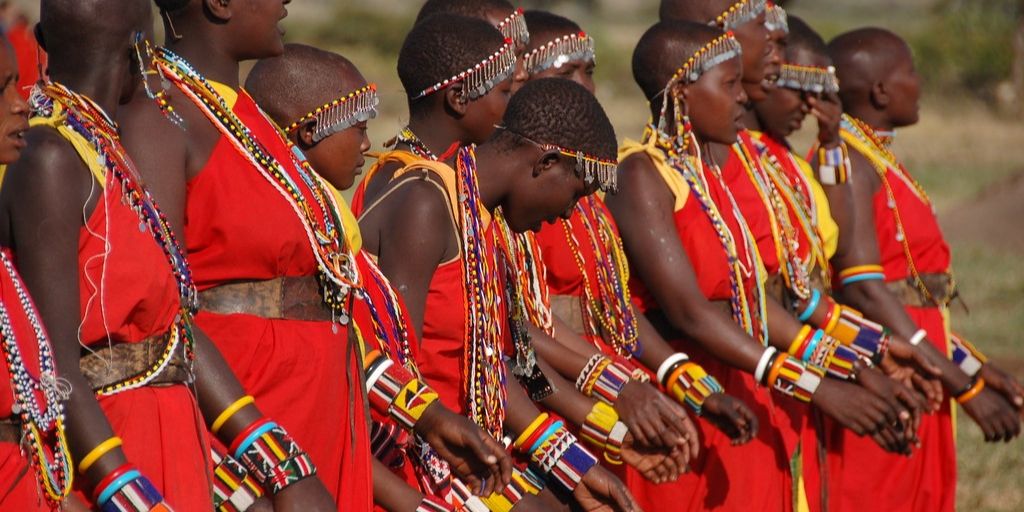
The Maasai are one of the few African tribes who have retained most of their traditions, lifestyle, and lore – along with their distinctive red robes. Many safari lodges and operators work with local Maasai on community projects. Experiencing some time in a Maasai village whilst in Kenya is a unique cultural experience that will help put your visit in context.
Big five spotting

Big five spotting in Kenya is high on most visitor’s safari checklist, and with Kenya’s superb network of national park gems seeing Africa’s biggest beasts up close and personal is a realistic goal. Destinations rich in lion, leopard, elephant, rhino, and buffalo are clustered in the south of the country, particularly Amboseli, Masai Mara and East and West Tsavo (for the Tsavo lions !) national parks.
Watch the ‘Great Wildebeest Migration’

Indian ocean beach perfection

Best time to safari in Kenya
The peak tourist season in Kenya is January and February when the weather is consistently warm and dry, with wildlife easy to spot in large concentrations. If you take a Kenya safari in peak season expect to be in company with crowds of tourists, and paying top dollar for your safari. If you’re specifically after catching sight of the annual great migration, June to October is the time to head to the Masai Mara National Park in southern Kenya.
The long rains hit Kenya through March, April and May, and the short rains from October to December. During the short rains, it generally rains only for short periods at a time, meaning your wildlife viewing will not be too disrupted. This is the time you can get some great deals on safari tours, or safari lodges if you’re travelling independently.
Flights To Kenya
Search, track and book flights to Kenya, from anywhere in the world.
Kenya Accommodation
Find safari accommodation in Kenya – from budget campsites to luxury lodges.
Kenya Car Hire
Considering a self-drive safari? Research and book car hire in Kenya.
Activities in Kenya
Search and book things to do in Kenya – tours, excursions and activities.
National parks in Kenya
With a stunning array of wildlife and more than 10% of the country given over to national parks and reserves, Kenya is undoubtedly one of the world’s best safari destinations. Whilst the world-famous Kenyan national parks such as Masai Mara and Amboseli National Parks can be uncomfortably heaving with tourists in January and February, Kenya has plenty of smaller, out of the way national parks that see only a trickle of visitors year-round. As such it’s well worth taking the time to consider whereabouts in Kenya to go on safari if you’re visiting during peak season.
Top Kenya national park picks
Masai mara national reserve.
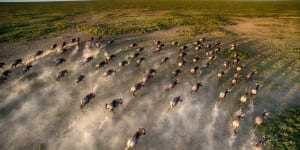
Situated in southwest Kenya, the Masai Mara is part of the northern section of the Serengeti National Park, and is generally recognised as one of the greatest wildlife reserves in Africa. The reserve is famous for the abundance of predators – particularly big cats – and the great wildebeest migration to feed these predators, as well as the Maasai people themselves.
- Lake Nakuru National Park
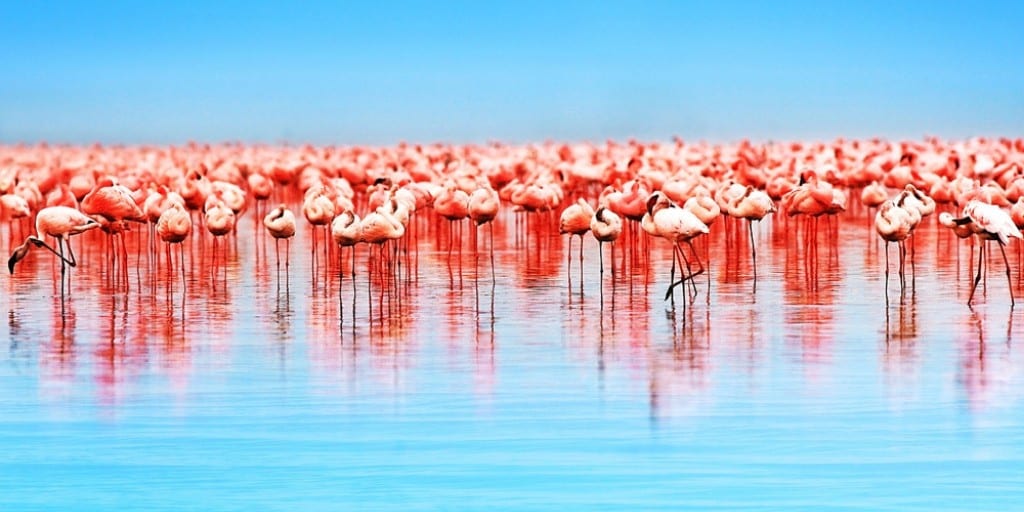
The stunning Lake Nakuru National Park is on the floor of the Great Rift Valley, surrounded by bushy grasslands and woods. There are 56 species of mammal in the park, but the star show are the thousands of flamingos, arriving in their millions some years.
- Amboseli National Park

Crowned by Africa’s highest peak, Mount Kilimanjaro, Amboseli is one of Kenya’s most popular parks . The name ‘Amboseli’ comes from the Maasai language and means ‘salty dust’… perfect for the large herds of elephants that roam the park.
- Meru National Park
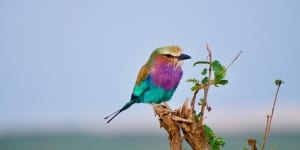
Meru National Park is a Kenyan park is located 350 km from Nairobi, featuring multiple landscapes including grasslands, swamp, jungle and rivers. It’s a birders paradise with over 427 recorded bird species, in addition to the big five .
All national parks in Kenya
Use the map below to locate all national parks in Kenya. Click the icons for more info.
Get Directions
- Aberdare National Park
- Arabuk Sokoke National Park
- Hell’s Gate National Park
- Kakamega National Park
- Lake Bogaria National Park
- Malindi Watumu National Park
- Masai Mara National Park
- Mount Elgon National Park
- Mount Kenya National Park
- Nairobi National Park
- Saiwa Swamp National Park
- Shimba Hills National Park
- Tsavo National Park
Kenya safari resources
Kenya safari companies.

There are plenty of companies offering safari tours around Kenya. The focus is on the high end, but there are some companies that specialize in mid and budget safaris. Check out our reviews of safari tour companies in Kenya .
Kenya safari lodges
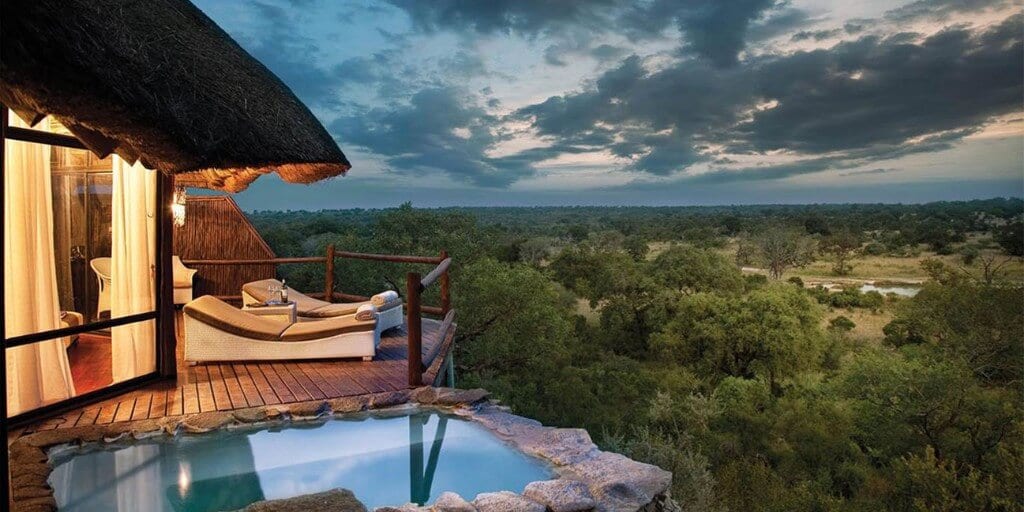
As a tourism-focussed country, Kenya has plenty of choice when it comes to safari accommodation. Lodge standards vary from rustic to modern, from the simple room to extreme luxury with en-suite private plunge pool. Search and book accommodation in Kenya .
For a trip to Kenya, travellers are required to apply for a visa. The easiest, most commonly used visa for going on a safari in Kenya, is the Kenya e-visa . It is valid for 90 days, and can even be extended once to 180 days once you arrive in Kenya. The visa can easily be applied for online and will save you the hassle of having to apply at an embassy or consulate.
Read safari guides to all countries
Botswana safaris , Namibia safaris , Rwanda safaris , South Africa safaris , Tanzania safaris , Uganda safaris , Zimbabwe safaris
Do you have any experience of planning or going on safari in Kenya?
We’d love to hear any feedback or tips you may have – please get in touch , or add to the comments below.
Top countries for safaris
- Botswana safaris
- Namibia safaris
- South Africa safaris
- Tanzania safaris
- Uganda safaris
Safari basics
- Safari animals
- How to find the right safari company
- When to go on safari
- What to take on safari
- Safari clothing – what to wear
- Safari rules & etiquette
- Wildlife spotting tips
Most read articles
- All about the ‘big five’ animals
- Collective nouns for animals
- Safari movies to watch before you go
- The world’s fastest land animals
- Apex predators
- 10 Fascinating African tribes
- The biggest animals in the world
- 17 Epic hybrid animals
- The world’s ugliest animals
- Why are flamingos pink?
Africa’s best game reserves
- Chobe National Park, Botswana
- Etosha National Park, Namibia
- Kruger National Park, South Africa
- Masai Mara National Reserve, Kenya
- Moremi Game Reserve, Botswana
- Okavango Delta, Botswana
- Serengeti National Park, Tanzania
Session expired
Please log in again. The login page will open in a new tab. After logging in you can close it and return to this page.
- Safari au Kenya
le guide complet pour bien préparer son voyage
Vous envisagez de partir faire un safari en Afrique et c’est tout naturellement que vos recherches vous mènent vers un voyage dont beaucoup rêvent : un safari au Kenya. Dans ce guide, vous trouverez tous les conseils pour bien préparer votre safari avant votre départ (en respectant votre budget et vos préférences de voyage) et organiser sereinement vos déplacements et votre hébergement sur place.
Safari au Kenya : les raisons du succès
Si vous avez déjà discuté avec des proches qui ont fait un safari au Kenya, vous le savez déjà, c’est une destination phare du safari en Afrique et dans le monde. Prenons quand même quelques instants pour rappeler pourquoi !
Les animaux
Premier point crucial lorsqu’on choisit son safari, et qui rend le pays si attractif : les animaux visibles au Kenya .
Si on rêve de partir faire un safari au Kenya au lieu d’aller au ski ou à la plage, c’est en effet essentiellement pour voir des animaux sur place.
Et les espèces animales que vous pourrez rencontrer sont nombreuses :
- Lion, léopard ;
- Lycaon, chacal, hyène ;
- Hippopotame ;
- Gnou, gazelle, impala, dik dik, grand koudou… ;
- Phacochère ;
- Rhinocéros ;
- Babouins, vervet ;
- Oiseaux en tout genre.
Réaliser un safari au Kenya, c’est donc l’occasion rare de voir et photographier les « Big Five », les 5 espèces les plus emblématiques des safaris en Afrique (et dans le monde), à savoir le lion, l’éléphant, le rhinocéros, le léopard et le buffle. Pour la plupart en voie de disparition, c’est donc une occasion unique qui s’offre à vous.

Rappelons quand même pour ceux qui n’ont jamais fait de safari qu’un safari au Kenya n’est pas une sortie au zoo. Les animaux sont en liberté dans des parcs et réserves (que nous vous présentons ci-dessous), et il vous faudra vous déplacer à l’intérieur de chaque parc, mais aussi de parc en parc si vous souhaitez voir un maximum d’espèces. Mais c’est aussi et surtout l’occasion de les voir dans leur environnement, aux points d’eau, en mouvement, en chasse…Spectacle inoubliable garanti.
Les parcs et les réserves
Pour voir les animaux dont nous avons parlé, un safari au Kenya réussi passe forcément par un ou plusieurs parcs et réserves au Kenya .
Sans rentrer dans le détail, sachez qu’il existe une quinzaine de parcs et réserves protégés au Kenya, et qu’ils vous permettront de voir une faune et une flore très diverse, dans des paysages allant de plaines à des lacs magnifiques, en passant par la savane (avec une vue imprenable sur le Kilimandjaro).

Les plus connus ?
- Le Masai Mara ;
- Le parc d’Amboseli ;
- Le lac Nakuru (et plus généralement la région des lacs) ;
- Le parc Tsavo (Est et Ouest) ;
- La réserve de Samburu .
Ces parcs peuvent être assez éloignés les uns des autres, et il faudra donc prévoir de vous déplacer en voiture. C’est pour cela qu’un safari au Kenya s’organise avec des étapes, des transferts… À titre d’exemple Masai Mara-Tsavo représente une quinzaine d’heures de transfert ! Quoi qu’il en soit la visite de ces parcs se fait elle-même en voiture, donc votre safari au Kenya nécessitera toujours une voiture pour se déplacer (voir la section ci-dessous).
L’accès à ces parcs nationaux est bien évidemment payant, et les tarifs varient selon les parcs. Comptez autour de 70$ par personne et par parc, à inclure dans le budget de votre safari !
Les circuits
Nous l’avons mentionné brièvement, mais les parcs et réserves sont assez éloignés les uns des autres, c’est pourquoi un safari s’organise plutôt sous forme d’un circuit au Kenya .

Le tour que vous allez faire va dépendre de vos envies, de votre budget et aussi du temps que vous passez sur place. Les bonnes questions à se poser avant le départ :
- Voulez-vous faire du safari uniquement ou voulez-vous inclure d’autres endroits (plages, rift…) ;
- Partez-vous seul ? En famille (avec des enfants) ? En groupe ?
- Souhaitez-vous un safari privé ?
Un safari au Kenya…Et quoi d’autre sur place ?
Évidemment, le Kenya vous attire pour le safari et les spectacles incroyables que les parcs et réserves peuvent vous offrir. Mais il n’est peut-être pas inutile de rappeler que le Kenya possède d’autres atouts, et que le tourisme au Kenya ne se résume pas aux safaris.
Ainsi, de nombreux voyageurs (notamment avec des enfants) couplent par exemple plusieurs parcs avec une partie de leur séjour en bord de mer, afin de profiter à la fois du farniente sur des plages exceptionnelles et de la découverte de la faune et de la flore locale.
Pour aller plus loin : Que faire au Kenya ?
Les montagnes du Kenya, ou encore la vallée du rift peuvent valoir le détour aussi. Citons enfin Nairobi et Mombasa, deux villes à ne pas rater si vous décidez de ne pas faire que du safari.
Quand partir pour un safari au Kenya ?
Vous l’avez sans doute déjà compris, faire un safari au Kenya est un fantastique voyage, mais il convient de bien choisir la saison à laquelle on part si on souhaite profiter pleinement de son voyage.
Pour aller plus loin : Quand partir au Kenya ?
Pour résumer, il existe 3 saisons distinctes :
- Décembre à Mars – L’été
- Avril à Juin – La mousson (ou saison des pluies)
- Juin à Novembre – L’hiver
Évidemment, les animaux sont là quelle que soit la saison, mais la pluie et la boue rendent plus compliqué un safari au Kenya. C’est la raison pour laquelle les voyageurs préfèrent aller au Kenya en dehors de cette période, avec une petite préférence pour l’hiver pendant lequel les températures sont plus clémentes.
Safari au Kenya : quel budget ?
Ah, la question du budget ! Vous vous doutez bien qu’un safari au Kenya n’est pas un voyage donné tant c’est un voyage exceptionnel.
Retenez que les prix sont un peu plus faibles pendant la saison des pluies, et que le budget dépend de plusieurs critères :
- La durée du voyage ;
- Le circuit choisi ;
- Les parcs visités (l’entrée y est payante) ;
- Le niveau d’hébergement (il y a de tout, abordable jusqu’aux lodges de luxe ) ;
- Le véhicule et l’essence ;
- Les repas ;
- L’accompagnement (seul, en groupe, chauffeur privé, guides…).
Pour la plupart des safaris au Kenya, selon le niveau d’accompagnement et la qualité du voyage, il faut donc compter entre 200 et 500€ par personne et par jour.

Pour aller plus loin : Quel budget pour un Safari au Kenya ?
Il est toujours possible de trouver des affaires en dernière minute, mais nous le déconseillons pour la plupart des voyageurs : un safari au Kenya est voyage qui se prépare.
Organiser son safari au Kenya
Les différentes options, organiser seul son safari au kenya.
Si partir seul en safari est une option, l’organiser seul est plus compliqué. C’est possible, mais plutôt réservé aux voyageurs aguerris, conscients des contraintes de sécurité dans un pays comme le Kenya. Si malgré tout, pour des questions de budget notamment, vous préférez cette option, il vous faudra :
- Choisir votre vol ;
- Définir les étapes de votre voyage ;
- Louer (et conduire) votre voiture ;
- Prévoir les logements sur place.
Pas mal d’organisation donc, mais l’assurance d’un safari unique : le vôtre.
Les tour-opérateurs « classiques »
Les tour-opérateurs de grande taille proposent tous des voyages au Kenya tout compris, avec bien souvent une brique safari. Moins spécialisés que les agences dédiées aux safaris, ces tour-opérateurs permettent de réserver des voyages tout compris (vol, hébergement, nourriture, guide, déplacement, parcs…), pratiques pour ceux qui ne veulent pas de sur-mesure, et faciliter leur organisation.
Les agences de voyages dédiées aux safaris
Quitte à organiser un safari au Kenya, nous recommandons souvent à nos lecteurs de passer par une agence de voyages spécialisée. Certes, le coût n’est pas le même, mais les avantages sont indéniables.
Ces agences, véritables spécialistes de l’Afrique et même du Kenya, ont développé au fil des ans un réseau de partenaires locaux, qui permet d’organiser des voyages de qualité, à des coûts malgré tout intéressants (puisqu’ils négocient pour tous les voyageurs qui réservent par leur agence).
C’est ainsi l’assurance d’avoir sur place des guides et accompagnants locaux, véritables alliés sur place pour voyager sereinement.
Ces agences ont aussi développé des partenariats avec des hôtels, lodges et autres hébergements sur place, permettant de simplifier l’organisation du voyage. Elles proposent enfin des tours tout organisés, axés réellement sur le safari, contrairement aux plus grandes agences qui incluent souvent un peu de safaris pour beaucoup de plage dans une optique de faire baisser le coût). La plupart du temps, l’organisation des vols reste à votre charge. Enfin ces agences spécialisées sont les seules à pouvoir vous proposer un safari sur-mesure au Kenya.
Les logements
Terminons ce guide en mentionnant les logements au Kenya. Vos choix budgétaires, ainsi que le type de voyage vont avoir un impact fort sur les logements. Il est en effet possible de camper, d’utiliser des tentes sur le toit des 4×4, de réserver des hôtels (plutôt dans les villes) et enfin il existe de nombreux lodges , dans toutes les gammes de prix. Si votre budget le permet, certains lodges proposent des prestations exceptionnelles, et vous aller apprécier sans aucun doute voir les éléphants boire à l’aube ou au coucher du soleil à un point d’eau au pied de votre lodge.

Préparer son safari au Kenya
Retrouvez dans cette section nos guides pour bien préparer votre safari au Kenya, sans rien oublier avant de partir !
Les formalités d’entrée
Première étape d’une bonne préparation, s’assurer de remplir les formalités pour voyager au Kenya :
- Avoir le visa du Kenya
- Un passeport valide avec au moins 2 pages vierges
Le visa est en effet obligatoire pour voyager au Kenya, mais plutôt simple à obtenir, puisqu’il peut notamment être demandé en ligne, ou bien en passant par votre agence de voyages.
Il est valable 90 jours après votre arrivée pour du tourisme, et les mineurs de moins de 16 ans en sont exemptés.
Comme tout voyage en Afrique, un safari au Kenya demande un peu de préparation pour éviter les désagréments sur place. Il faudra ainsi prévoir plusieurs vaccins pour un safari au Kénya , comme la fièvre jaune, l’hépatite A et B, et dans certains cas la rage ou la typhoïde.

Le risque de paludisme au Kenya est à ne pas prendre à la légère non plus, puisqu’il existe toute l’année dans tout le pays (à part sur les hauts plateaux où les moustiques sont moins présents).
Comme dans tous les pays où le paludisme est présent, il faudra donc prendre les précautions d’usage (répulsifs sur la peau et les vêtements, bien se couvrir, moustiquaires, serpentins,…). Ces précautions vous protégeront aussi du chikungunya et la dengue.
Côté alimentation, les risques existent comme partout en Afrique et dans de nombreux pays à l’étranger, et de nombreux voyageurs passent par la case tourista. Ici aussi quelques précautions s’imposent :
- Consommer cuit ou bien cuit ;
- Enlever la peau des fruits et légumes ;
- Bien se laver les mains ;
- Boire de l’eau en bouteille ou de l’eau rendue potable (filtrée, bouillie…) ;
- Éviter les buffets, glaçons, jus de fruits frais…
Préparer sa valise pour un safari au Kenya
Côté bagage, il faudra prévoir a minima avant de partir :
- Les vêtements et chaussures nécessaires pour un safari ;
- La trousse à pharmacie ;
- Les accessoires (jumelles etc. ) ;
- Le matériel photo ;
Pour aller plus loin : préparer sa valise pour un safari
Le shilling kényan est la monnaie officielle du Kenya. Pour tout savoir sur la monnaie au Kenya, comment en changer, à quel taux etc., n’hésitez pas à lire notre article dédié .
Conduire au Kenya
Le réseau de routes du Kenya est globalement en bon état. Il est composé plutôt de routes en plaine, et de pistes dans les parcs. Ces dernières ne sont pas forcément en bon état, et pas évidentes à pratiquer pendant la saison des pluies notamment. Un 4×4 est donc toujours nécessaire si vous décidez de louer une voiture au Kenya et conduire vous-même pendant votre voyage.

Avant d’opter pour l’option location de voiture et conduite sans chauffeur, rappelez-vous que :
- La conduite se fait à gauche ;
- Elle est plutôt « sportive » (disons que le code de la route est moins respecté qu’en France) ;
- Les routes pas toujours en bon état ;
- La conduite de nuit n’est pas facile, et vous en aurez probablement si votre voyage contient des transferts longs.
Les assurances
Enfin, derniers préparatifs à prévoir, les assurances. Vous le savez sans doute, la plupart des cartes de crédit qui vous serviront à payer votre voyage possèdent déjà des assurances (rapatriement le plus souvent). En fonction des cartes, et du niveau des cartes, le degré d’assurance varie énormément, et nous vous recommandons donc de commencer par regarder ce qui est couvert ou non.
Combien coûte un safari au Kenya ?
Un Safari au Kenya est l’un des safaris les plus onéreux du continent africain. Pour un merveilleux safari dans un pays magnifique, attendez-vous à dépenser entre 200 et 500 euros en moyenne par personne et par jour.
Quand faire un safari au Kenya ?
Il est impératif de choisir la bonne période de l’année pour visiter le Kenya pour un safari si vous voulez en profiter pleinement. Il est préférable de partir en safari en dehors de la saison des pluies afin de pouvoir observer facilement ces merveilleux animaux du Kenya.
Il faudra ensuite prévoir, au cas par cas, des assurances complémentaires (facultatives) :
- L’assurance annulation de voyage
- Des assurances couvrant les frais d’hospitalisation
Notez que certaines agences vous proposeront d’elles-mêmes ces assurances, mais que vous pouvez aussi faire appel à des spécialistes comme Chapka ou encore Axa Assistance, ou bien passer par un comparateur des assurances voyages pour obtenir plusieurs devis.
- Quand partir ?
- Comment y aller ?
- Safari de luxe
- Voyage de noces
- Que faire ?
- Parcs et réserves
- Louer une voiture
Les alternatives à un Safari au Kenya
©2021 Mister Safari - Mentions Légales - Politique de confidentialité - Contact
- You are here:
- Kenya Tours
Your Safari
Tour length, rates in usd $ – change currency, starting from.
- Nairobi (2409)
- Mombasa (56)
- Diani Beach (12)
- Entebbe (9)
- Johannesburg (0)
- Zanzibar (0)
- Dar es Salaam (0)
- Kampala (0)
- Victoria Falls Town (0)
- Windhoek (0)
- Addis Ababa (0)
- Cape Town (0)
- Livingstone (0)
- Antananarivo (0)
- Hoedspruit (0)
- Port Elizabeth (0)
- Nelspruit (1)
- Pretoria (0)
- Bujumbura (0)
- Hazyview (0)
- Upington (0)
- Blantyre (0)
- Skukuza (0)
- Nosy Be (0)
Comfort Level
- Luxury+ (25)
- Luxury (638)
- Mid-range (1,306)
- Budget (430)
Private or Shared Tour
- Private tour (2,046)
- Shared tour (454)
Safari Type
- Lodge, tented camp or hotel (2,428)
- Camping (72)
Operator Rating
- & up (2,388)
Specialized Tours
- Fly-in safaris (69)
- Family (1,300)
- Beach time (176)
- Honeymoon (663)
- Gorilla trekking (24)
- Photographic safaris (2)
- Mountain climbing (46)
- Walking safaris (7)
- Self-drive (0)
- Guided self-drive (0)
- Chimp trekking (14)
- Overland tours (0)
- Cycling safaris (1)
- Canoe safaris (0)
- Horseback safaris (2)
- Birding tours (4)
- Accessible safaris (0)
- Golf & Wildlife (1)
Other Tour Features
- Airport transfer is included (2,491)
- Itinerary can be customized (2,141)
Filter by Operator
Filter by accommodation, operators from.
- Kenya (2,353)
- South Africa (7)
- Tanzania (42)
- United Kingdom (16)
- United States (70)
- Australia (0)
- Belgium (0)
- Botswana (0)
- Comoros (0)
- Denmark (0)
- Ethiopia (32)
- Eswatini (0)
- Germany (0)
- Ireland (0)
- Lesotho (0)
- Madagascar (0)
- Mauritius (0)
- Mayotte (0)
- Mozambique (0)
- Namibia (0)
- Netherlands (0)
- New Zealand (0)
- Nigeria (0)
- Portugal (10)
- Reunion (0)
- Seychelles (0)
- Singapore (0)
- Switzerland (3)
- Uganda (59)
- United Arab Emirates (0)
- Zimbabwe (0)
Kenya Safari Tours - Compare 2,500 Packages
Kenya is the historical home of the East African safari, a land of sweeping savannah grasslands inhabited by charismatic megafauna, including big cats, the Big Five (elephant, buffalo, lion, leopard and rhino) and just about everything in between. Elsewhere, landscapes here stir the soul with deserts in the north, dense forests in the west, Rift Valley lakes in the center and tropical coast out east. The result for those on safari is an experienced safari industry ready to show you a seemingly endless parade of wildlife against one of the most beautiful backdrops in Africa.

10-Day Samburu-Aberdare-L Nakuru-Mara-L Naivasha-Amboseli
$3,298 to $3,792 pp (USD)
Kenya: Private tour Mid-range Lodge & Hotel
You Visit: Nairobi (Start) , Samburu NR, Aberdare NP, Lake Nakuru NP, Masai Mara NR, Lake Naivasha (Naivasha) , Amboseli NP, Nairobi (End)
Kiboko Tours And Travel Tour operator has an office in Kenya
4.8 /5 – 49 Reviews

4-Day Masai Mara / Lake Nakuru Budget Shared Safari
$545 to $770 pp (USD)
Kenya: Shared tour (max 8 people per vehicle) Budget Tented Camp & Hotel
You Visit: Nairobi (Start) , Masai Mara NR, Lake Nakuru NP, Nairobi (End)
Bienvenido Kenya Tours and Safaris Tour operator has an office in Kenya
4.1 /5 – 72 Reviews

9-Day Midrange/Luxury Combo Kenya Classic Game Safari
$4,029 to $4,840 pp (USD)
Kenya: Private tour Luxury Tented Camp & Resort
You Visit: Nairobi (Start) , Mt Kenya, Samburu NR, Ol Pejeta (Laikipia) , Lake Nakuru NP, Masai Mara NR, Nairobi (End)
Morning Star Tours & Travel Tour operator has an office in Kenya
4.9 /5 – 155 Reviews

5-Day Roaring Kenya - Mid-Range
$1,420 to $2,070 pp (USD)
Kenya: Private tour Mid-range Lodge & Tented Camp
You Visit: Nairobi (Start) , Amboseli NP, Lake Nakuru NP, Masai Mara NR, Nairobi (End)
Spirit of Kenya Tour operator has an office in Kenya
4.9 /5 – 480 Reviews

8-Day Northern Kenya Luxury Safari
$6,987 to $9,272 pp (USD)
Kenya: Private tour Luxury Lodge & Hotel
You Visit: Nairobi (Start) , Laikipia, Nairobi NP, Nairobi (End)

4.9 /5 – 149 Reviews

6-Day Kenya Safari Masai Mara Lake Nakuru Amboseli Tour
$2,134 to $2,816 pp (USD)
Kenya: Private tour Mid-range Tented Camp
You Visit: Nairobi (Start) , Masai Mara NR, Lake Nakuru NP, Amboseli NP, Nairobi Airport (End)
Okoa Africa Tours Tour operator has an office in Kenya
4.2 /5 – 83 Reviews

3-Day Masai Mara Group Joining Daily Tour - Jambo Mara
$686 to $1,201 pp (USD)
Kenya: Shared tour (max 8 people per vehicle) Mid-range Resort
You Visit: Nairobi (Start) , Masai Mara NR, Mara River, Maasai Village (Cultural Village) , Nairobi (End)
Samson’s Safaris Tour operator has an office in Kenya
5.0 /5 – 31 Reviews

3-Day Safari from Mombasa Tsavo East, Saltlick Lodge
$946 to $990 pp (USD)
Kenya: Private tour Mid-range Lodge
You Visit: Mombasa (Start) , Tsavo East NP, Taita Hills WS, Mombasa (End)
Back of Africa Adventure Tour operator has an office in Kenya
4.8 /5 – 84 Reviews
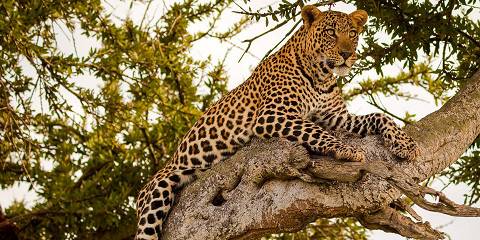
4-Day Lake Nakuru and Masai Mara Safari - Mid Range
$1,190 to $2,108 pp (USD)
You Visit: Nairobi (Start) , Lake Nakuru NP, Masai Mara NR, Nairobi (End)
5.0 /5 – 16 Reviews

5-Day Experience Variety (Mara-Naivasha-Amboseli)Private
$960 to $1,375 pp (USD)
Kenya: Private tour Budget Lodge & Tented Camp
You Visit: Nairobi (Start) , Masai Mara NR, Crescent Island (Lake Naivasha) , Amboseli NP, Nairobi (End)
Axis Africa Expedition & Safaris Tour operator has an office in Kenya
4.9 /5 – 1064 Reviews
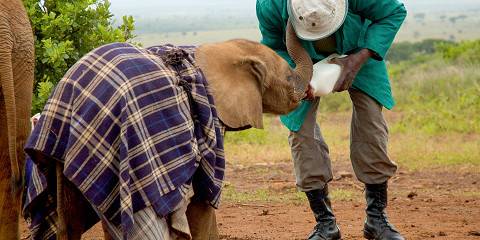
8-Day Best Luxurious Adventure and Experience Safari
$2,823 to $3,576 pp (USD)
Jastro Safaris Tour operator has an office in Kenya
4.9 /5 – 21 Reviews
7-Day Magical Kenya Luxury Safari
$3,801 to $4,400 pp (USD)
Kenya: Private tour Luxury Lodge & Tented Camp
You Visit: Nairobi (Start) , Amboseli NP, Lake Naivasha (Naivasha) , Lake Nakuru NP, Masai Mara NR, Nairobi (End)
Estleon Adventures Tour operator has an office in Kenya
5.0 /5 – 117 Reviews

4-Day Magical Masai Mara Naivasha Hells Gate Private
$1,090 pp (USD)
Kenya: Private tour Budget Lodge & Hotel
You Visit: Nairobi (Start) , Masai Mara NR, Hell’s Gate NP, Nairobi (End)
Tai Adventures Tour operator has an office in Kenya
4.8 /5 – 6 Reviews

4-Day Roaming Mara & Lake Nakuru Budget Camping Safari
$601 to $760 pp (USD)
Kenya: Shared tour (max 7 people per vehicle) Budget Tented Camp & Hotel
Jungleroam Safaris Tour operator has an office in Kenya
5.0 /5 – 7 Reviews
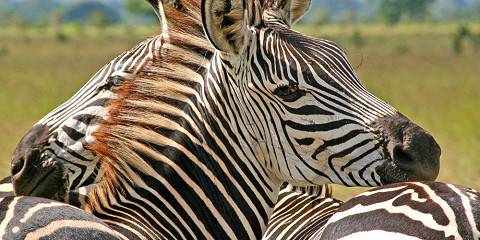
13-Day From Kenya to Tanzania and Zanzibar
$5,070 to $6,590 pp (USD)
Kenya & Tanzania: Private tour Mid-range Lodge & Tented Camp
You Visit: Nairobi (Start) , Lake Nakuru NP, Masai Mara NR, Serengeti NP, Ngorongoro Crater, Lake Manyara NP, Zanzibar (End)
Unlimited Expeditions: The Soul of Tanzania
4.9 /5 – 438 Reviews

5-Day Masai Mara-Nakuru-Naivasha-Joining Group Budget
$638 to $858 pp (USD)
You Visit: Nairobi (Start) , Masai Mara NR, Lake Nakuru NP, Lake Naivasha (Naivasha) , Nairobi (End)
Jocky Tours and Safaris Tour operator has an office in Kenya
4.9 /5 – 1280 Reviews

10-Day Safari & Beach Adventure
$2,481 to $3,328 pp (USD)
You Visit: Nairobi (Start) , Masai Mara NR, Lake Nakuru NP, Lake Naivasha (Naivasha) , Amboseli NP, Tsavo East NP, Diani Beach, Nairobi (End)
Kameraz of Afrika Tour operator has an office in Kenya
4.8 /5 – 96 Reviews

3-Day Magical Maasai Mara Experience- Budget Safari
$400 to $660 pp (USD)
Kenya: Shared tour (max 7 people per vehicle) Budget Tented Camp
You Visit: Nairobi (Start) , Masai Mara NR, Nairobi (End)
African Uncut Safaris Tour operator has an office in Kenya
5.0 /5 – 3 Reviews
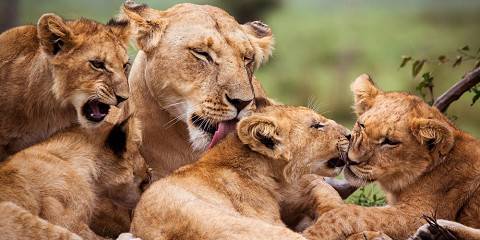
6-Day Full Board Wildlife Wonderland - the Big Five
$1,837 pp (USD)
You Visit: Nairobi (Start) , Masai Mara NR, Lake Nakuru NP, Amboseli NP, Nairobi (End)
Peak Season Africa Safaris Tour operator has an office in Kenya
5.0 /5 – 6 Reviews

9-Day Kenya Scenic and Wildlife Budget Safari Adventure
$2,640 to $3,520 pp (USD)
Kenya: Private tour Budget Hotel & Tented Bush Camp
You Visit: Nairobi (Start) , Samburu NR, Meru NP, Lake Naivasha (Naivasha) , Lake Nakuru NP, Masai Mara NR, Nairobi (End)
Nature Insight safaris Tour operator has an office in Kenya
5.0 /5 – 8 Reviews
Related Searches
- Kenya Tour Operators
- Kenya Budget Safaris
- Kenya Luxury Tours
- Kenya Honeymoon Safaris
- Kenya Tours for Families
- Kenya Camping Safaris
- Masai Mara Safari Tours
- Amboseli Safari Holidays
- Tsavo East Safaris
- Tsavo West Safaris
- Kenya Safari & Mombasa Beach
- Diani Beach Beach Holidays
8 Questions About Kenya Safaris

Answered by
Anthony ham.

When is the best time to visit Kenya?
“June to October is an excellent time for Kenya tours. During these months, the weather is generally dry (although it can get really hot in October and at the tail end of September) and most trails are open. This also coincides with the wildebeest and zebra migration in the Masai Mara National Reserve. This is the Dry season, and as it progresses, water sources for animals tend to dry up and become fewer, drawing animals in numbers to those that remain. One downside is that high-season prices apply during the Dry season months. Crowds are also larger – in some parks, the queue of safari vehicles can take away something from your experience, and some areas of the Masai Mara can be completely overwhelmed with vehicles during the migration. In the Dry season, June is one of my favorite months to visit. Visiting from November to February also has its devotees. At this time, migrating birds arrive, the rains rarely disrupt travel, and the country is transformed into a lovely shade of green. Most travelers avoid March to May because heavy rains are always possible and can transform safari trails into muddy bogs. That said, prices are lower and I visited once in April and was lucky to find very few other visitors (except for local visitors around Easter) and clear skies.”
Why visit Kenya? What are the major attractions?
“Outstanding wildlife is the main reason to visit Kenya. While many visitors come for the migration, Kenya is excellent year-round, with a large number of world-class national parks – apart from the Masai Mara, there’s Amboseli, Lake Nakuru, Tsavo East and Tsavo West National Parks and Samburu National Reserve – where superb wildlife viewing is almost guaranteed. It all adds up to Kenyan safari possibilities of great variety. Kenya is Big Five territory, with healthy populations of elephant, buffalo, lion, leopard and rhino, but the birdlife is also outstanding, as is the cultural element – this is the land of the Maasai, Samburu, Turkana and others. The sheer number of habitats, too, make for wonderful scenery – endless horizons in the Masai Mara, tropical forests in Kakamega Forest National Reserve, the starkly beautiful parks of the north, and peerless Kilimanjaro views from Amboseli.”
What does a Kenyan safari cost?
“It all depends on what sort of safari you want and can afford. Kenya has more variety than most other African safari destinations, with excellent options from the lower end of the pricing scale (from US$200 per person per day) to luxury Kenya safaris (up to US$1,000). While accommodation is partly what will determine the price for many travelers, it can also depend on how you wish to travel between the various parks. Air transfers, usually via Nairobi, can be expensive, but dramatically reduce the amount of time you’ll spend on the road, thereby maximizing the amount of time you’ll get to spend in the parks themselves. Remember also that most Kenya safari packages will include transport, accommodation, all meals and activities (including game drives).”
How is the wildlife viewing?
“It can vary from park to park. Most of the more popular parks that you can visit on a Kenya tour – Amboseli, Masai Mara, Samburu and Lake Nakuru – have fabulous wildlife-viewing opportunities. Dense wildlife populations in all of these parks make them good all-round safari destinations that enable you to see as many animals (and different species) as you can in a short period of time. Other parks are more specialist – such as the birds and primates of Kakamega, and the sitatunga in Saiwa Swamp National Park – allowing you to tick off a hard-to-find species, usually without the crowds. And a more exclusive Kenyan safari experience is possible in the conservancies of Laikipia Plateau – you pay more, but, with the exception of Ol Pejeta Conservancy, crowds are non-existent and wildlife viewing is excellent. At most of these conservancies, you can get off-road as well, meaning that you’ll get a lot closer to the animals than you will in a national park.”
How safe is Kenya for tourists?
“For the most part, a Kenya safari is safe, but there are some important things to know. Nairobi and, to a lesser extent, some other Kenyan cities have a reputation for violent crime. I’ve spent a significant amount of time in Nairobi and elsewhere and have never once had a problem, but it does happen often enough to mean that you should always be careful and follow local advice when it comes to these cities. Another potential danger comes from traveling on the country’s roads – the accident rate is extremely high. You can minimize the danger by spending as little time as you can in Nairobi and other cities (in any case, Kenya’s charm rarely resides in its major urban centers), by never traveling at night and by flying between the parks. The danger from wild animals is minimal; most Kenya safari trips and operators have excellent safety records, and you should be fine if you follow the safety briefings and instructions from guides.”
How do I select a reliable tour operator for a Kenyan safari?
“The best way to choose a Kenya safari is to read all about the safari experiences of other travelers at SafariBookings.com – chances are that their reviews will answer many of your questions (before you’ve asked them), as well as speak to the professionalism of the various operators with whom they’ve traveled. Otherwise, it’s extremely important that you contact any tour companies with whom you are considering traveling before you make a booking, and ask any questions you may have. This could be anything from the mode of transport, frequency of meals or daily safari schedules to the languages spoken by your guide or how many other travelers will be in your vehicle. Be as specific as you can. Not all operators offer customized Kenya tours, it’s true, but there’s no substitute for being informed. The operator’s willingness to answer questions can be a good guide to their dealings with people on safari.”
What type of accommodation can I expect?
“As a general rule, the higher your Kenya safari prices, the better you can expect your accommodation to be. At the lower end, campsites are usually basic, sometimes crowded and not always in the best locations within the national parks or reserves, but they are well priced and often have ample facilities such as showers and toilets. Lodges are the mainstays of the Kenya safari scene and the quality varies considerably. Many lodges within the reserves and national parks have excellent locations but are aging and in need of renovation, while others are luxurious and recently overhauled. In tented camps, including mobile camps, you’ll sleep in large, walk-in tents – they’re like lodge rooms in terms of size but with canvas for walls and floor. Canvas tents mean that you can hear the sounds of the African night. Hopefully you won’t hear the sounds of your neighboring guests if the tents are nicely spaced. Most lodge rooms and tents of this kind have comfortable (not camp) beds, sometimes a desk and usually a private bathroom; some even have an outdoor shower with no roof but walls that protect your modesty. Particularly in tented camps, you’ll most likely need to recharge your devices not in your room but at a power station in the main public area.”
What can I expect from a safari in Kenya?
“Most days out on safari begin with a quiet African voice waking you well before sunrise. After dressing quickly, and having a coffee or tea, you head out for a few hours in a safari vehicle (with other guests, a driver, guide and sometimes a tracker) looking for wildlife – this time, and the last hours before sunset, are ideal for viewing wildlife. You’ll return to the lodge or camp mid- to late morning for a proper sit-down breakfast. A few hours of relaxation, followed by lunch, then a few hours more doing very little occupies the hottest part of the day, when even animals retreat into the shade. Afternoon tea, often known as High Tea in a nod to colonial-era safari traditions, happens around 3 PM or 3:30 PM, then it’s back out looking for wildlife until after dark. Just before sunset, you’ll stop for another safari institution, the ‘Sundowner’, when you’ll watch the sunset while nursing the drink of your choice. You arrive back in camp in time to freshen up, then it’s dinner and off to bed, before it all starts again very early the next morning.”
Kenya Safari Reviews

Stuart is a travel writer and author of numerous Lonely Planet guidebooks, including 'Kenya', 'Rwanda' and 'Tanzania'.
East Africa’s Most varied Nation
Kenya is the original home of the safari. This is the land of the world renowned Masai Mara National Reserve where tawny coloured lions feast off the hundreds of thousands of wildebeest that annually migrate into the country from...
Full Review

Alan is a travel writer and author of over 20 Lonely Planet guidebooks, including the guides to Southern Africa and Zambia & Malawi.
A Safari Behemoth
In some ways, Kenya rates as the best country for safaris in Africa. That is a contentious statement and many would argue that Tanzania should be given that title. Whichever way you go, Kenya is undeniably a destination which will fulfill...

Fabulous Kenya
I am a frequent visitor to Kenya. This trip did not disappoint. I always discover something new things besides revisiting the old. I love taking friends to Giraffes Center, Elephant Orphanage and City Park to feed the monkeys. Every...

Beautiful country!
It’s a beautiful country, with so much adventurous activities. The wildlife sightings are a dream come true for any wildlife enthusiast. Avoid travelling to Mombasa in Jan-Mar, as it gets very hot in the day.

Wonderful Wildlife and Scenery that is protected and cared for
I visited Lake Nakuru and Masai Mara. In 4 days (3 nights) using Balu travel. Isaac was my private guide and he was amazing. Besides having a hospitality background and gaming experience, he was a friendly and caring guide who made sure...

Amazing experience!
I had an amazing experience in Kenya! All the wildlife I saw in the national parks was incredible! I also had some nice experiences in Nairobi on walking tours, at the giraffe center, the museum, and exploring the shops and markets. I...
En route vers votre prochaine aventure
Safari au kenya, mes conseils pour partir en safari au kenya.
Vous préparez un safari au Kenya ? Cela tombe bien, je vous explique dans cet article comment bien préparer et réussir votre safari au Kenya. Depuis toujours, les safaris font partie des voyages que je préfère ! Cela a toujours été un rêve d’enfant pour moi de me retrouver face à un animal sauvage . Si vous ne savez pas que faire au Kenya , je vous recommande fortement d'opter pour le safari, que ce soit sur une journée ou pour plusieurs nuits sur place, je suis certain que ce sera une expérience mémorable 🙂
Pour profiter à fond de votre séjour, je vous ai préparé un petit guide qui vous permettra de bien préparer votre voyage au Kenya .
Pourquoi faire un safari au Kenya ?
Le Kenya vous proposera un vrai moment d’évasion : entre l’observation des animaux dans leur milieu naturel et cette immersion totale dans les plus beaux paysages d'Afrique (la brousse , les prairies, la savane , les montagnes et les forêts), vous ne serez vraiment pas déçus, dépaysement garanti !
Vous trouverez donc ci-dessous mes recommandations, des conseils sur quand partir et quoi emporter, mais aussi des astuces, la liste des plus beaux parcs et réserves du pays . Bref de nombreuses informations qui, au final, vous permettront de profiter à fond de vos vacances, de vivre un safari de rêve et surtout de revenir avec des souvenirs pleins la tête. Il ne me reste plus qu’à vous souhaiter un « bon voyage » en Swahili : « safari njema » 😊
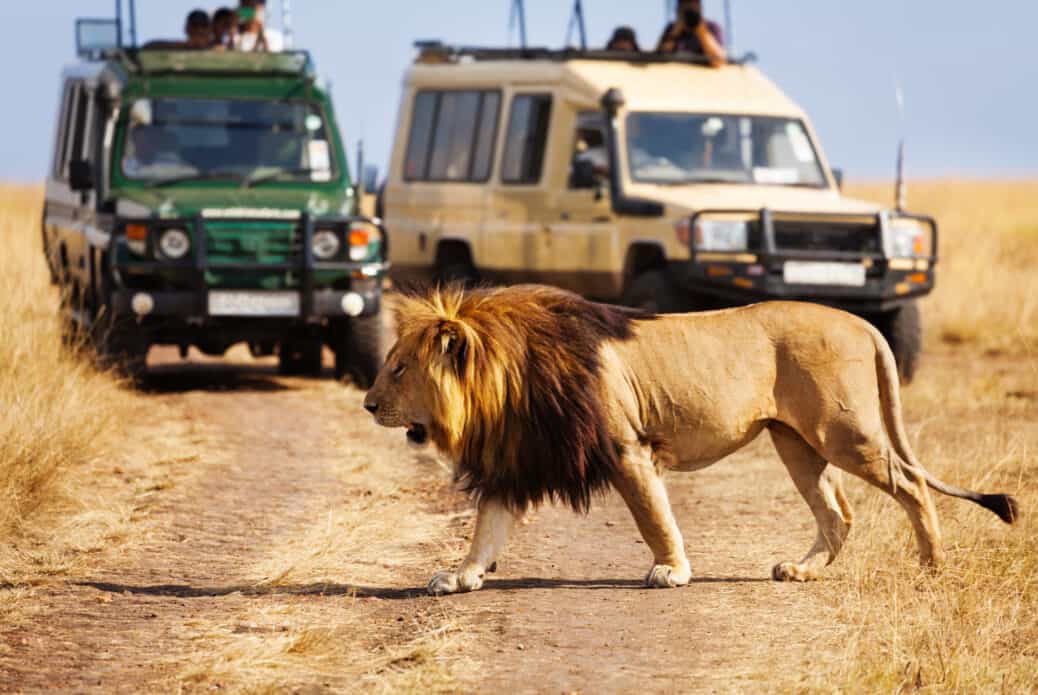
Le safari au Kenya a beaucoup de succès auprès des touristes pour plusieurs raisons. La raison principale est la diversité de la faune : au Kenya vous aurez de grandes chances de découvrir le Big Five . Piqûre de rappel, les animaux du Big Five sont les suivants :
- Le rhinocéros
Ce surnom a été utilisé pour la première fois en 1935 pour désigner les espèces favorites pour les photographies des touristes, mais aussi pour d'autres raisons plus tristes : la chasse de ces espèces qui sont en danger depuis des dizaines d'années.
Beaucoup de parcs et de réserves naturelles se concentrent au Kenya, c'est ce pourquoi ils ont beaucoup de succès. Les safaris du Kenya sont aussi plus abordables que les safaris dans d'autres pays comme la Tanzanie. Pour en apprendre davantage sur les différences entre le Kenya et la Tanzanie vous pouvez lire mon article dédié : safari au Kenya ou en Tanzanie .
Comment organiser son safari au Kenya ?
Si vous avez choisi de partir à l'aventure au Kenya, il vous faut maintenant préparer votre safari du mieux possible . En effet, partir en safari n'est pas une mince affaire et vous nécessitera plus d'organisation qu'un voyage farniente en bord de mer. Bien sûr, il existe différentes options pour l'organisation de son safari au Kenya et je vous dis tout ⬇️
Préparer un self drive safari
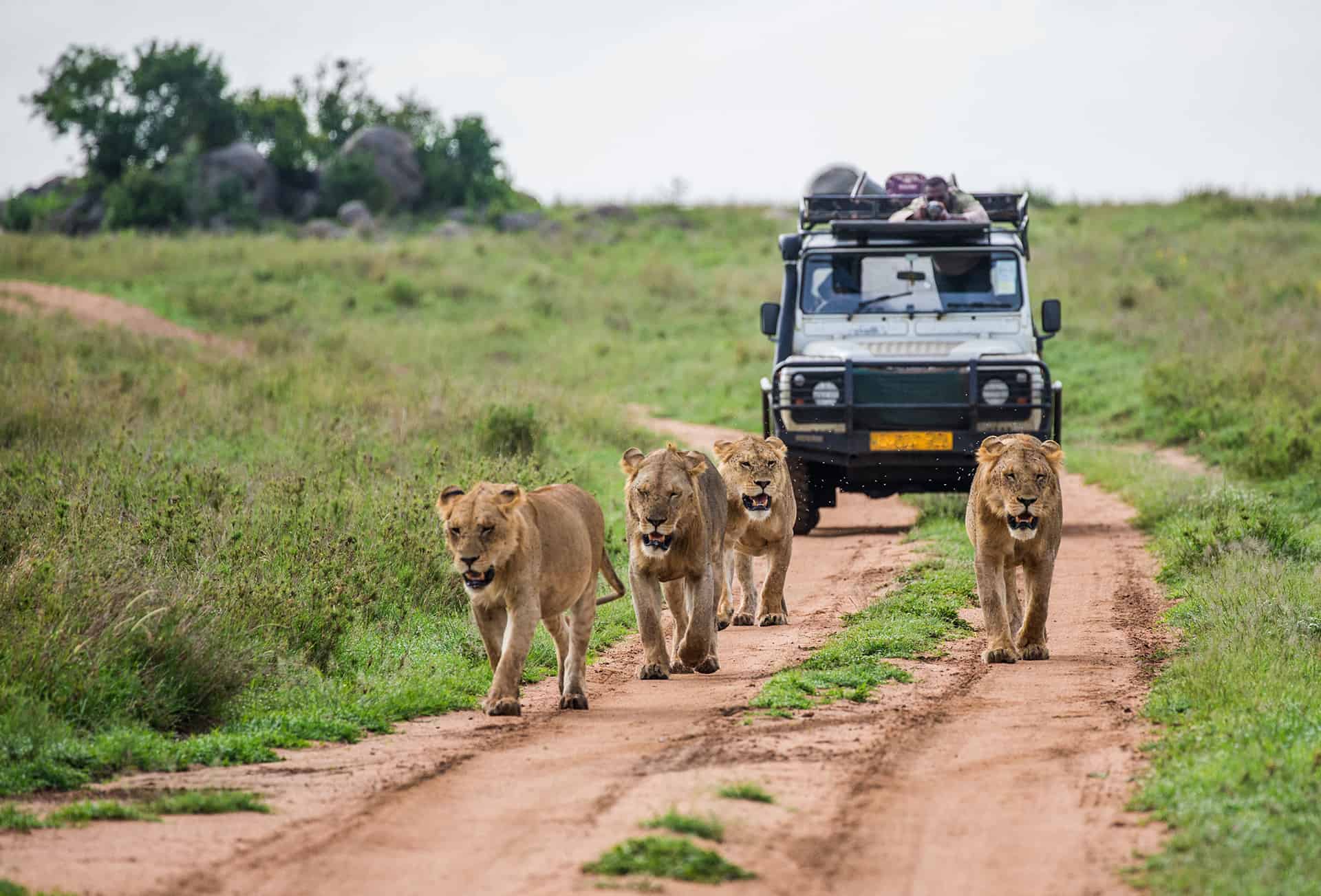
Vous pouvez organiser vous-même votre safari. C'est-ce que l’on appelle un self drive safari . Cela implique qu’une fois sur place, vous devrez louer un véhicule , réserver votre hébergement et réserver vos billets pour les parcs et réserves naturelles.
Aucune inquiétude à avoir, les routes du pays sont en bon état (même si elles sont souvent mal éclairées) et les pistes dans les parcs et réserves sont plutôt bien praticables . Je vous conseille toutefois de louer un 4x4 ou un véhicule de type SUV . Ils sont bien plus pratiques sur les pistes abimées. De plus, vous serez un peu surélevé et cela vous permettra de mieux observer les animaux.
Ce type de safari vous permet de passer un séjour en toute indépendance puisque vous organiserez vos journées comme vous le voulez.

Attention dans les villes, la conduite se fait à gauche et le code de la route n'est pas respecté par les locaux. Je ne vous conseille pas de vous lancer dans un self drive safari si vous n'êtes pas à l'aise en voiture.
Combien coûte une voiture de location au Kenya ?
Pour avoir une idée du budget que vous devrez allouer à votre véhicule de location, consultez un comparateur comme RentalCars et consultez les offres des agences présentes à l'aéroport de votre ville d'atterrissage (bien souvent il s'agira de la capitale, Nairobi ).
Vous pouvez aussi vous diriger vers un prestataire local qui vous proposera une gamme de voitures spécialisées dans les safaris dont les fameux 4x4 avec équipement de camping intégré sur le toit 😉
Voici un tableau récapitulatif des tarifs par jour par type de véhicules pour un safari au Kenya de 10 jours ou plus :
* Du 1er mars au 31 mai
Pour un safari de 10 jours au Kenya, pour un Toyota Landcruiser Stretched avec toit de safari en saison haute, il vous faudra donc prévoir un budget de 1 290 € .
Le safari via une agence locale ou circuit privé
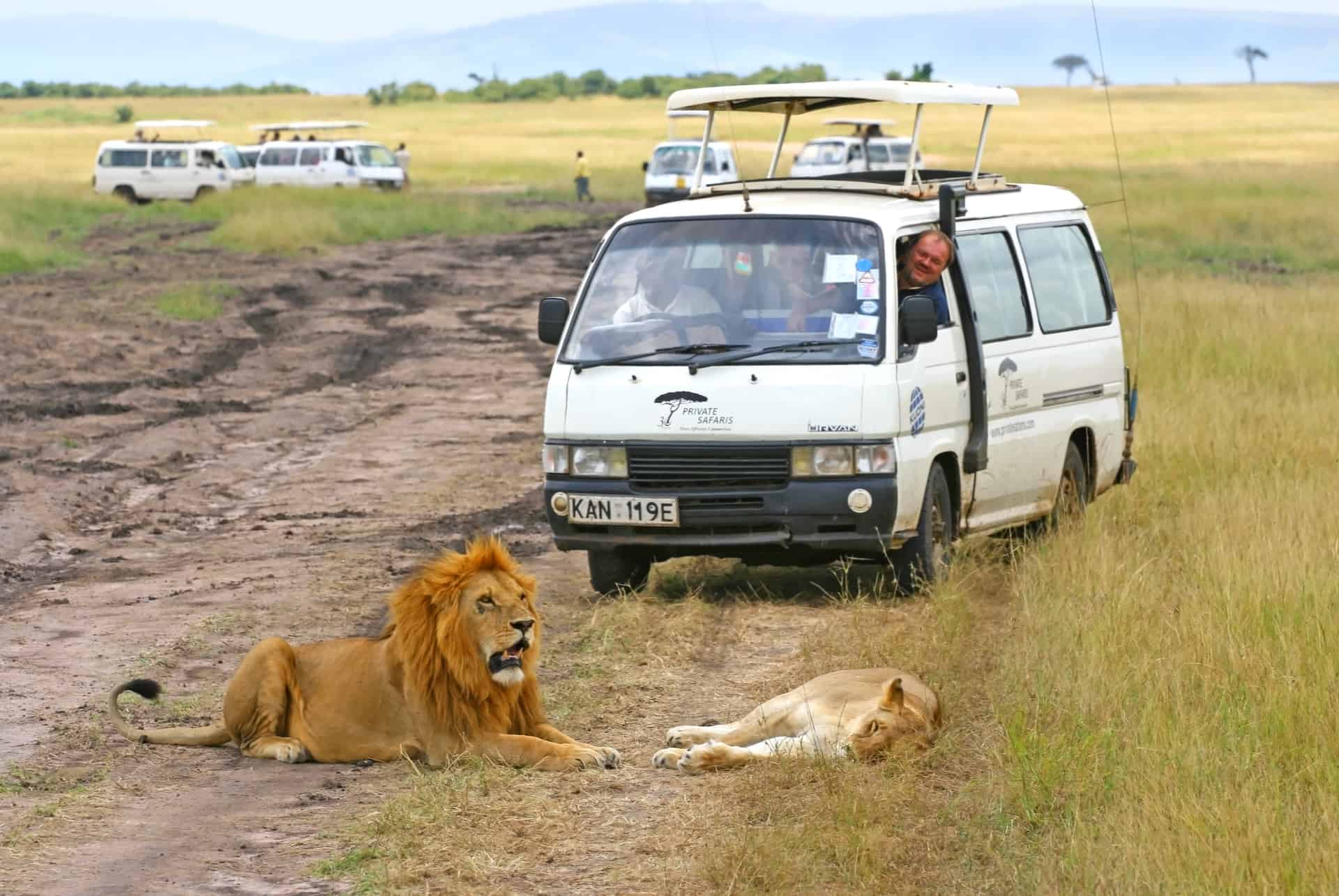
Votre agence de voyage peut vous planifier un séjour sur place selon vos goûts et désirs. Il s’agit le plus souvent de circuits tout compris (vol compris) que vous aurez choisis parmi une liste ou d’un séjour sur mesure . Quoiqu'il en soit vous serez accompagné par un guide ou par un ranger, bref par un professionnel, un réel avantage si vous n'y connaissez rien 😉
Des programmes types sont prévus notamment des game drive à savoir des excursions de 3 à 4 heures à travers la brousse et la savane avec des itinéraires prédéfinis . Ces excursions peuvent aussi avoir lieu de nuit ce sont les night drive . Cela vous donnera l’occasion de voir les animaux chasser la nuit grâce à de grosses lampes torches accrochées au 4x4 ou à la Land Rover.
Vous avez même des safaris itinérants : un voyage personnalisé à travers les plus beaux parcs du pays. Le safari privatif est la solution qui vous permettra de profiter d’un safari avec un guide qui connaît le terrain par cœur. Vous aurez donc plus de chances de voir des animaux !
L'autotour / le circuit accompagné
C’est le même type de safari, mais vous serez en petit groupe : soit avec votre famille ou vos amis soit avec des étrangers. Les groupes sont généralement constitués de 12 personnes (6 par véhicule). Vous ferez les excursions à bord de 4x4 ou de Land Rover avec des sièges surélevés.
Voici d'ailleurs un safari de ce type : 3 jours au départ de Nairobi vers la réserve naturelle de Masai Mara . Vous serez pris en charge à vôtre hôtel à Nairobi le matin et partirez vers Masai Mara. Le premier jour, vous passerez par le point de vue de la vallée du Grand Rift. Vous partirez le soir en excursion pour observer les animaux sauvages de la réserve. Le 2e jour, vous partirez à la recherche du Big Five et pique-niquerez dans la savane. Ce jour-là, vous irez jusqu'à la rivière où les gnous traversent le Mara depuis le Serengeti.
Le dernier jour, vous reprendrez la route vers Nairobi à moins que vous ayez choisi une option comme le tour en montgolfière. Si vous voulez en apprendre davantage sur cette réserve, je vous conseille de lire mon article dédié à la visite du Masai Mara au Kenya . Prix du safari ? Environ 385 € par personne.
Combien coûte un safari au Kenya ?
Il y a beaucoup de paramètres à prendre en compte pour établir un budget safari au Kenya . Selon le type de safari, vous vous devrez penser à plus ou moins de choses. Si vous partez avec une agence, vous n'aurez qu'à consulter leurs offres mais si vous organisez vous-même votre safari voici le budget pour un safari au Kenya .
Prix du vol France - Kenya
Pour trouver un vol pas cher, la meilleure solution sera d'utiliser un comparateur de prix de vol comme Skyscanner . Vous devrez définir vos dates de séjour, vos horaires de vol souhaitées et même votre budget. Ne comptez pas moins de 500 € en moyenne l’aller-retour.
Si les compagnies “ Air France ” ou “ Kenya Airways ” proposent des lignes directes vers le Kenya, d'autres proposent des vols avec escale, c'est par exemple le cas d' Ethiopian Airlines et cela rend le vol bien moins cher . Le trajet sera plus long et pénible mais c'est un bon moyen de faire des économies .
Prenez-vous bien à l'avance et si vous ne comptez pas réserver immédiatement, choisissez l' onglet de navigation privée pour ne pas voir les tarifs augmenter lors de votre retour sur le site quelques jours plus tard. Notez que vous atterrirez soit à l’ aéroport de Nairobi , la capitale, soit à Mombasa à 500 km de là.
Prix de l'hébergement durant un safari au Kenya
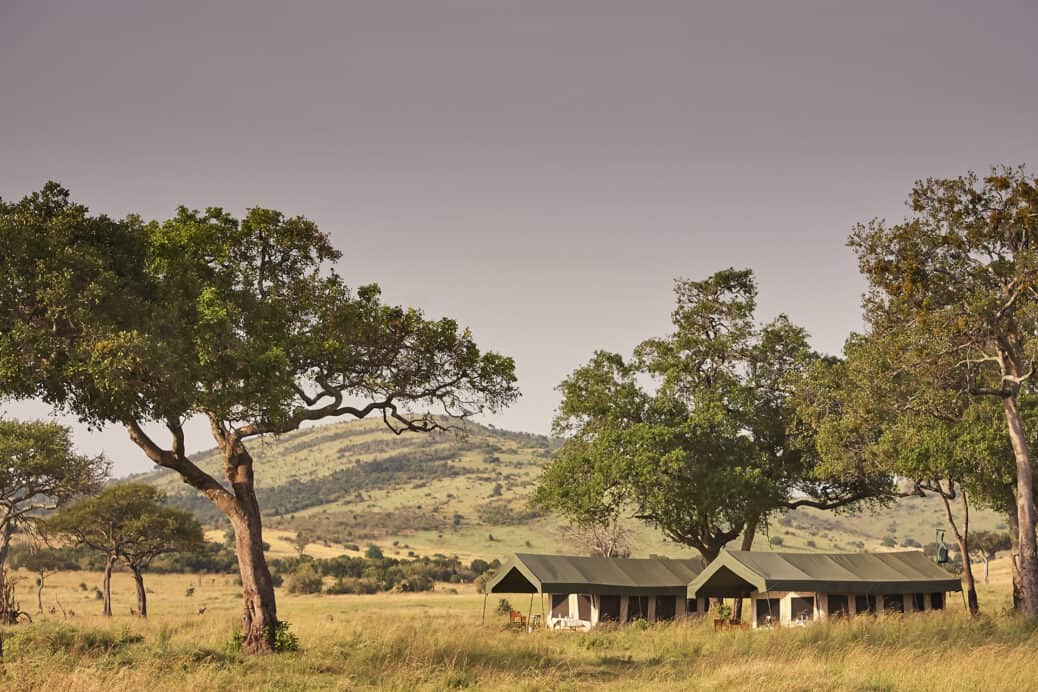
Si vous avez opté pour un self drive safari à savoir un safari avec un véhicule que vous conduirez vous-même, vous pourrez faire du camping, voire même dormir dans votre véhicule tout équipé .
Vous pouvez aussi opter pour un hébergement en hôtel (du 2 au 5 étoiles). Des sites comme Booking proposent un large éventail de choix pour passer quelques nuits au cœur des parcs et réserves.
Si vous avez réservé un safari sur mesure à savoir safari + hébergement , vous logerez sûrement dans des lodges aussi appelés hôtels de brousse . Il peut s’agir aussi bien de chambres sur pilotis que de chambres luxueuses. Leur petit plus ? Vous aurez un super point de vue sur les animaux. Bien évidemment ce genre de circuit propose aussi des hébergements en camping.
Voici donc un exemple de chaque type d'hébergement de ma sélection personnelle :
- Le Jambo Mara Safari Lodge est un lodge situé au coeur de la réserve de Masai Mara. Comme pour la plupart des lodges, les prix par nuit sont assez élevé mais celui-ci se trouve dans la moyenne basse avec 288 € tout en proposant des services de qualité : balcon d'observation dans chaque chambre, tous les repas sont compris et activités sportives.
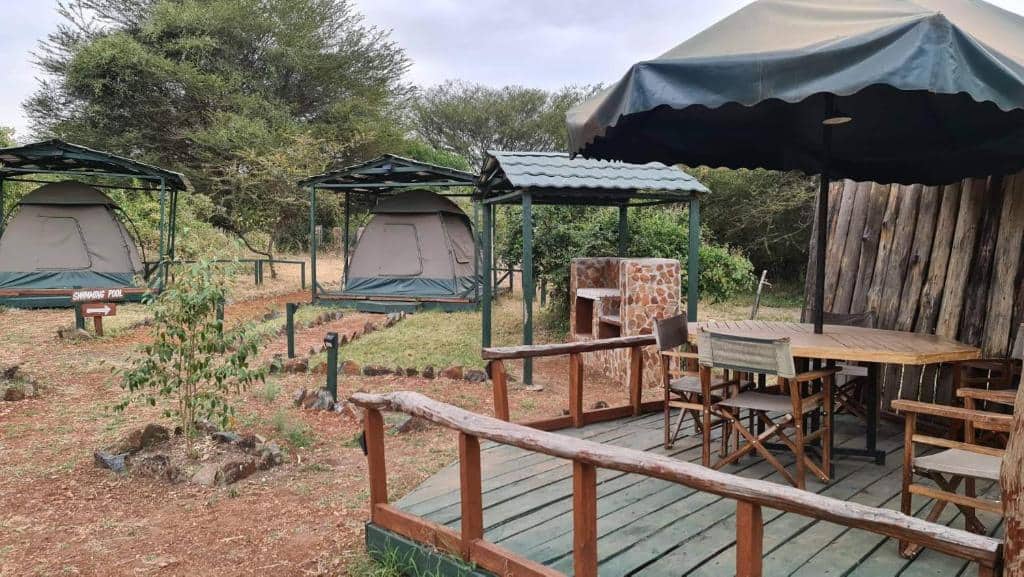
- Greenwood Safari Camp est l'un des meilleurs campings au Kenya et se situe lui aussi dans la réserve naturelle de Masai Mara . Vous ne profiterez bien sûr pas de services similaires au lodges luxueux mais le tarif y est très attractif : 38 € par nuit . En ajoutant 5 € vous profiterez même d'un petit-déjeuner. Le campement dispose aussi d'aires de jeux pour les enfants, c'est selon moi la meilleure façon de s'immerger intégralement dans l'aventure que représente un safari 🤩
Tarifs des entrées dans les parcs et les réserves
Ils diffèrent d’un parc à un autre et ils ne sont pas les mêmes pour les locaux et les touristes. Prévoyez en moyenne 50 à 60 $ pour un adulte et 30 à 40 $ pour un enfant.
Notez que la monnaie du pays est le “ shilling kényan ” (KSH), mais vous pouvez utiliser le dollar américain . Vous pouvez payer par carte bancaire ou retirer de l’argent dans un distributeur automatique. À titre informatif 100 KSH = 0,76 €.
Les meilleurs parcs pour faire un safari au Kenya
Le Kenya compte une quarantaine de parcs et réserves animalières . Certains sont nationaux, d’autres privés. Voici selon moi les 10 meilleurs parcs du pays et je vous conseille d'en visiter au moins 2 voire 3 si vous partez pour une longue durée.
1 - Le Parc National d’Amboseli
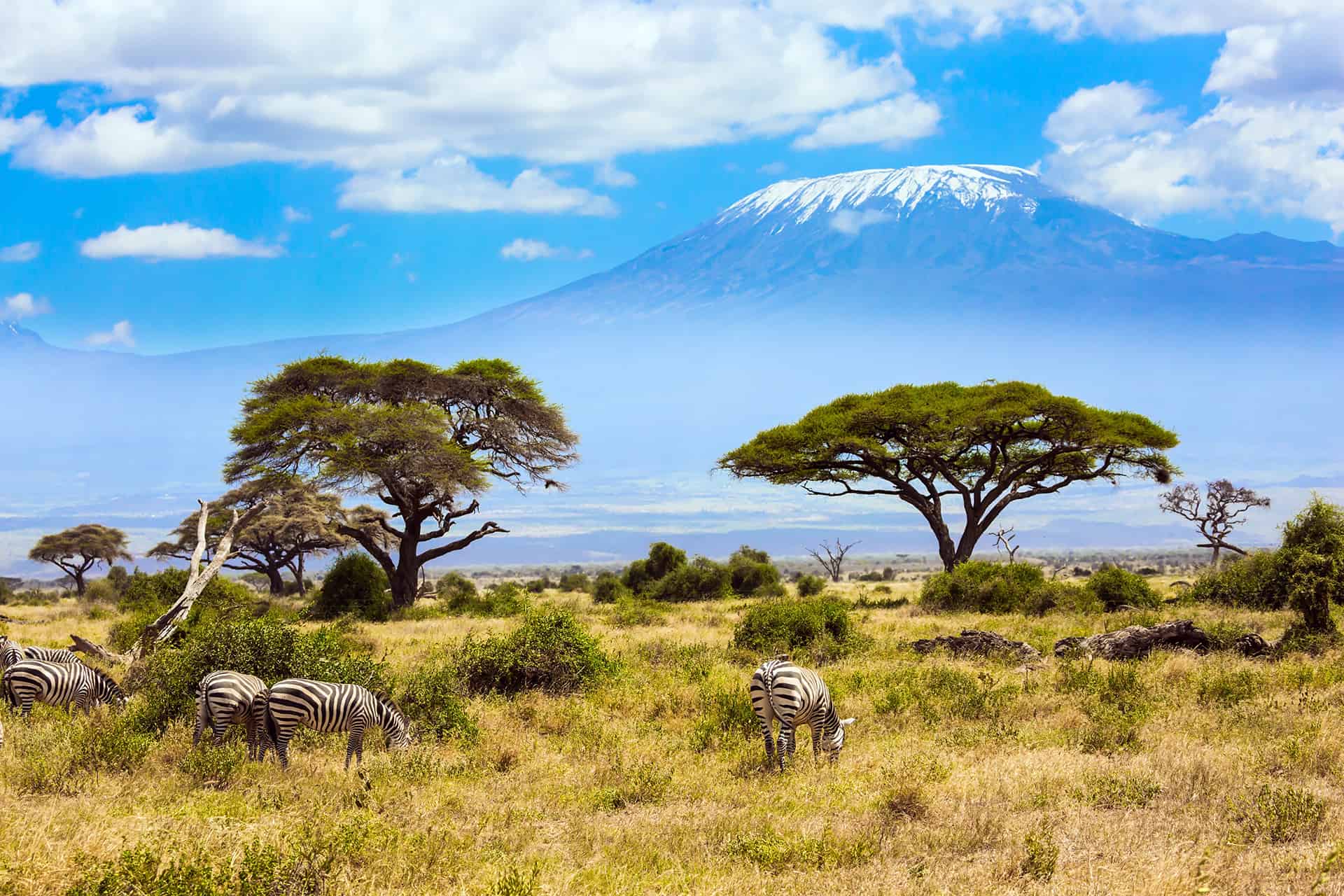
C'est sans aucun doute l'un des plus beaux parcs du continent africain et donc l'un des meilleurs pour faire un safari au Kenya. C'est le parc le plus connu et vous avez déjà forcément vu une photo prise dans ce parc avec le Kilimandjaro en arrière plan 🙂
Sur ses 392 km² , divers écosystèmes se côtoient : des plaines, des forêts d’acacias, mais aussi des étendues désertiques et des marécages. D'ailleurs il a été classé réserve de biosphère de l’UNESCO.
Le parc abrite des éléphants (le plus grand nombre dans le pays), des guépards , des girafes , des impalas, des gazelles. Mais il y a aussi des tas d’oiseaux qui y vivent comme des grues , des ibis sacrés, des hérons et des marabouts.
Le top dans ce parc c’est que vous y aurez un cadre exceptionnel à savoir une vue exceptionnelle sur les neiges éternelles du mont Kilimandjaro (5 895 mètres). L’accès est aussi très facile depuis Nairobi ! Le hic, c’est qu’il est très fréquenté . Le parc est ouvert tous les jours de 6h à 19h .
Depuis Nairobi, je vous propose une excursion à la journée au parc national d'Amboseli . Celle-ci comprend l'entrée au parc avec votre camionnette au toit ouvrant. Le midi, vous déjeunerez dans un lodge luxueux et un guide professionnel vous emmènera au plus proche des animaux sauvages. Prix de l'excursion avec prise en charge de votre hôtel à Nairobi : environ 295 € .
Tarifs d’entrée :
- Adulte : 70 $
- Enfant (moins de 18 ans) : 20 $
- Véhicule : 2,73 $
2 - La Réserve Nationale du Masai Mara
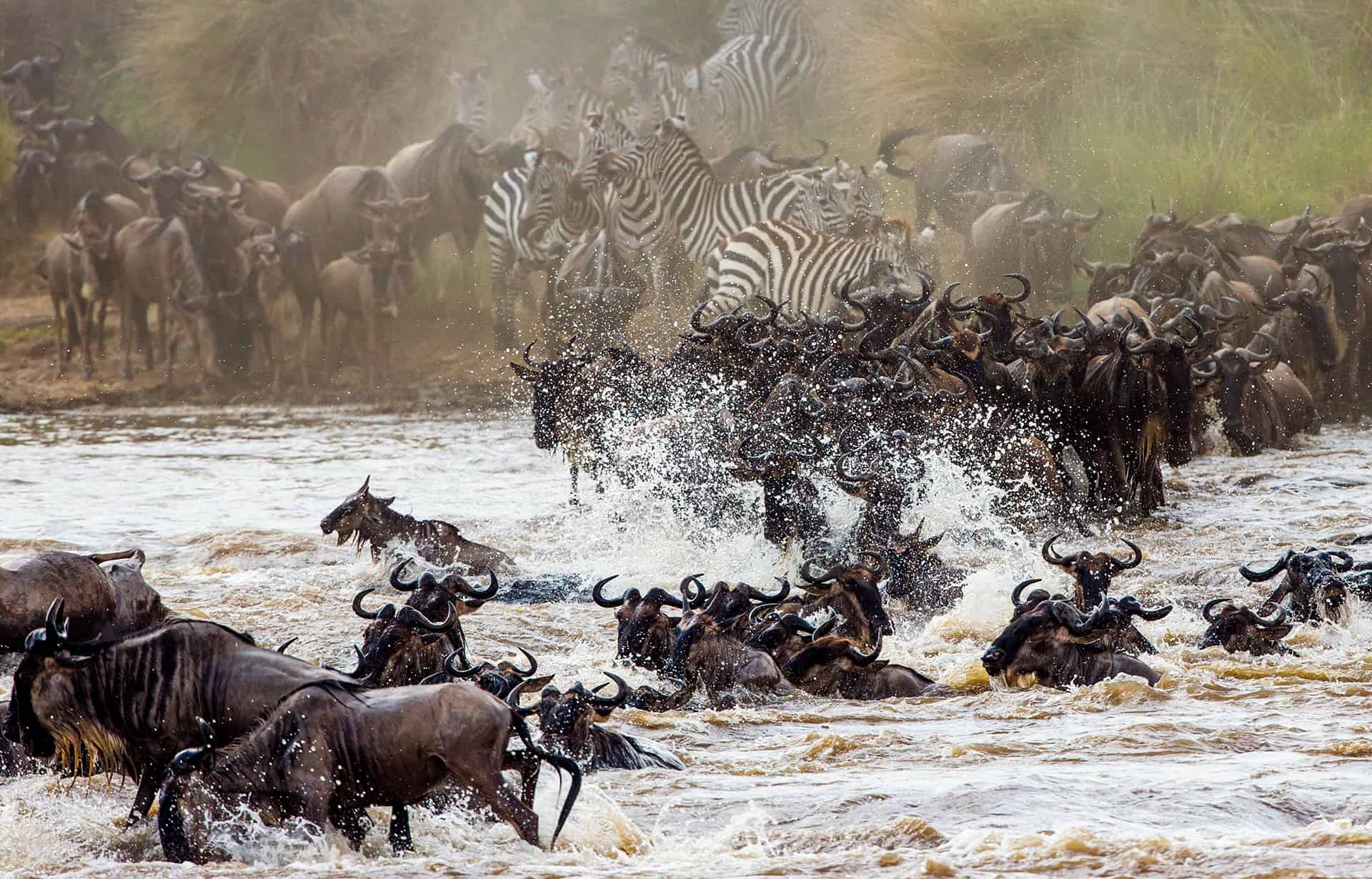
Je vous en parle depuis le début, située dans le sud-ouest du Kenya à la frontière avec la Tanzanie , la Réserve de Masai Mara ou Maasaï-Mara s’étend sur 1 510 km² et se trouve en altitude (1 500-2 100 mètres).
Elle s’appelle ainsi car la célèbre tribu des Masaïs y vit. Vous pourrez d'ailleurs visiter un village Masaï dans une des zones de conservation du parc. Elle est aussi traversée par une rivière, la Mara .
C’est une réserve unique au monde avec des paysages variés : des plaines, des collines, des falaises, de la savane, des marécages, des ruisseaux... Vous pourrez y observer les “Big Five”, mais surtout de nombreux herbivores comme des zèbres , des gazelles ou des gnous. Cette réserve est en effet leur lieu de migration préféré de mi-juillet à fin septembre et c’est un super spectacle inoubliables !
Près de la rivière Mara, vous verrez aussi des crocodiles et des hippopotames ainsi que de près de 470 espèces d’oiseaux dont des martins-pêcheurs , des vautours et des aigles.
Le top, c’est que vous avez la possibilité de faire un vol en montgolfière au-dessus du parc. Le hic ? La réserve du Masai Mara est une des plus visités du pays surtout en haute saison !
- Enfant (moins de 18 ans) : 40 $
Tester le montgolfière au kenya 🪂
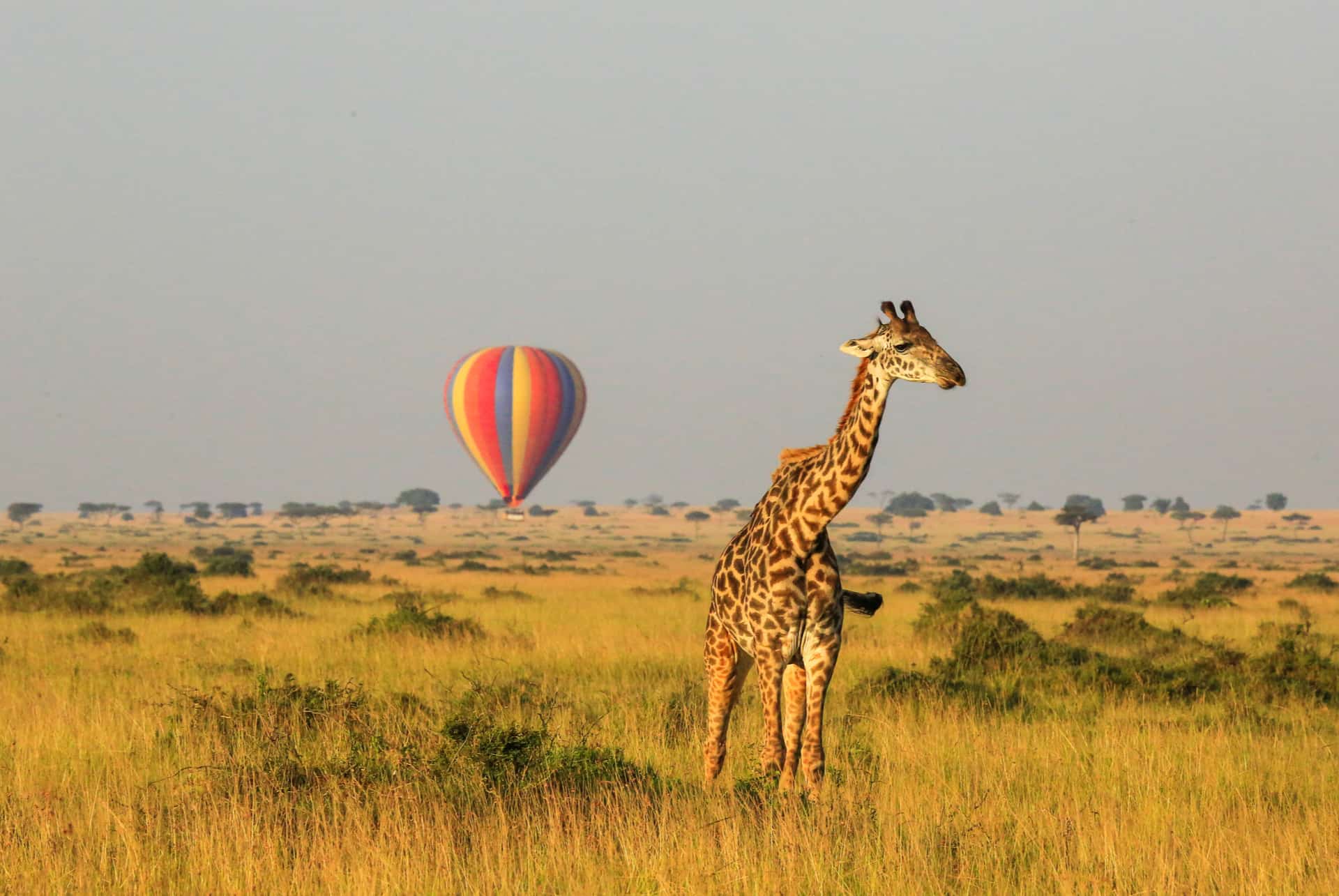
Pour finir un safari au Kenya en beauté, rien de plus marquant que d' embarquer à bord d'une montgolfière . Vous décollerez au petit matin pour admirer le lever du soleil et les animaux en contrebas. Le vol durera environ 1 h 10 et quand vous atterrirez, l'on vous proposera un buffet de petit déjeuner continental accompagné de champagne . Votre safari en montgolfière se terminera par un transfert vers votre hébergement en Jeep ouverte pour faciliter l'observation des animaux. Pour ce moment luxueux et privilégié prévoyez tout de même un budget d'environ 390 € 🙂
3 - Le Parc National Tsavo
Le Parc National Tsavo est la plus grande réserve du pays (4% de la superficie du Kenya – 20 812 km² ) ainsi qu’une des plus anciennes. Elle est divisée en deux parties : Tsavo Est et Tsavo Ouest .
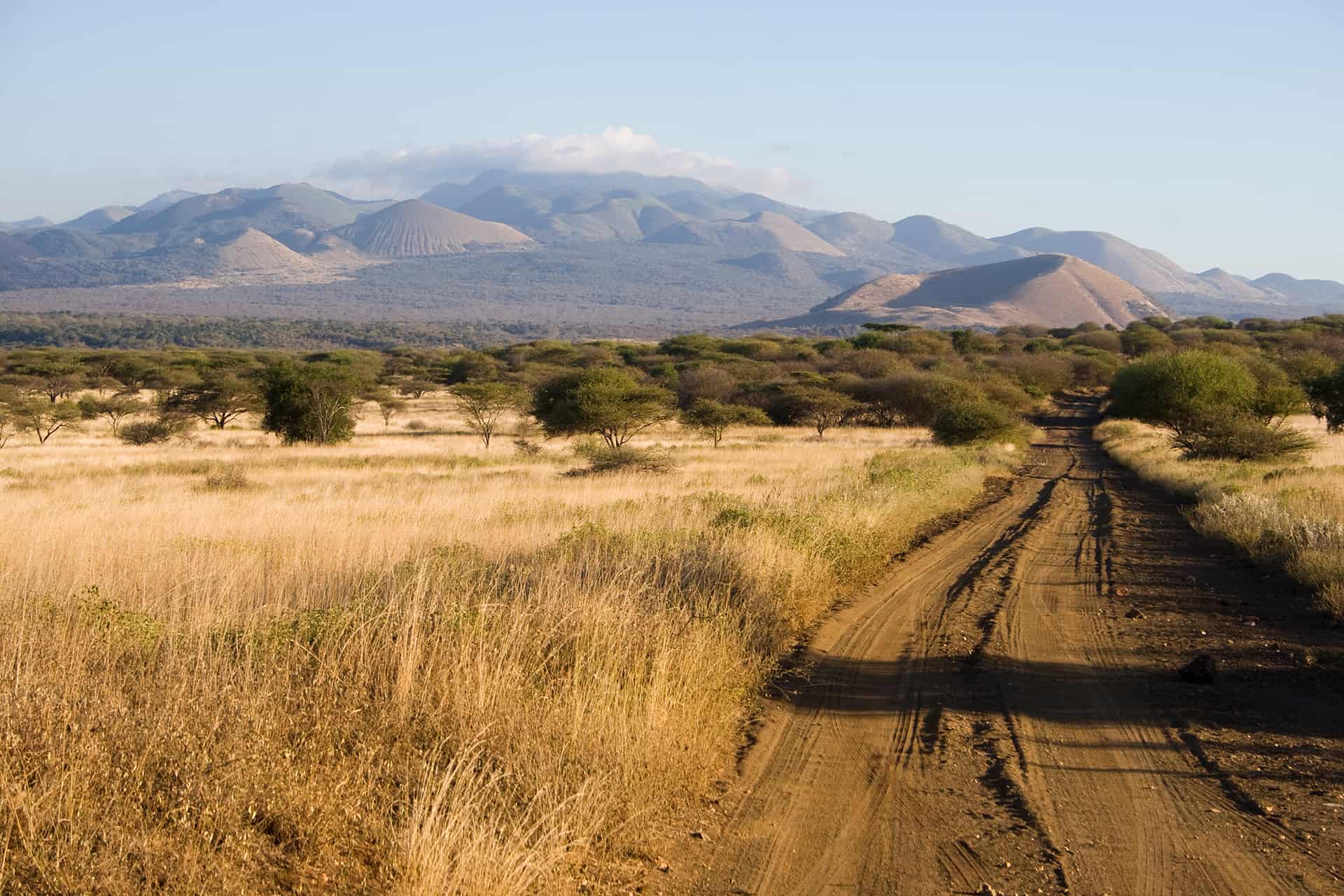
C'est une superbe région volcanique à la terre rouge et ocre avec des paysages à couper le souffle, très différents d’une partie à l‘autre. Il y a des collines, une chaine de montagnes ( Taita Hills – 2 200 m d’altitude), de la brousse, des rochers et de grandes plaines avec de nombreuses sources.
Le parc est tellement grand que vous aurez du mal à apercevoir les différents animaux qui y vivent notamment les fameux “ éléphants rouges ” de Tsavo. Vous aurez peut-être la chance d’observer des girafes ou encore des léopards à l’est et des crocodiles et des hippopotames à l’ouest. Le parc abrite aussi des chacals et de nombreuses lionnes avec leurs lionceaux.
Plus de 500 espèces d’oiseaux y ont trouvé refuge dont l’ autruche de Somalie , des pintades, des guêpiers de Révoil ou des alouettes. Le parc national Tsavo Ouest est ouvert tous les jours de 6h00 à 19h00 .
- Adulte : 60 $
4 - Le Parc de Nairobi
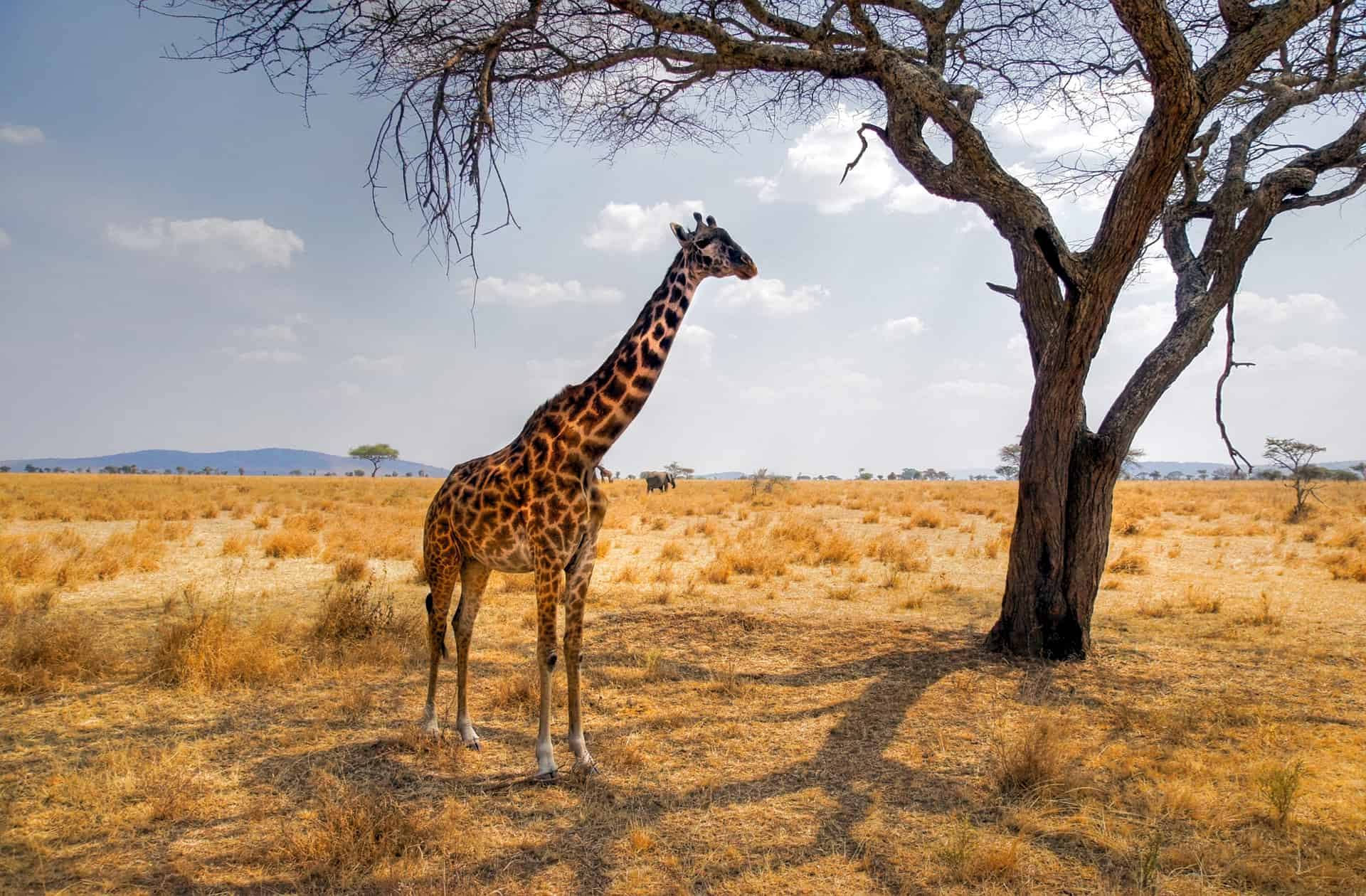
Le Parc de Nairobi est un petit parc (114 km²), idéal pour les safaris en famille surtout parce qu’il se trouve à à peine sept kilomètres de Nairobi.
Il n’y a pas beaucoup éléphants dans ce parc, mais vous pourrez y voir des lions, des guépards, des rhinocéros, des zèbres, des élans, ou encore des autruches. Beaucoup de girafes dont des girafes réticulées (une espèce avec un pelage composé de carreaux en forme de polygones).
C’est le meilleur endroit pour observer le petit koudou (une antilope) et des rapaces comme l’aigle. Le parc est ouvert de 6h à 18h . Je vous propose d'ailleurs une excursion guidée au parc national de Nairobi qui durera le temps d'une journée. Pour cela, vous dépenserez environ 68 € par personne.
Tarifs d’entrée sans guide :
5 - Le Parc National Nakuru / Lac Nakuru
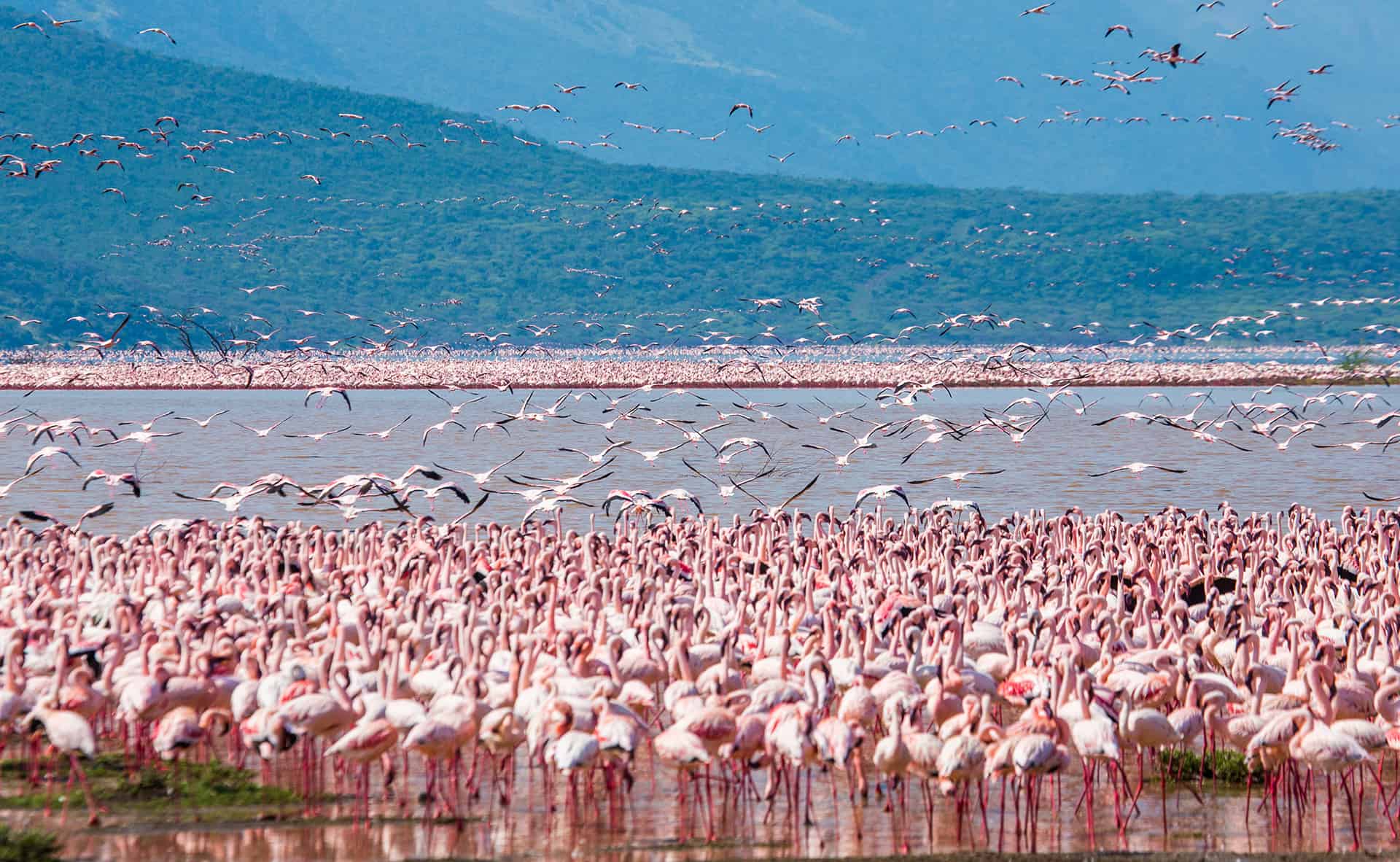
Situé au nord de Nairobi et classé au patrimoine mondial de l’UNESCO, le Lac Nakuru (200 km²) est un des parcs incontournables à faire !
Dans ses prairies et forêts, vous pourrez voir la plus grande concentration de rhinocéros blancs du Kenya , mais également des rhinocéros noirs. Il abrite aussi d’autres animaux sauvages comme des lions et des buffles ainsi que de nombreuses espèces d’oiseaux.
Le parc est juste magnifique : vous devez vraiment aller le voir ne serait-ce que pour son superbe lac turquoise et ses volcans ! Pour moi il a fait partie de mon itinéraire pour mon safari au Kenya par deux fois déjà !
6 - Le Domaine de Samburu, mon coup de cœur pour un safari au Kenya
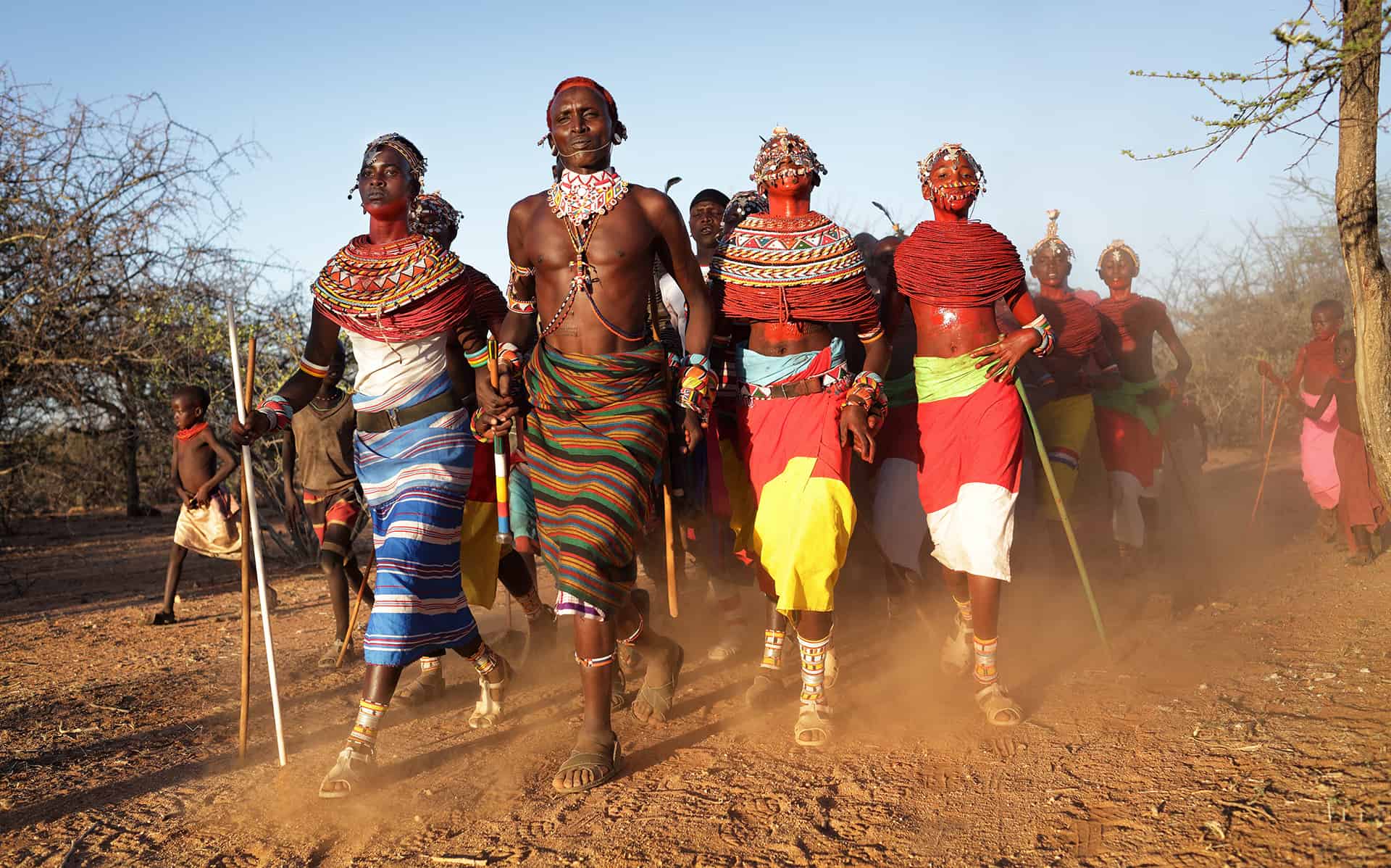
Situé au nord du pays, c'est l'un des parcs les moins connus du pays . Il est par conséquent l'un des moins fréquentés, ce qui est plutôt un avantage. Pourtant c’est un vaste espace naturel qui regroupe la Réserve de Shaba et celle de Buffalo Springs soit une superficie de 844 km².
Dans son climat semi-aride, vous pourrez observer des éléphants, des léopards, des crocodiles, des zèbres et des oryx . Et si vous avez de la chance des lions, des léopards, des guépards, des hyènes et même des lycaons .
Si vous en avez l’occasion, allez voir les Samburu , une tribu nomade originaire du Soudan . Ils vous feront découvrir leur culture et leurs traditions avec grand plaisir. Si vous souhaitez passer quelques nuits sur place, vous aurez peut-être l’occasion de dormir dans une de leurs huttes traditionnelles.
7 - Le Parc National des Aberdares
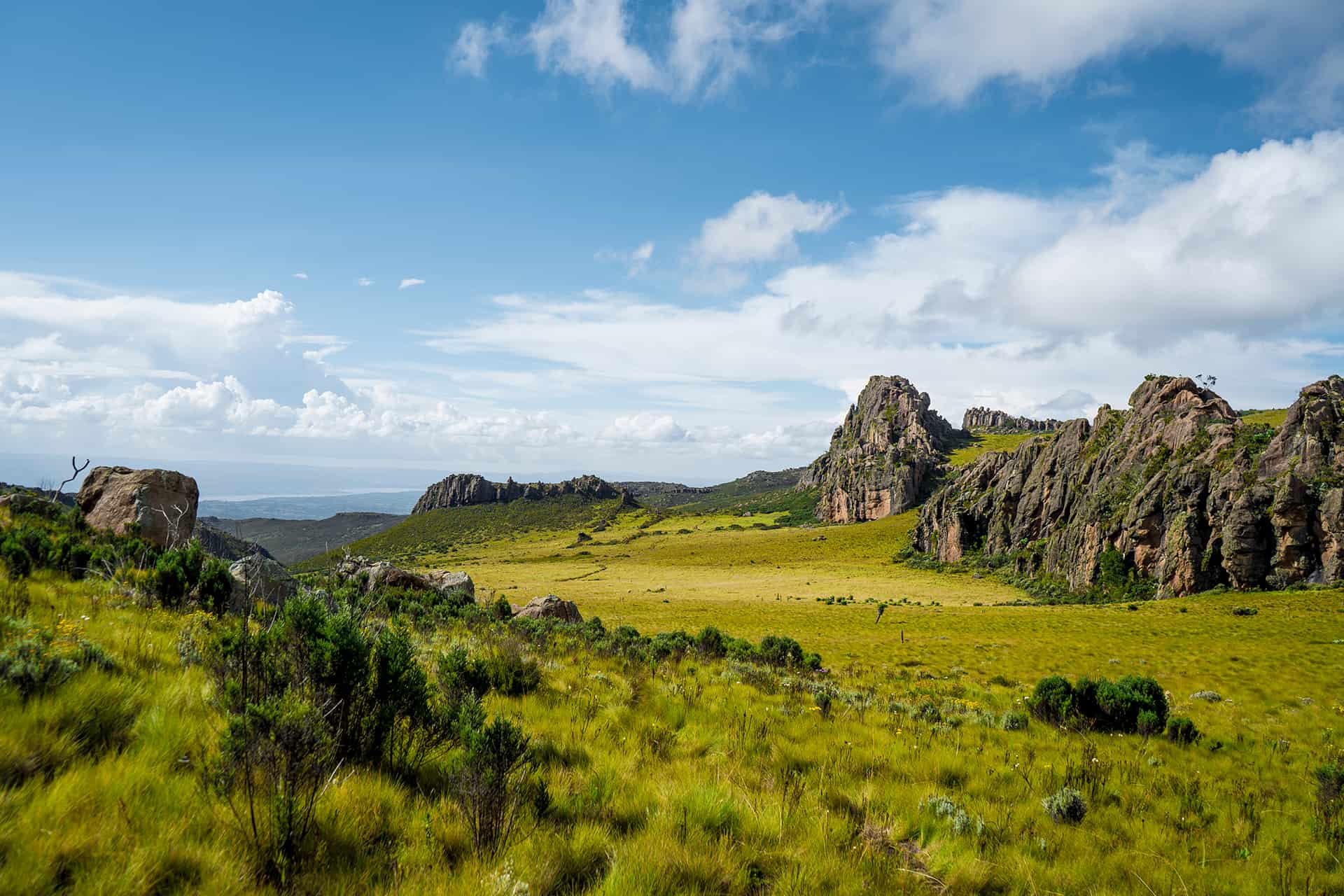
Situé à 4 000 m d’altitude, le Parc des Aberdares propose une expérience différente du safari. On y trouve en effet une végétation tropicale et dense avec de nombreuses forêts avec des rivières et des cascades. La possibilité donc pour vous de voir des singes !
Il y a aussi des montagnes et des vallées où se regroupent les éléphants, les buffles, les lions et les guépards. J'ai découvert ce parc lors de mon deuxième safari au Kenya. Pour plus d'infos sur ce parc, rendez-vous sur le site officiel 🙂
8 - Le Parc National de Méru
Situé à 200 km au Nord Est de Nairobi, le Parc de Méru est aussi un des parcs les moins fréquentés du Kenya. Pourtant dans ses 870 km² de zone humide, vous verrez des paysages très variés (des marais et des hautes herbes) et des animaux très divers comme l’oryx, le koudou et le gerenuk .
Près de 427 espèces d’oiseaux vivent dans ce parc. C'est dans ce parc que vous pourrez admirer les plus belles girafes d’Afrique.
9 - La Réserve privée Lewa Downs
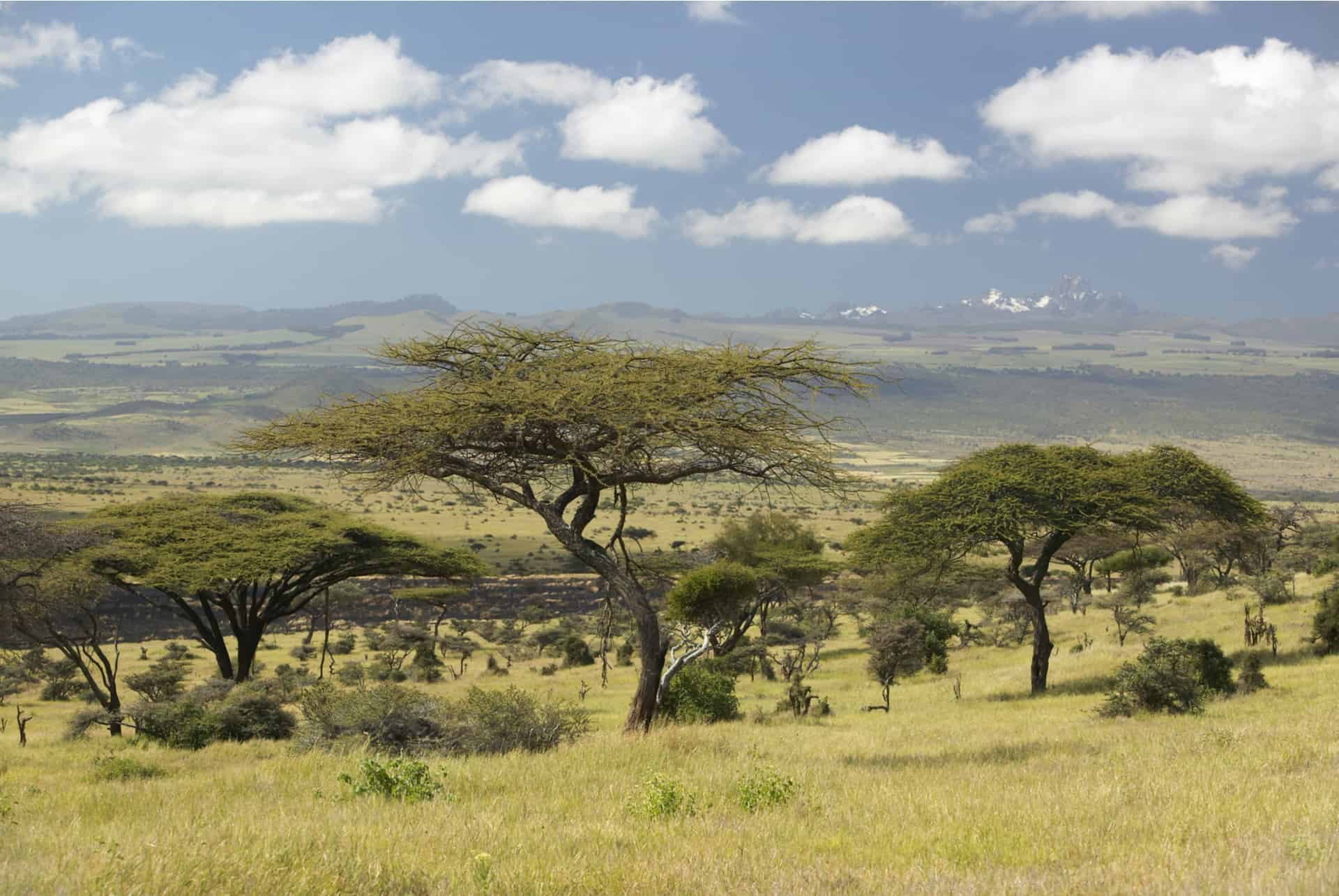
La Réserve privée Lewa Downs se trouve à 200 km de Nairobi. Ce n’était qu’un simple ranch au départ, mais cette propriété, créée par la famille Craig , est devenue un vrai sanctuaire pour les animaux (The Lewa Wildlife Concervancy). Et depuis 1922, elle passe de génération en génération.
Dans cette petite réserve de 242 km² située à 2 000 mètres d’altitude, avec des forêts de cèdres et des plaines, vous pourrez observer des rhinocéros blancs et noirs, des lions, des éléphants, des chacals ainsi que des zèbres et des girafes.
Si vous avez envie de vivre un safari au Kenya plus intimiste et luxueux, c’est dans cette réserve que vous devez absolument aller ! Pour plus d'informations et pour réserver, rendez vous sur le site officiel 🙂
10 - La Réserve Nationale de Shimba Hills
La Réserve Nationale de Shimba Hills se trouve à 33 km de Mombasa , sur la côte de l’océan Indien. C'est l'endroit parfait pour démarrer un safari si vous ne savez pas que faire à Mombasa .
C'est un petit safari de luxe de 2h30 environ (200 km²) qui vous permettra quand même de voir les principaux animaux sauvages du Kenya : des éléphants, des antilopes, des buffles et plus...
Si vous avez envie de faire un safari tout en voulant faire une bonne action, cette réserve est faite pour vous. Votre safari vous permettra de contribuer à la sauvegarde et à la protection du parc géré par la Kenya Wildlife Reserve .
- Adulte : 25 $
- Enfant (moins de 18 ans) : 15 $
Quand partir au Kenya ?
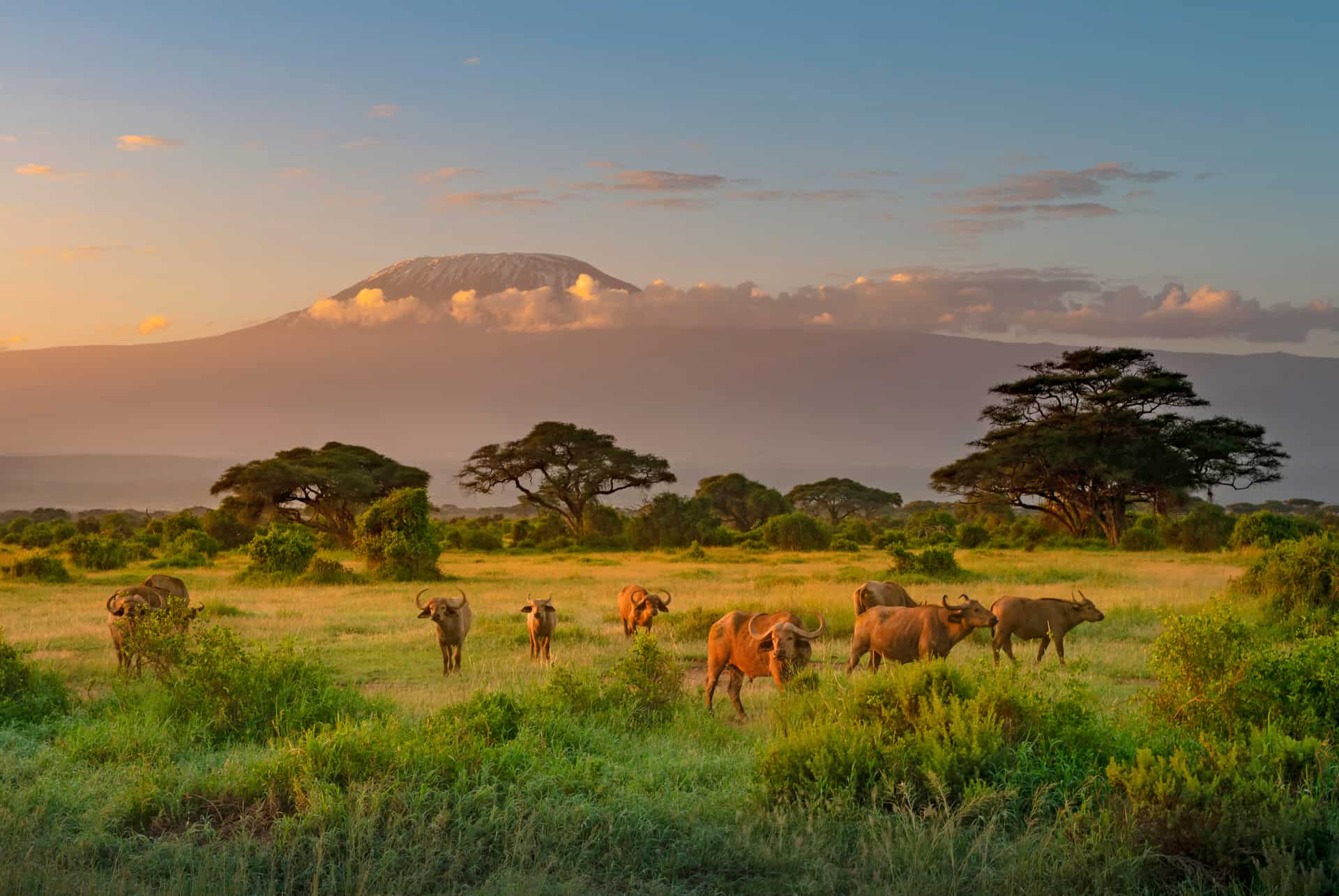
Vous pouvez faire un safari au Kenya tout au long de l’année, car peu importe la saison, les températures sont agréables (30 °C en moyenne) et les animaux se feront voir.
Néanmoins, la période qui va de juin à novembre est l'une des meilleures. Pourquoi ? Car il s'agit d'un juste milieu entre la saison des pluies un peu avant et l'été sec juste après. Cette période vous fera profiter d’un temps moins sec et moins chaud, d’une végétation bien plus verte et moins haute où les animaux ne pourront pas se cacher. C’est aussi une période de forte migration chez de nombreux animaux (notamment celle des gnous).
Vous pouvez bien sûr partir faire un safari pendant la saison des pluies et c’est bien moins cher , mais attendez-vous à des sols gorgés en eau et donc à des déplacements beaucoup plus difficiles. Surtout si vous avez décidé de faire un safari avec un véhicule de location !
Notez que cette période est l'une des plus fréquentées par les touristes, vous ne serez donc pas seuls sur place ! Mais pour en apprendre davantage sur la meilleure période, je vous recommande mon article quand partir au Kenya 😉
Les formalités administratives
Pour partir faire un safari au Kenya , il vous faut obligatoirement un visa de tourisme . Vous pouvez en faire une demande auprès de l’ambassade du pays, auprès d’une agence spécialisée ou de votre agence de voyage. Quoiqu'il en soit, prenez-vous au plus tard 2 semaines avant votre départ, le plus tôt sera le mieux.
Pour ces démarches, vous aurez besoin d’un passeport en cours de validité (+ 6 mois après la date de retour) avec au moins une page vierge , votre billet aller-retour pour le Kenya , vos réservations sur place ainsi qu'une photo d’identité .
Bien sûr vous pouvez effectuer cette démarche en ligne et bénéficier d'un visa électronique (E-Visa) , il vous suffit de remplir le formulaire sur le site (renseignements personnels, cordonnées, date et durée du séjour...), d’effectuer votre paiement (par CB) puis de télécharger, votre E-Visa au format PDF .
Vous obtiendrez votre visa en quelques jours. Il est valable 90 jours et coûte 40 € par personne, sans compter les suppléments si vous passez par une agence ou si vous le demandez sur internet (entre 50 et 80 euros en moyenne).
Attention, ne vous y prenez pas non plus trop tôt car le visa de tourisme n'est valable que 90 jours, soit 3 mois. Si votre séjour dure 2 semaines, je vous conseille de vous y prendre 1 mois à l'avance 😉
Faut-il des vaccins pour aller au Kenya ?
Avant votre départ, je vous conseille quand même d'aller consulter votre médecin traitant. Il regardera si vos vaccinations sont à jour et vous recommandera sûrement d'autres vaccins dont celui de l’ hépatite A (1 injection 15 jours avant le départ) et de la fièvre jaune (au minimum 10 jours avant le départ).
ll vous conseillera peut-être également de prendre des traitements préventifs contre le paludisme et vous donnera des conseils contre les piqûres de moustiques. Je ne préfère pas m'engager sur ce point, chaque médecin fonctionne différemment et je ne suis pas médecin ! 🙂
Faut-il une assurance voyage pour voyager au Kenya ?
Bien plus complète que l’assurance comprise avec votre carte bancaire, je vous conseille de choisir une assurance voyage . Celle-ci vous permettra de partir sereinement au Kenya. En effet, elle vous permettra d’être mieux couvert en cas de pépins au cours de votre voyage : blessures, hospitalisation sur place, rapatriement.
Ne passez pas outre d’autant plus que vous pouvez en choisir une pour quelques dizaines d’euros seulement ! Ce n’est vraiment pas cher payé pour voir ses frais médicaux remboursés et profiter d'autres garanties comme la responsabilité civile ou l’assurance bagages !
Si vous ne savez pas laquelle choisir, vous pourrez faire un choix facilement après avoir lu mon comparatif des assurances voyages .
Que mettre dans vos bagages ?
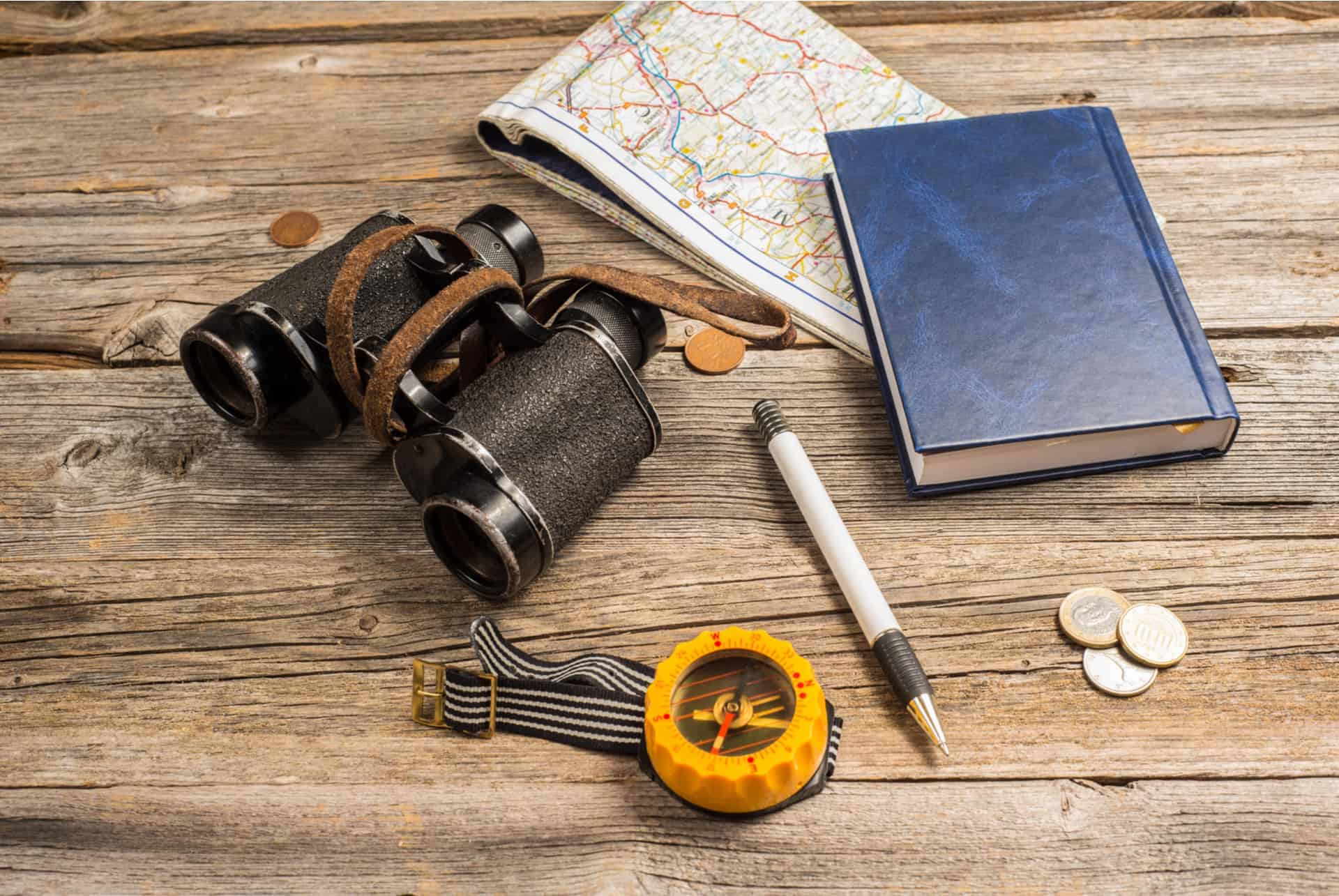
Comme je l’ai dit, il fait bon toute l’année, vous n'aurez donc pas besoin de vêtements d'hiver. Une petite laine suffira pour les randonnées du matin et du soir. Par contre, prévoyez des vêtements simples et confortables . Évitez les couleurs vives (même le blanc et le noir) et privilégiez les tons neutres qui se fondent dans la nature (comme le kaki ). Optez de préférence pour des manches longues et des pantalons à la place des shorts, car vous devrez souvent marcher dans la broussaille. Un foulard peut aussi vous être bien utile contre la poussière.
Pour éviter les coups de soleil, emportez avec vous un chapeau / une casquette et des lunettes de soleil . Pensez aussi à la crème solaire et à l’après-soleil. Un baume à lèvres et une crème pour hydrater votre peau en fin de journée ne seront pas de trop !
Pensez au répulsif pour les moustiques , notamment si vous avez opté pour un hébergement en campement. La nuit, une moustiquaire peut être d’une grande utilité. Tout comme une bonne lampe frontale !
Santé et hygiène
Mettez dans vos bagages une trousse de premiers soins comprenant des médicaments pour les maux de tête, des sparadraps, des onguents/pommades et des antibiotiques pour les maladies dites du globe-trotteur (votre médecin vous en parlera). Emportez aussi avec vous un savon pour laver vos vêtements et des lingettes humides pour vous rafraîchir.
Équipement photo/vidéo
Prenez un appareil qui vous permettra de bien prendre en photo ou vidéo les animaux lorsqu’ils sont loin (avec un téléobjectif permettant de zoomer) et lorsque la luminosité n’est pas très bonne (tôt le matin et en fin de journée). Une paire de jumelles ne sera pas de trop non plus !
Pensez à prendre une batterie de secours pour vos appareils et un adaptateur . Vous n’aurez pas forcément tout le temps accès à l’électricité (les générateurs ne fonctionnent pas 24 heures sur 24 dans les campements) N'oubliez pas non plus des cartes mémoires supplémentaires .
Vous pouvez acheter un petit trépied pour stabiliser votre appareil quand vous le pourrez (les 4x4 ont parfois des trappes sur le toit qui vous permettront de prendre de bonnes photos).
Et pourquoi ne pas prendre avec vous un guide sur la faune et la flore présentes sur place ? Cela vous permettra de mettre un nom sur ce que vous verrez ! Certaines agences de voyage vous en fournissent un.
Consignes et astuces pour voir les animaux lors d'un safari au Kenya
- Vous ne pourrez pas voir toutes les espèces animales dans un seul et même parc. Donc pour augmenter vos chances, visitez-en plusieurs !
- Vous verrez les animaux en bord de piste, sur la route où ils seront cachés dans la savane. Ne faites surtout pas de hors-piste !
- Les animaux que vous allez voir sont sauvages : gardez une distance de sécurité avec eux.
- N'attirez pas leur attention, ne les nourrissez pas !
- Attention, même si les attaques sont rares : ne descendez jamais de votre véhicule sans l’accord du guide ! Et préférez les safaris accompagnés par un ranger armé.
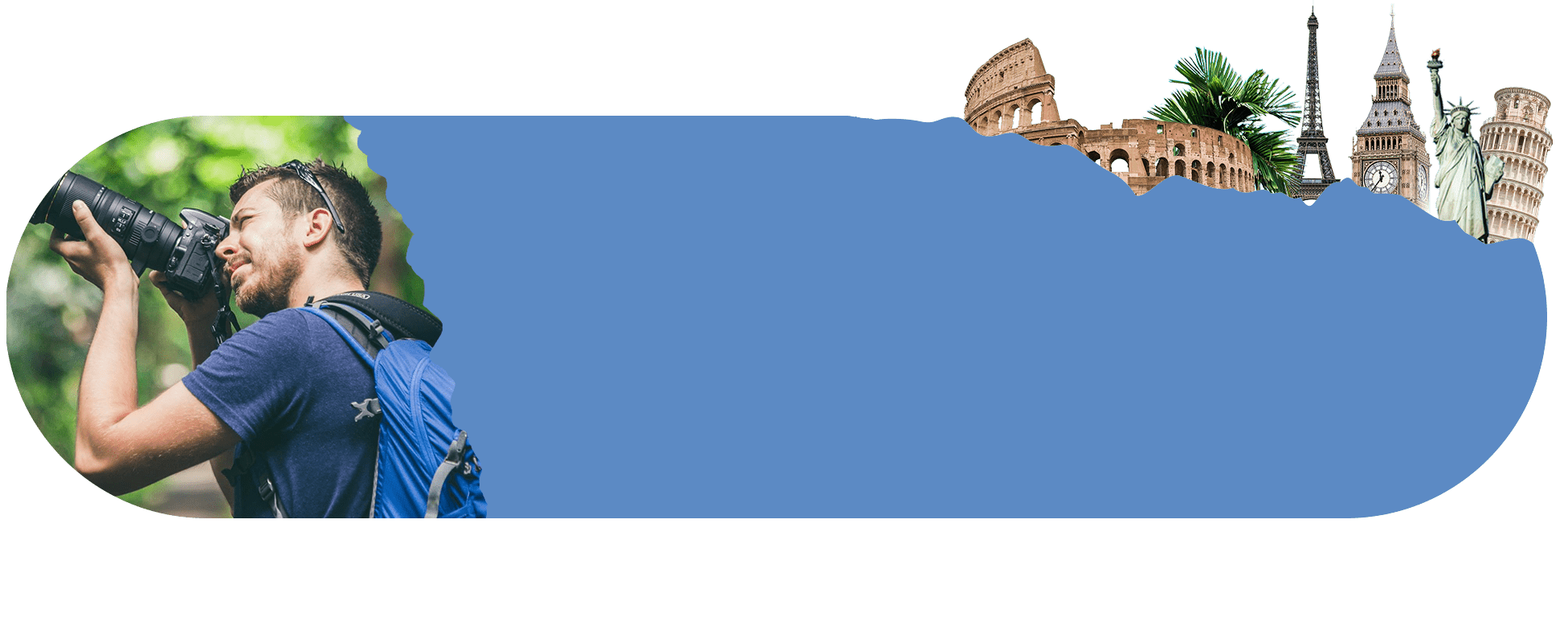
Les voyages ? Une passion ! Depuis 2013 (déjà !) je partage mes aventures sur ce blog voyage et je vous donne des conseils pour préparer vos prochaines escapades en Europe et un peu partout dans le monde !
Où partir en Avril au soleil ? Nos conseils
Les derniers articles
Marrakech en 3 jours
Où dormir au Cambodge ?
Le quartier de l’Alfama à Lisbonne
D’autres articles qui pourraient vous intéresser
Que faire au Kenya ?
Que faire à mombasa , 0 commentaires, soumettre un commentaire.
Votre adresse e-mail ne sera pas publiée. Les champs obligatoires sont indiqués avec *
Commentaire *
Enregistrer mon nom, mon e-mail et mon site dans le navigateur pour mon prochain commentaire.
Soumettre le commentaire
Nos conseils et bons plans
Inscrivez-vous et recevez chaque mois nos conseils et bons plans pour inspirer vos prochaines aventures !
Vérifiez votre boite de réception ou votre répertoire d’indésirables pour confirmer votre abonnement.
The Best Safari Destinations in Kenya
Amboseli national park.
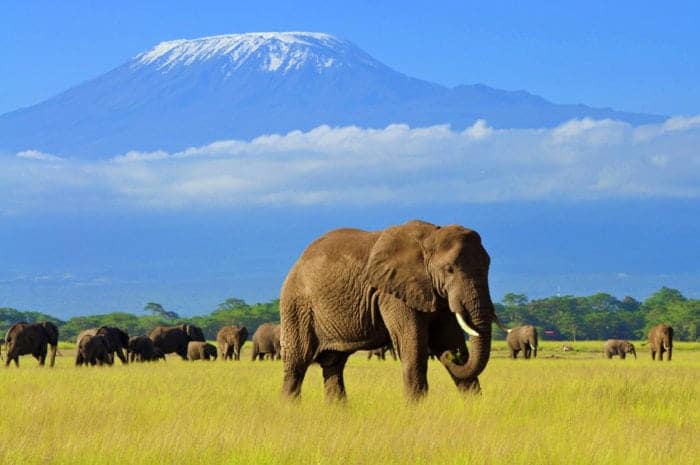
Great For : Elephants beneath Mount Kilimanjaro ; easy first-time safari.
Highlights : Accessibility, elephants, the mix of safari activities.
Is there a more poignant safari image than a herd of elephants roaming beneath Mount Kilimanjaro? That’s the highlight of Amboseli , a relatively small park with a lot to offer.
The mix of safari activities makes it a good first-time safari stop and it’s best to spend two or three days so you can try it all out. Expect incredible photos and wildlife viewing, with most of Africa’s famous animals (except for rhino) in one place.
Best Time to Visit Amboseli : June to September is best but it can feel very crowded in July and August. January to March before the rains is also prime.
Also Consider : The elephants of Chobe National Park (in Botswana).
Combine With : The Maasai Mara.
Lake Nakuru National Park
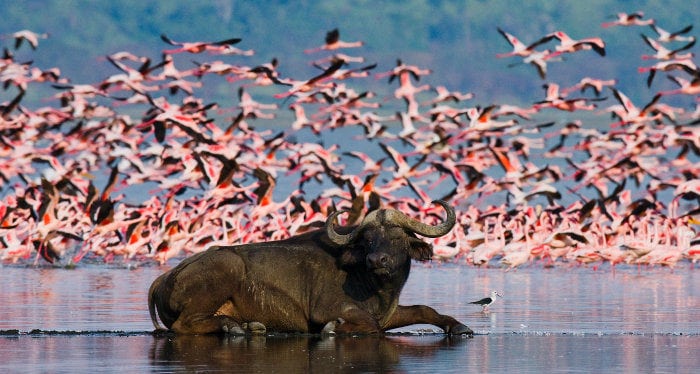
Great For : An easy one-day safari.
Highlights : Black and white rhinos plus a million flamingos.
Lake Nakuru is amongst the very best places to spot rhinos in East Africa . Although the park doesn’t always have that raw and wild feel synonymous with the rest of Kenya, seeing black and white rhinos in one place is incredibly rare.
The rest of the big five can also be found, along with a lake that’s coloured pink by all the flamingos . With its location and size, Nakuru becomes a popular stopping point on a longer Kenyan itinerary, although we’d recommend spending the night so you can go looking for leopards on a sunrise drive.
Best Time to Visit Lake Nakuru National Park : This is a year-round destination.
Also Consider : Kruger for rhinos (in South Africa).
Combine With : Any of the other Kenya safari destinations .
Lewa Wildlife Conservancy, Ol Pejeta Conservancy and Other Conservancies in Central Kenya

Great For : Luxury Kenyan safari.
Highlights : Intimacy with the big five ; wildlife conservation; personal encounters.
A number of private conservancies are found in the heart of Kenya, nestled in wilderness areas that allow a wide range of wildlife to thrive. Lewa and Ol Pejeta are the most famous and the best for luxury and service, not to mention the intensity of wildlife encounters .
For a short three-day safari it’s a great chance to get close to so many different animals, without jumping out of your comfort zone. These are both fairly expensive though, not least because of the presence of black rhinos and chimpanzees .
Also consider conservancies nearby like Ol Jogi , Borana , Lekurruki and Leparua . They have more of a community feel, along with all the weird and wonderful wildlife.
Best Time to Visit Lewa Wildlife Conservancy : With their conservation programs and varied habitats, these conservancies work as year-round destinations.
Also Consider : A private concession in Samburu for a wilder safari.
Combine With : Samburu and Maasai Mara for a classic Kenyan safari experience.
Maasai Mara
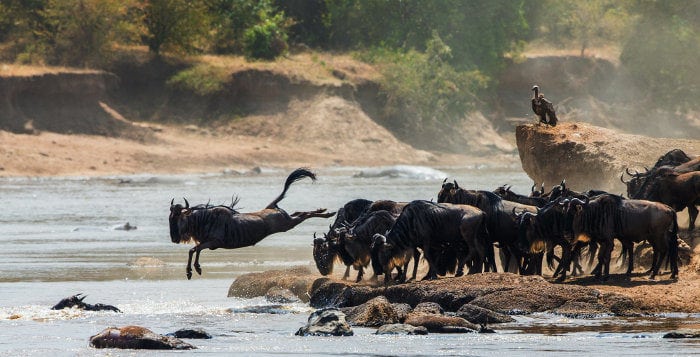
Great For : The abundance of animals, particularly big cats; great wildebeest migration July to September.
Highlights : Watching cats prowling and hunting; wildebeest crossing the Mara River; grasslands that look like Disney’s Lion King.
One of Africa’s most evocative images, the Maasai Mara is where gazelle, wildebeest and zebra play on seemingly endless grasslands . In season there are well over a million ungulates here, which naturally supports a magnificent abundance of predators .
For big cat viewing there are few better places, especially because the predators (other than vultures and hyenas) don’t actually follow the migration, but stay in the Maasai Mara to protect their home territories.
The main national reserve provides entry-level safaris; we’d recommend considering one of the smaller private concessions as well , which offer heightened exclusivity and a chance to go off the trail and get closer to the predators.
Yes the Maasai Mara is famous, for the herds , the cats , the hot air ballooning and the landscapes . And yes it’s popular. But that’s for very good reason.
Best Time to Visit the Maasai Mara : From July to September the great wildebeest migration charges over the Mara River to graze in the Maasai Mara. Naturally this is the peak time to visit but the park gets very busy. Not all the animals migrate and you can enjoy a more personal experience outside the migration months.
Also Consider : Tanzania’s Serengeti is part of the same ecosystem but is larger, so it can absorb peak season visitors a little easier.
Combine With : Amboseli or Samburu for a two-stop safari; Tanzania’s northern circuit for a 10 – 12-day safari.
Samburu National Reserve
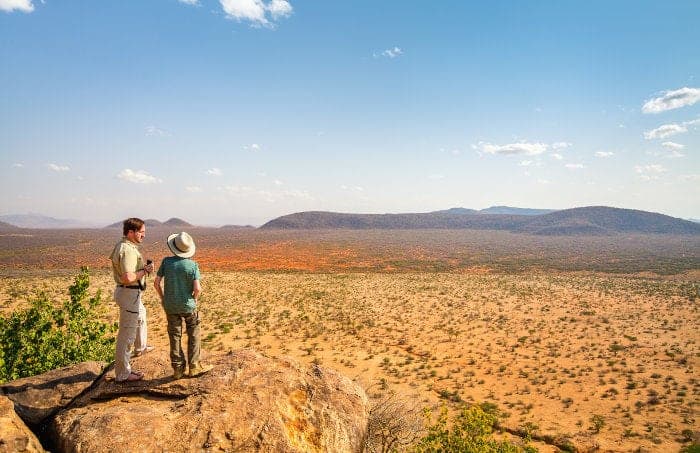
Great For : Wilderness experiences and a complete escape from the world.
Highlights : Being guided by Samburu warriors; superb high-end accommodation; walking safaris and mixed safari programs.
The Samburu is one of Africa’s great wilderness areas . Found in the north of Kenya it’s a land that’s still dominated by the Samburu tribe , along with all manner of wildlife that call this elevated plateau home. The experience is about going off the beaten track , rather than ticking animals off your list.
You’ll want at least three days and you shouldn’t miss the walking safaris , which could be anything from two hours to two weeks. If it’s wilderness you seek then the Samburu dances to the beat of old, wild Africa.
The accommodation elevates the experience, whether it’s a community-style camp or one of the hyper-exclusive camps perched above the plains.
Best Time to Visit Samburu National Reserve : It’s probably best to avoid the main rainy months of April and May. The rest of the year is great; January to March is probably the ultimate time to go.
Also Consider : Southern Tanzania for really wild and lesser-known safari.
Combine With : The Maasai Mara and then one of Kenya’s Indian Ocean beach destinations, like Malindi or Diani.
Tsavo East and Tsavo West
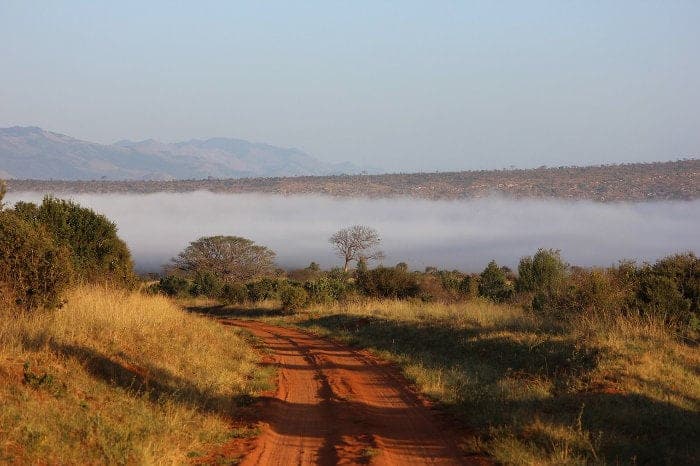
Great For : Combining safari with the beach.
Highlights : The unpredictability and ease of the safari.
Two vast parks separated by a major railway and road , Tsavo isn’t the ultimate destination in Africa, nor Kenya. But there’s magic here , especially if you can spend more than one night.
Animals revolve around permanent waterholes and you’ll come across a wide sweep of famous mammals (other than rhino), given a little patience.
The great benefit is accessibility. Kenya’s coastline of white sand is as good, if not better than any Indian Ocean island (including the Maldives). Holiday on the beach and you can easily include a short Tsavo safari to complement the escape.
Best Time to Visit Tsavo West and Tsavo East : The same as the best time to visit the coast. December to March and June to September.
Also Consider : A holiday in Tanzania mixing Zanzibar beaches with the Serengeti.
Combine With : The beach!
TOP DESTINATIONS
- Kruger Park
- Okavango Delta
- Serengeti National Park
- Victoria Falls
TOP COUNTRIES
- South Africa
TRAVEL DEALS
View All Travel Deals
SOUTHERN AFRICA
East africa, indian ocean islands, top experiences.
- Beach Holidays
- Family Safaris
- Honeymoon Safaris
- Desert Safaris
- Luxury Rail Safaris
- Multi-Generational Safaris
- Positive Impact Safaris
- Photographic Safaris
- Walking Safaris
WILDLIFE SAFARI
- Big Five Safaris
- Birding Safaris
- Gorilla Trekking Safaris
- Migration Safaris
- Mobile Camping Safaris
- Horseback Safaris
FEATURED EXPERIENCES
Comfort levels, property types.
- Tented Camps
- Boutique Hotels
Featured Safari Collections
- African Anthology
- Extraordinary
- Red Carnation
GET TO KNOW US
- Meet The Team
- Pricing Explained
- Traveller Reviews
- Traveller Stories
- Why Book With Us?
- HerdTracker
- Safari Cost Calculator
- South Africa In 360
- Trusted Safari Partners
What are you looking for?
- Safaris & Tours
- Destinations
- Experiences
- Accommodations
- Why book with us?
Hello traveller!
It's in Cape Town now.
We're sorry. Our safari planners aren't available now. Our office hours are 08:00 - 19:00 (GMT+2).
Call us to speak to an experienced safari planner.
Alternatively, we recommend...
Schedule a phone or Zoom call with one of our safari planners
Complete our travel enquiry form to connect with a safari planner

20 of Kenya’s Best Safari Camps and Lodges

Author: Antoinette Booyse - 1 October 2022
Last Update: 30 January 2024
Part of the Travel To Kenya & Maasai Mara National Reserve & Amboseli National Park Explorations & Aberdare Park Exploration & East Africa Safari Vacation & African Safari Collection
Kenya is often thought of as the ultimate safari destination , and it’s easy to see why. The country is home to an incredible diversity of wildlife, including lions, elephants, and rhinos. Not only does Kenya have some of the best safari camps , but it also has many lodges, hotels, guest houses and accommodation options.
Kenya’s safari landscape includes everything from snow-capped mountains to palm-fringed beaches. Its vibrant culture is on display in bustling cities and traditional villages. Whether you’re looking for an African adventure or a relaxing beach vacation, Kenya has something for everyone.
In this post, we’ll take a look at twenty of the best accommodation options in and around Kenya:
1. Tortilis Camp, Amboseli National Park
This luxury Kenyan safari camp in the shade of beautiful acacia tortilis trees has stunning views of snow-capped Kilimanjaro and Mount Meru in Tanzania. It offers guests roomy tents set well apart ensuring privacy, making it ideal for couples and honeymooners. However, there is a family tent as well.
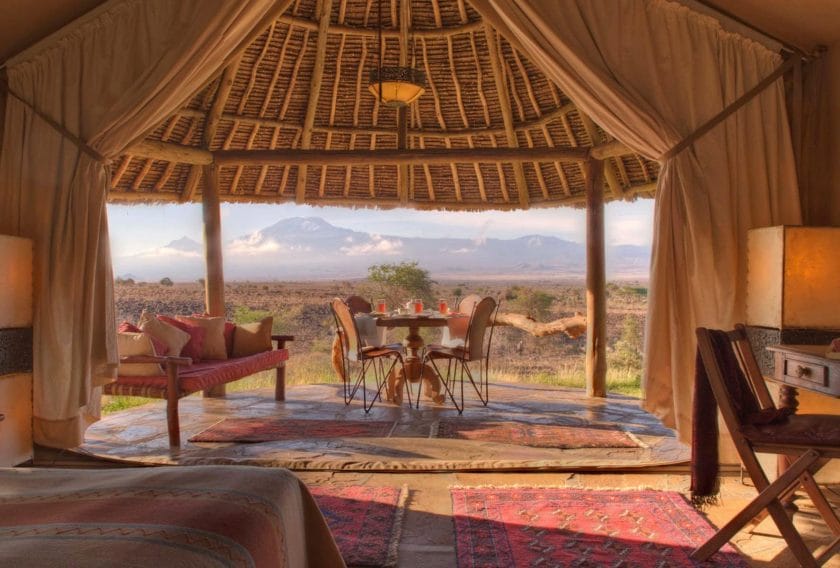
The luxurious Tortilis Camp tents have comfortable beds, gorgeous ensuite bathrooms and private verandas. The beautiful swimming pool area, with tempting loungers invitingly set out, simply compels relaxation.
The safari camp has a private entrance to Amboseli National Park renowned for its magnificent elephant herds. Mouthwatering Italian cuisine and superb service makes a stay at Tortilis unforgettable!
2. Ol Donyo Lodge, Chyulu Hills
Situated between Tsavo East and Amboseli National Parks, ol Donyo (meaning ‘large mountain’) is located on the Masai-owned Mbirikani Group Ranch. It nestles picturesquely in the foothills of the Chyulu Hills in Kenya’s renowned Amboseli National Park.
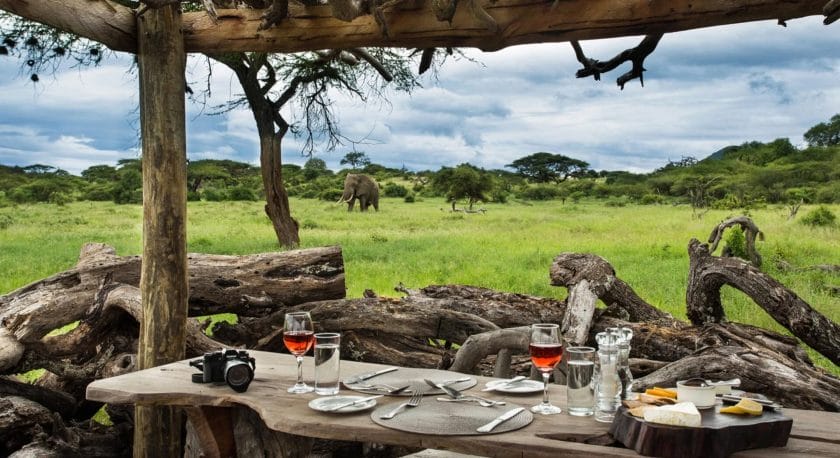
The lodge combines Masai culture and contemporary design to create the perfect setting for a luxury safari. Guests stay in six-roomy ensuite villas with well-appointed lounges, verandas and private plunge pools. Roof terrace star beds allow you to sleep out under the stars in a peerless experience of nature. An executive chef and his skilled team ensure fine cuisine matched with hand-picked wines and impeccable service!
The open-air hide ensures fantastic wildlife viewing. Horseback and mountain bike excursions, and expertly guided nature walks complete this unparalleled wildlife experience.
3. Alfajiri Villas , Diani Beach
Condé Nast Traveller rated Alfajiri Villas amongst the most luxurious in the world, and they offer the ultimate in relaxation, comfort and personalised pampering. Located on stunning Diani Beach, washed by the balmy waters of the Indian Ocean, these villas ensure a magical beach holiday . Vibrant Mombasa is just 30km north.
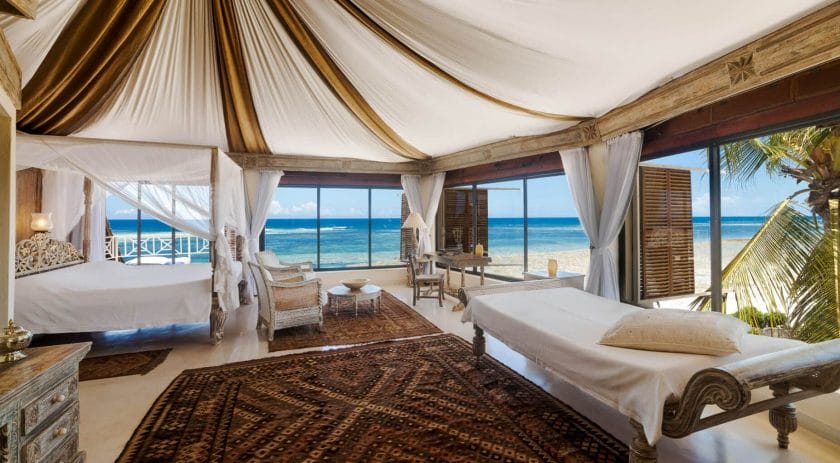
All three of the exclusive-use villas come with their own personal butler service, meals tailored to your taste, and private swimming pools. A masseuse is on hand for daily massages, and the owner will personally arrange all your activities, like snorkelling, kite surfing, golf and skydiving. And you’ll enjoy some of the most delicious and freshest sea-to-table seafood you’ve ever tasted!
An excellent choice after staying at one of Kenya’s best safari camps.
4. Kinondo Kwetu , Galu Beach
If barefoot luxury in a relaxed setting is your style, Kinondo Kwetu is the place for you! Located on the pristine Indian Ocean shoreline just south of Diani Beach, this beautiful hotel is the only one on private Galu Beach.
It is surrounded by verdant coastal forests and offers water activities like swimming, sailing, boating, diving and snorkelling. Beach and forest horse riding, tennis, yoga, golf and wood-fired saunas are also on offer. You can enjoy a romantic dinner on the beach, take in a cultural visit to a local village, or book a boat trip to Paradise Lost Island.
Or just ensconce yourself in a hammock under some whispering palms with a drink or a book while the balmy Indian Ocean breezes gently waft your cares away …
5. Loisaba Tented Camp, Laikipia
There can be few better views than Loisaba’s across Laikipia’s marvellous landscape all the way to Mount Kenya, over the 56 000-acre private conservancies. And nowhere are the views better than from Loisaba’s magnificent infinity pool! Relax in the pool with a delicious sundowner whilst watching families of elephants forage below the camp.
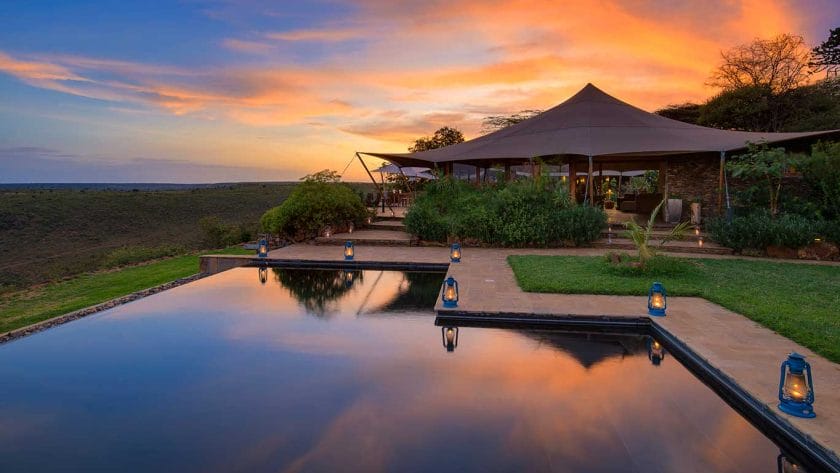
Large, high-ceilinged, and airy tents all feature huge floor-to-ceiling windows and doors and windows. The sophisticated decor stylishly combines African influences with modern state-of-the-art lighting systems and showers. The service is impeccable, the food delicious, and a night in your private outdoor star bed will create an indelible memory.
Camel treks, horse riding and mountain biking excursions are all on offer, as are expertly guided bush walks to see rare species like Grevy’s zebra and wild dogs.
6. Segera Retreat, Laikipia
Located on the rim of the Great Rift Valley, Segera Retreat is a sanctuary for numerous species, including endangered African wild dogs, the patas monkey and rare Grevy’s zebras.
Established by conservationist and art collector Jochen Zeitz , this retreat offers luxury, privacy and stunningly beautiful surroundings and gardens. Coupled with excellent service, delicious cuisine, fine wines, ‘sleep-outs’ under the stars, and an indulgent spa, this unique retreat has it all.
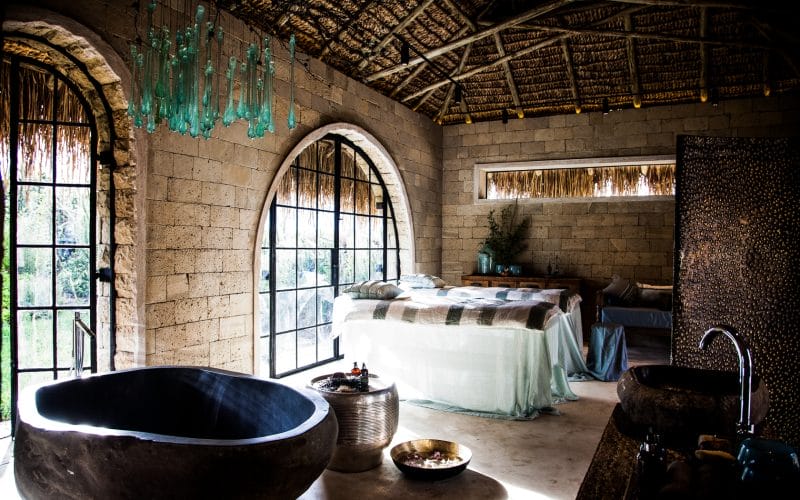
All six thatched and superbly appointed villas have a villa attendant who takes personal care of guests during their visit. Pathways link the villas to tempting daybeds, swimming pools, and bar and lounge areas. Private decks overlook the savannah and the stunning Sculpture Garden. Guided game drives, helicopter excursions, and hidden hides ensure guests have excellent game viewing.
7. The Sanctuary at Ol Lentille, Laikipia
Snuggled into the lush hills of Laikipia’s northern escarpment, the Ol Lentille Sanctuary combines unsurpassed views with privacy, seclusion, and opulent luxury. Its four uniquely designed, butler-served villas are ideal for honeymooners or couples on safari .

Guests can explore 40 000 acres of pristine wilderness through jogging, quad biking, horse riding, cycling and camel trekking. Guided game drives and bush walks are available, as are kayaking and river-rafting excursions for more adventurous souls. International cuisine, fine wines and a sumptuous spa and wellness centre put the final seal on this Kenya safari tour of a lifetime!
8. Loldia House, Lakes District
Situated on one of Kenya’s earliest farms near Hell’s Gate National Park, Loldia is a luxury safari lodge that has it all – dormant volcanoes, serene lakes, mind-boggling canyons, and even hot springs!
Ideal for couples and families, it offers luxurious accommodations, fine cuisine, and flawless service. Its relaxed colonial ambience calls more relaxed and gracious times to mind where playing croquet on a velvety lawn and evenings spent talking before a fire was the norm.
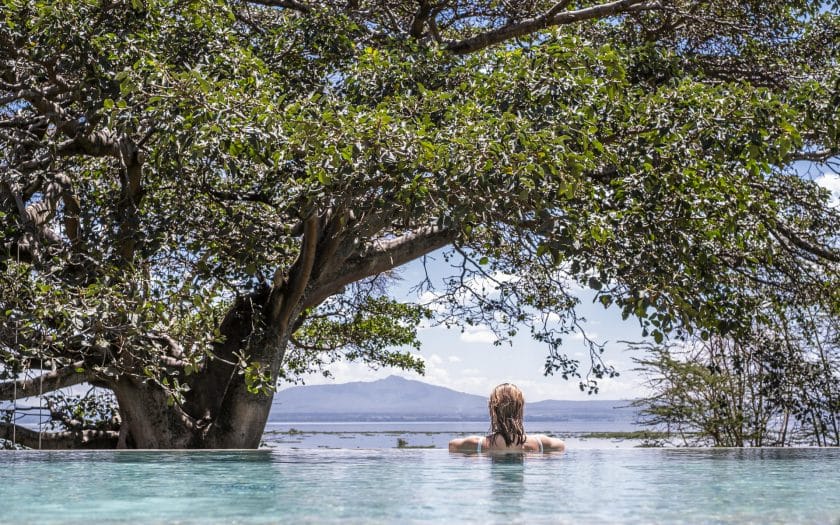
A paradise for bird-lovers, Loldia has stupendous views of Lake Naivasha and the extinct volcano, Mount Longonot. Guests can see millions of flamingos on the nearby lakes, rare colobus monkeys, endangered black and white rhinos, lions, leopards, and many other species. You can enjoy boat excursions, horse riding, golf, tennis, fishing, swimming and yes, of course, croquet! And evenings soaking up the peace in front of the fire.
9. Manda Bay, Lamu Archipelago
Part of the Lamu Archipelago, Manda Island lies just off Kenya’s north coast. This gorgeous island is tailor-made for visitors looking for a far-from-the-madding-crowd escape, or a fabulous end to their African safari tour .
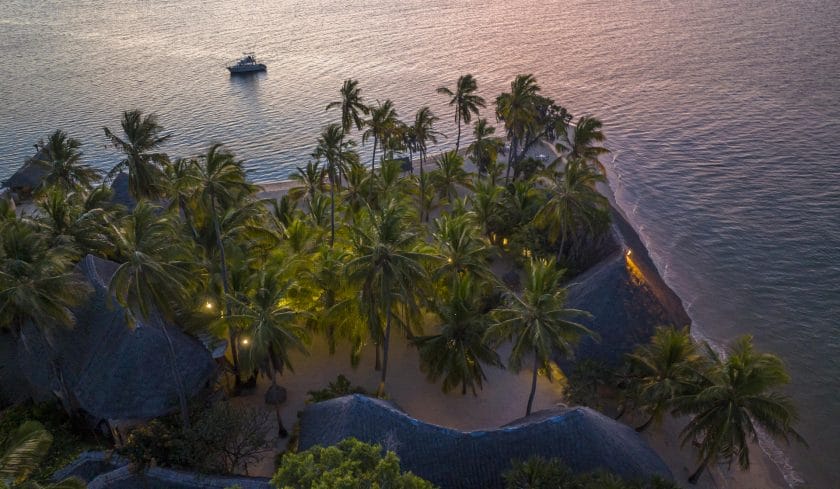
Manda Bay is a tranquil boutique beach resort that offers frequent sightings of humpback whales, dolphins and turtles. A wealth of activities like swimming, waterskiing, scuba diving, deep-sea fishing, windsurfing and dhow safaris is on offer. Enjoy some of the delicious food, indulge in a massage, or just relax and soak up the peace.
10. Kifaru House , Lewa
Lewa Wildlife Conservancy’s 62,000 acres lie in the foothills of majestic Mount Kenya, and is an internationally acclaimed success story of collaborative conservation between tribal communities. Luxury lodge Kifaru House is an oasis of incredible views and sweeping lawns overlooking a popular waterhole.
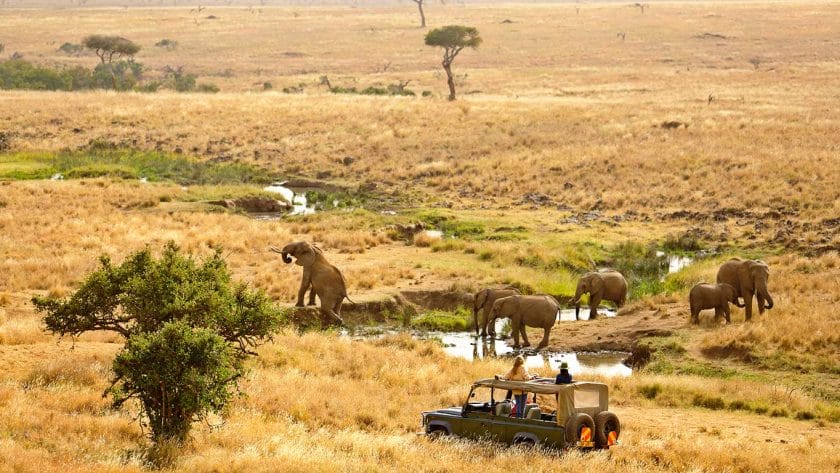
Home to some of East Africa ’s most thriving populations of black and white rhinos, Lewa also houses the Big Five, cheetah and endangered Grevy’s zebras and black rhinos. Activities include game drives, walking safaris guided by Samburu rangers and an enchanting canopy walk and picnic in Ngare Ndare forest. Horse riding, camel trekking and instructive visits to local Samburu homesteads or manyattas will make your eco-safari even more memorable.

Affordable Masai Mara Safari
East Africa Kenya Maasai Mara
From $ 3050 /USD
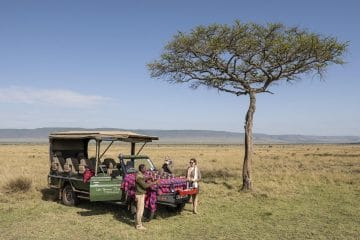
Migration River Crossings Safari with Governors...
From $ 4440 /USD
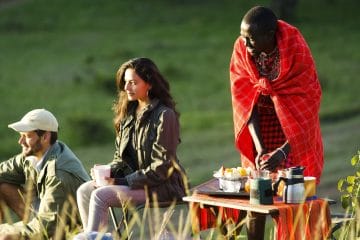
Herdtracker and Kicheche Camps
From $ 4550 /USD
11. Lewa Wilderness Lodge, Lewa
Dating back to 1924, this innovative luxury Lewa Wilderness Lodge is centred around the original family farmhouse of the Craig family who still run this conservation-centric resort. Guests sleep in nine beautiful, thatched cottages.
Fireplaces, inviting lounge areas and private verandas with incredible views all add to this resort’s unique ambience. Couples, families and ecotourists will all love it. Dining is either private or communal; your choice.

Activities include night and day game drives, guided walks, fly camping, tennis, swimming, horse riding, camel trekking or a visit to the gym. You can have a flight in a vintage bi-plan, or enjoy a magical canopy walk in Ngare Ndare Forest with its numerous waterfalls. A visit to Il NGwesi village will inspire you, as will meeting the anti-poaching dogs that protect this ‘safe house’ for rhinos.
12. Angama Mara, Masai Mara National Reserve
Aptly meaning ‘suspended in midair’ in Swahili, Angama Mara’s two ultra-luxurious safari camps sit atop two koppies on the edge of the Great Rift Valley. Each enormous tent has a 10-metre-wide glass front that assures unrivalled vistas and game viewing. This includes the crocodile-dense Mara River, the scene of many a drama-filled river crossing during the yearly Great Wildebeest Migration from August to November!
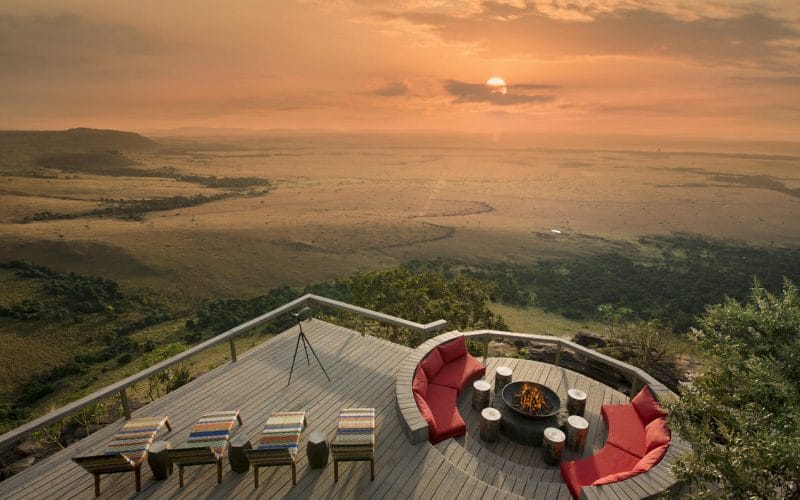
There’s a magnificent swimming pool, and you can have a massage or a workout in the gym. The camps also have Wi-Fi connectivity, childminders, and laundry facilities.
Guests enjoy game drives, guided walking safaris, hot-air ballooning and delicious cuisine and wines. Birdwatchers will be ecstatic with more than 570 recorded bird species! Photographers will love the onsite photography studio.
13. &Beyond Bateleur Camp, Masai Mara National Reserve
Bateleur Camp enjoys a superlative location with its stunning infinity pools seeming to do just that – look out on infinity! Its two camps sit at the foot of the massive rock walls of the Oloololo Escarpment and a primaeval riverine forest. Each has nine sumptuous suites tucked away among the trees.
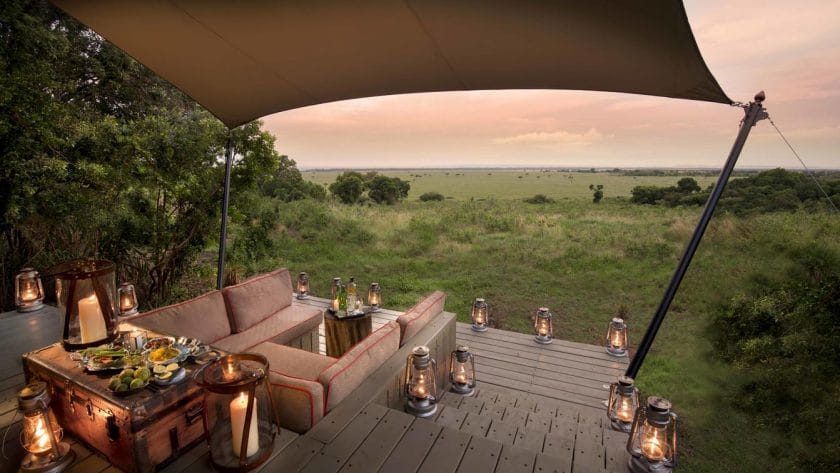
Each ensuite tent is furnished with fine antiques and handcrafted artefacts and has its own shaded deck with chairs and a table. You’ll even be supplied with a pair of Swarovski Optik binoculars to use during your stay, and a personal butler will look after you. Guests enjoy outstanding cuisine, candlelit dinners in a forest clearing, sumptuous bush breakfasts, guided bush walks and hot-air balloon safaris.
An ideally placed deck with tempting armchairs is so inviting that monkeys and warthogs drop in from time to time! &Beyond’s staff are renowned for their excellent service and attention to detail, making this one of the finest safari camps in Kenya.
14. Sanctuary Olonana, Masai Mara National Reserve
Intimate, luxurious, award-winning Sanctuary Olonana Lodge nestles scenically in a forest on a private stretch of the iconic Mara River. Apart from excellent game viewing all year round, it guarantees you easy access to the greatest wildlife spectacle on the planet – the Great Wildebeest Migration.
You’ll have the best seats in the house to see thousands of wildebeest and zebra cross the Mara with its gauntlet of Nile crocodiles. The large numbers of predators that stalk them add to the excitement.
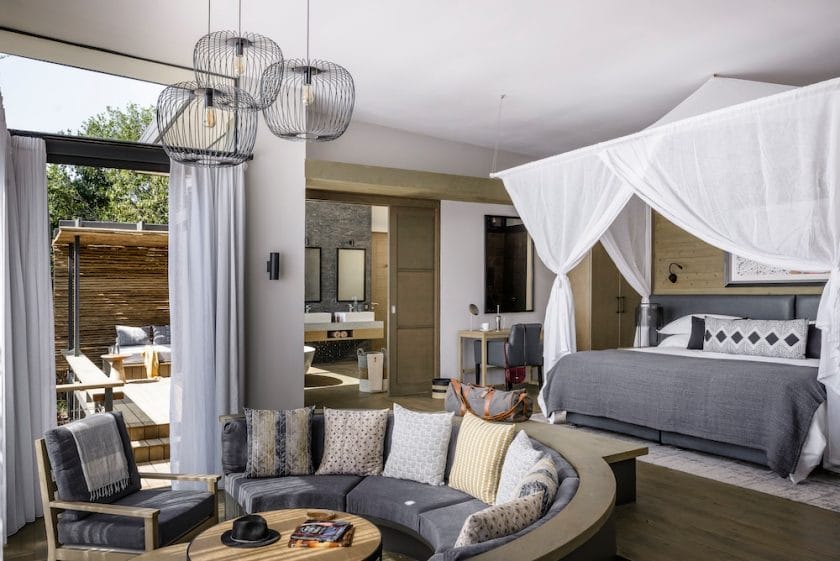
Olonana offers family-friendly accommodation in 14 spacious en-suite glass-sided suites with private decks. Game drives, sundowners, delicious dinners in the bush, cultural visits to a Masai village, scenic flights and magical hot-air balloon excursions are all on offer. There’s even a mini spa to help you relax!
15. Elsa’s Kopje, Meru National Park
This luxurious, romantic and award-winning lodge is named after Elsa , conservationists Joy and George Adamson’s beloved lioness of Born Free fame. The camp is crafted into rocky Mughwango Hill just above the original campsite where the Adamsons raised Elsa in Meru National Park.
The Park is real lion and elephant country, and is famous for rhino conservation. Guests can watch game drinking at a waterhole just below the lodge.

All the ensuite cottages have incredible 360° views from their private decks with romantic outdoor bathtubs. You can enjoy bush dinners or breakfasts, picnics, guided 4X4 game drives with sundowners, and rafting on the Tana River. Or have a swim or a relaxing massage, or browse the gift shop or library. And those essentials, wi-fi and a laundry service, have not been forgotten!
16. Giraffe Manor, Nairobi
Want to have dinner with somebody really tall, utterly beautiful, and gentle? Then you must stay at Giraffe Manor in Kenya’s capital , Nairobi. Built-in 1932, it’s a small boutique hotel modelled on a Scottish hunting lodge, so plenty of old-world charm!
The Manor is world-famous for its commitment to conservation and its resident herd of Rothschild’s giraffes. You can feed the giraffes from your breakfast table, or from the window of your second-storey bedroom.
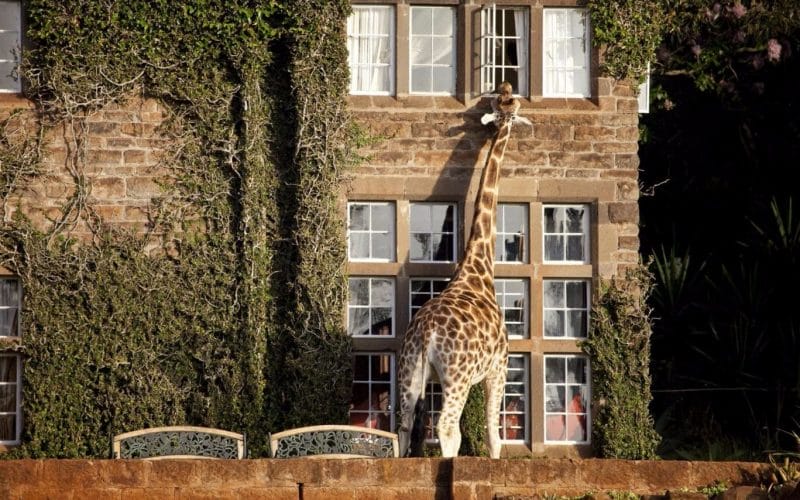
But you will have to book well in advance – the Manor has only 12 much-in-demand bedrooms! Some of the famous people who have stayed here over the years include Brooke Shields, Johnny Carson, Richard Chamberlain, Richard Branson, Ewan McGregor and Walter Cronkite. The latter even had a resident warthog named after him! Now that’s fame for you!
17. Saruni Samburu, Samburu National Reserve
Built into a massive volcanic rock face ensuring spectacular views from its open-air cliff-top reception area, luxurious Saruni Samburu is known for its avant-garde design, architecture and décor. Each of the six stunning villas are unique and offer the last word in comfort.
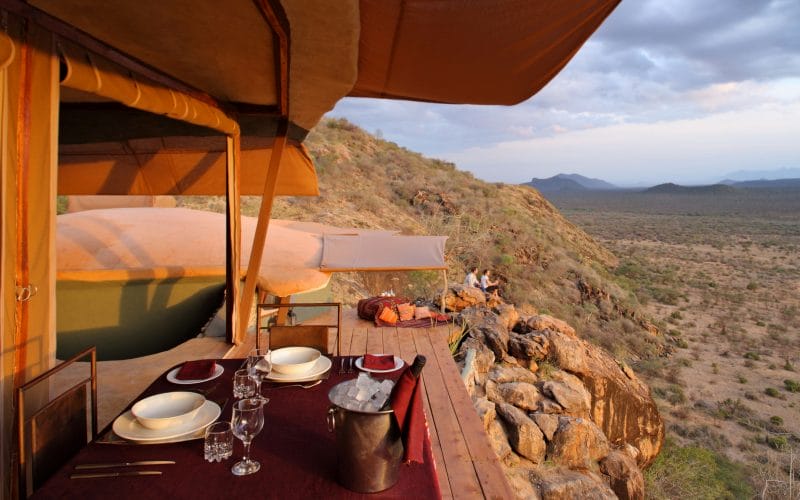
Guests can go on both morning and evening game drives to view Samburu’s Special Five – the endangered Grevy’s zebra, the Somali, or reticulated, giraffe, the Somali ostrich, the East African or beisa oryx, and the graceful long-necked gerenuk gazelle. You can explore the ancient rock art and abundant wildlife of the region on nature walks with Samburu rangers. Children will love the junior rangers programme, and scrumptious picnics and bush dinners can be arranged. Saruni Samburu is simply one of the best safari camps in the region.
18. Sasaab Camp, Samburu National Reserve
Sasaab luxury tented camp has a stylish Moroccan ambience and offers riveting views of the endless plains of the Laikipia Plateau and Mount Kenya. Nine uniquely styled tents offer guests deluxe four-poster beds, spacious seating areas, en suite luxury bathrooms, ceiling fans, wi-fi, and roomy verandas with plunge pools.
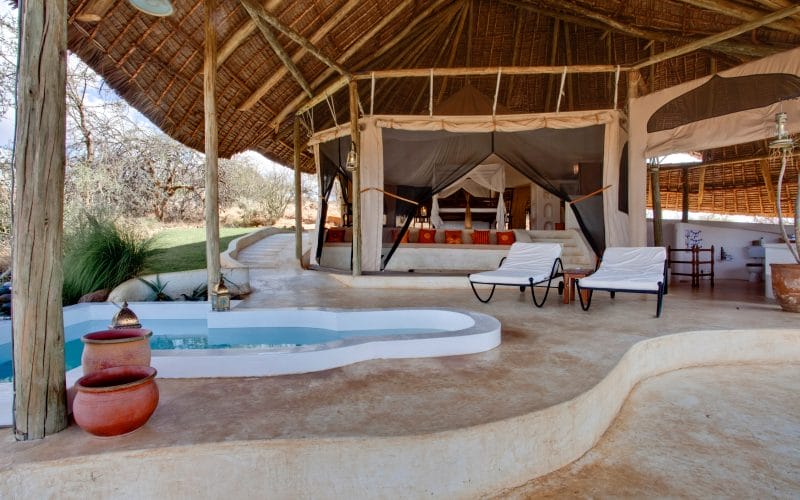
A spa is available for indulgent pampering, as are in-room beauty treatments and massages. Guests are spoilt with twice-daily game drives, spotlit night drives, guided walking safaris, mountain biking, cultural excursions, camel treks, fly-camping and all-day trips to the Samburu Reserve. Superb Moroccan-styled cuisine is served, and the camp is famous for its pizzas!
19. Lentorre Lodge , Southern Rift Valley
Secluded, sumptuous and serene, Lentorre Lodge is ideal for that breakaway far from the madding crowd. Situated on the Nguruman Escarpment in the remote Southern Rift Valley, Lentorre is the only lodge on the Olkiramatian Conservancy .
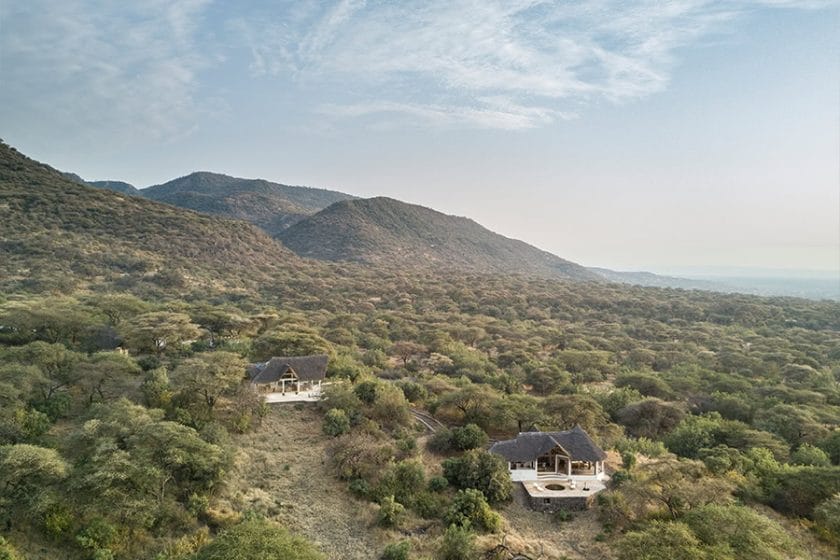
A natural spring behind the lodge ensures a constant supply of pristine water. It also sustains a historic grove of tamarind trees where elephants still come to feast on the ripe fruit.
With exclusive access to the Olkiramatian Conservancy, guests enjoy day and night drives with unrivalled game viewing. Scenic helicopter flights are on offer, as is the opportunity to join in herding livestock with traditional Masai villagers. You can meet some baboons as they go about their daily activities, or float down the Ewaso Ng’iro River on an innertube!
20. Finch Hattons Luxury Tented Camp, Tsavo National Park
Named after Robert Redford’s Out of Africa alter ego, aristocratic safari leader Denys Finch Hatton , Finch Hattons is a top-rated tented camp in Tsavo National Park, Kenya. The Kenya safari camp overlooks a freshwater spring that’s a potent draw-card for animals ensuring incomparable game viewing, including elephant sightings right outside the camp.
The camp has only 17 superbly appointed luxury suites with private viewing decks with heated plunge pools. Facilities include a yoga room, fitness centre, spa, home theatre and children’s entertainment room. Daily game drives, crater climbs, and scenic fights are on offer.
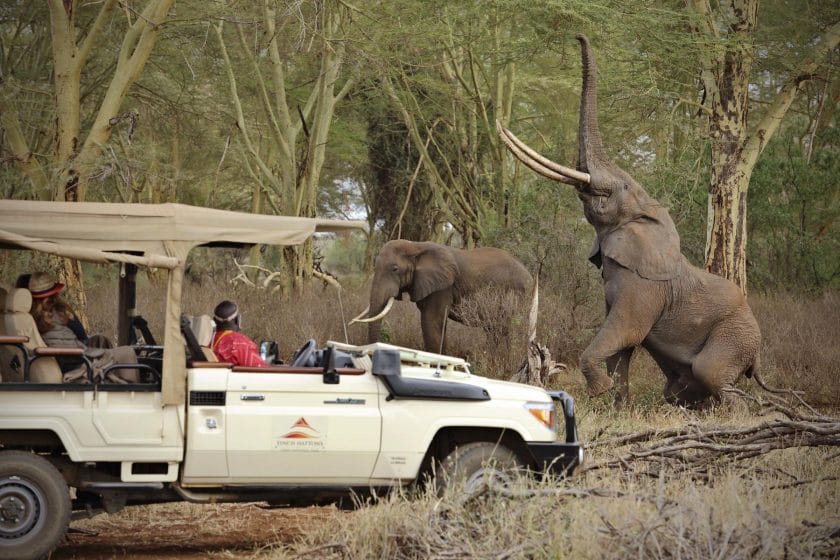
The sumptuous Karen Blixen Lounge simply demands relaxation, as does the library. Then add a lookout tower, a magnificent palm-fringed infinity pool, a cushion- and rug-strewn star-gazing terrace, superlative food and wine… Wow!
Choosing from Kenya’s best safari camps and safari lodges
Kenya is a land of stunning natural beauty and diverse wildlife. From the grassy plains of the Serengeti to the snow-capped peaks of Mount Kenya , there is something for everyone. And of course, Kenya is home to some of the best safari parks in Africa, where visitors can see lions, elephants, and other iconic animals in their natural habitat.
Reach out to our expert team today to plan your Kenyan safari experience at one of Kenya’s best accommodations.
Uganda Or Rwanda – Which Is Best For Seeing Gorillas In Africa?
Eloping on an African safari can be an amazing and intimate experience if you plan it right
Related Safari Tours
These popular itineraries can be customised to match your budget and how many people you're planning to travel with..
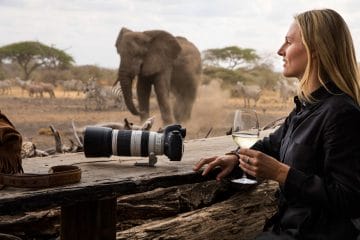
Enchanted Kenyan Safari
East Africa Kenya Chyulu Hills Maasai Mara
From $ 8900 /USD
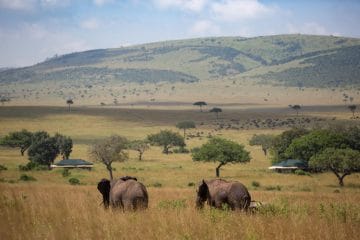
Highlights of Kenya Luxury Fly-In Safari
East Africa Kenya Nairobi Chyulu Hills Maasai Mara
From $ 10068 /USD
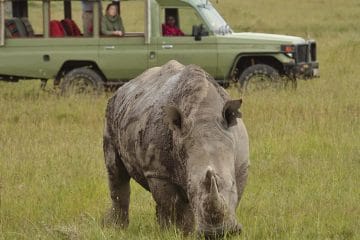
Family Safari in Kenya
East Africa Kenya Laikipia, Lewa and Ol Pejeta Conservancy Maasai Mara
From $ 15300 /USD
Why travel with us?
Recent reviews from travellers who planned and booked their africa trips with discover africa safaris, outstanding.
Sabi Sands, Cape Town & Franschhoek Safari Review
Tod and Debbie, Australia 30 Nov 2023
Efficient and professional.
7 Day South Africa Safari Experience Review
Monica, Spain 21 Nov 2023
Prompt responses and all you could hope for in a travel agency..
Honeymoon Safari Review
Kirsten Meintjes, South Africa 02 Nov 2021
Matthys designed a perfect safari for my family which ensured we had....
Desert and Delta Review
Rhona, United States 15 Aug 2020
Excellent advice for a safari in south africa.
Waterberg Safari Review
Ramiro Castillo, Argentina 16 Jan 2019
With discover africa i had the most wonderful experience of my life.
A Botswana Adventure Review
Debby, Spain 05 Jun 2015
Registered Members of these Organizations
USEFUL LINKS
- African Safaris
- African Safari Tours
- African Safari Lodges
- Why Book with us?
- Content Collaborations
- Safari Cost Estimator Tool
- Wildebeest Migration
- Privacy Policy
- Website Terms of Use
POPULAR COUNTRIES
- View All Countries
- South Africa Safaris
- Botswana Safaris
- Kenya Safaris
- Tanzania Safaris
- Namibia Safaris
- Rwanda Safaris
- Uganda Safaris
- Zambia Safaris
- Zimbabwe Safaris
POPULAR DESTINATIONS
- View All Destinations
- Cape Town Holidays
- Kruger Safaris
- Victoria Falls Safaris
- Masai Mara Safaris
- Serengeti Safaris
- Etosha Safaris
- Chobe Safaris
- Okavango Delta Safaris
TRAVEL BLOGS
- Virgin Atlantic and Kenya Airways improve connectivity to Kenya
- South Africa’s Mega Landscapes Plan: Conservation Boost or Nature Risk?
- Rwanda vs Uganda: Which is Better for Mountain Gorilla Trekking?
- Kruger’s New Gate to Grow Tourism + SA’s Top Parks to Visit in 2024
- East Africa’s Safari Experiences: A Photographer’s Paradise
DISCOVER AFRICA SAFARIS
- 2nd floor, Tygervalley Chambers One, 27 Willie van Schoor Avenue, Bellville, Cape Town , 7530
Protect Your Trip »
A first-timer's guide to planning a safari in kenya.
Experts share practical tips for preparing for a successful safari.
A First-Timer's Guide to Planning a Safari in Kenya

Getty Images
Before you begin your once-in-a-lifetime African adventure, make sure you talk to your physician about recommended travel vaccines and pack strategically with plenty of layers.
You've been dreaming about going on safari in Kenya ever since the credits rolled in "Out of Africa," and now you're ready to embark on the trip of your dreams . To make sure you get the most out of the country's spectacular wildlife and jaw-dropping landscapes, here is the information you'll need, so that the only surprises you'll encounter are ones that you'll love.
An Average Day on Safari
While every accommodation is unique, most camps follow a similar schedule. Led by a wildlife guide, you'll go on at least two game drives per day with other guests for three to four hours per ride. Along the way, you'll stop at picturesque locations to stretch your legs, grab a snack and revel in incredible scenery. In the middle of the day, when predators and other species are hiding in the shade, you'll be in camp relaxing. Expect to take your meals at camp, though dining in the wild is also common. At night, you'll cozy up to a warm fire and mingle with the other guests to share your day's adventures before letting the sounds of the bush serenade you to sleep.

Susan Portnoy
(Susan Portnoy)
Activities and Extra Costs
Game drives are the crux of most safaris, but there are plenty of other activities for you to enjoy, from guided walks and visits to tribal villages to hot air balloon rides over the Masai Mara or camel safaris in the Northern Frontier. Some activities are included in your daily rate, but "it's always a good idea to know ahead of time what's included in your stay, as many options may come with an additional price tag," says Linda Friedman, CEO of Custom Safaris. Also, keep in mind that you may be charged for park entry fees, laundry, premium liquors and other amenities.
Wildlife-Viewing Opportunities
"Kenya is known not only for its massive concentrations of game but also for its vast open plains. You can spot and track wildlife from a fair distance and there is almost always something to see and some sort of interaction between species," says Andrew Beck, a professional wildlife photographer and a co-founder of Wild Eye, a photographic safari company. There are also certain areas that contain larger concentrations of specific species. If you love elephants, consider Amboseli where herds can reach 100 members or more. And from August to October, the Masai Mara plays host to millions of wildebeest during the Migration, while species like the Grevy Zebra, Somali Ostrich, reticulated giraffe and the gerenuk can only be found in the north.
Guides know all about animal behavior and the area in which your camp is located, as well as the location of recent sightings, dens and kills. Still, they can't make animals appear on cue, so stay open to what the day brings. In the bush, the world can change on a dime; with a little patience, you'll have the time of your life.

Family
Taking your child on safari can be one of the best ways to instill a lifelong love of wildlife and respect for the environment, and in the last few years, more companies are enticing families with larger tents or villas and special programs designed with families in mind. As Friedman points out, it's important to ask up front if children are allowed or if there is a minimum age requirement. If your child is very young, you may be required to reserve a private vehicle.
Photography
A DSLR camera and longer lenses are best for wildlife photography , but if that's not your objective, Beck suggests getting a point-and-shoot with the maximum optical zoom. "Don't even bother looking at the digital zoom feature as this is essentially a crop of the image," he says. It's also a smart idea to bring plenty of memory cards. There is nothing worse than having to delete images from your camera on the fly to make room for your next shot.
When it comes to the bush, safety at any lodging is top priority. Upon arrival, you'll be given all the dos and don'ts and it's important to follow directions. While safaris are safe, Friedman cautions, "These are wild animals, not kittens."

Preparing for Your Safari
Paperwork You'll need a passport that is valid for at least six months prior to your arrival. Your passport must contain a minimum of two blank pages for stamps. You'll also need a $50 visa . You can apply for a visa online at Evisa.go.ke or you can wait until you arrive at the airport in Kenya.
Vaccinations
According to the Centers for Disease Control, there are no mandatory vaccinations for travel to Kenya though you may be required to get a yellow fever shot if your travels take you through endemic zones prior to your arrival. The agency also advocates being up to date on immunizations for Hepatitis A and B, typhoid, yellow fever, rabies and meningitis. Additionally, you may want to consider pills for malaria. Make sure to speak to your physician about your travel plans to determine what you need.
Pack enough light casual attire for a long weekend and take advantage of the same-day laundry service (weather permitting) that the majority of camps provide. It's chilly in the morning and evening, but hot in the afternoon, so dress in layers. A good sunscreen is also a must-have, in addition to a wide brim hat and a good pair of polarized sunglasses. And flip-flops are fine for the jeep, but also pack a pair of comfortable sneakers.
Small commuter planes are the main mode of transport into the bush and all the domestic carriers are sticklers about baggage restrictions. Bags must be soft, no longer than 26 inches and wheel-free, and the total luggage weight per person cannot exceed 15 kilograms (33 pounds), including your carry-on. If you go over the limit, your best-case scenario would be paying a fee, but in a worst-case scenario, you may have to buy a separate ticket for your baggage or wait until there is a plane with space available.
Money Matters
Kenya shillings is the local currency. You can pick up shillings at the airport upon arrival, but U.S. dollars are also widely accepted. Keep in mind, accommodations will accept major credit cards such as Visa or MasterCard (American Express is not as widely accepted) for amenities or gift shop purchases, but you should bring cash for gratuity as well as extras, such as cultural visits to local villages or souvenirs like handmade jewelry or other trinkets from local artisans.
Tips are not mandatory, but they are customary. Your guide should be at the top of your list, and according to Friedman, you should plan to pay $15-25 per person per day. If you have a large family, less per person is acceptable. If you want to distribute gratuity to all staff members, most camps have a staff box where guests can leave a gratuity of $5-10 per person per day. When in doubt, ask a manager for advice, Friedman says.
Tags: Travel , Kenya , Travel Tips
About En Route
Practical advice on the art of traveling smarter with tips, tricks and intel from En Route's panel of experts.
Contributors have experience in areas ranging from family travel, adventure travel, experiential travel and budget travel to hotels, cruises and travel rewards and include Amy Whitley , Claire Volkman , Holly Johnson , Marsha Dubrow , Lyn Mettler , Sery Kim , Kyle McCarthy , Erica Lamberg , Jess Moss , Sheryl Nance-Nash , Sherry Laskin , Katie Jackson , Erin Gifford , Roger Sands , Steve Larese , Gwen Pratesi , Erin Block , Dave Parfitt , Kacey Mya , Kimberly Wilson , Susan Portnoy , Donna Tabbert Long and Kitty Bean Yancey .
Edited by Liz Weiss .
If you make a purchase from our site, we may earn a commission. This does not affect the quality or independence of our editorial content.
You May Also Like
The 6 best kauai helicopter tours.
Holly Johnson and Marisa Méndez March 25, 2024

The Best Diaper Bag Backpacks
Amanda Norcross March 21, 2024

The 13 Best Los Angeles Tours
Kyle McCarthy and Marisa Méndez March 21, 2024

The Best Washington, D.C. Tours
Kim Foley MacKinnon March 20, 2024

The Top Amusement Parks in the U.S.
Holly Johnson and Sharael Kolberg March 19, 2024

Spookiest Savannah Ghost Tours
Gwen Pratesi March 19, 2024

The Best Vegas Shows
Rachael Hood March 19, 2024

The Best Gettysburg Tours of 2024
Amanda Norcross March 18, 2024

Alaska Cruise Cost
Gwen Pratesi March 15, 2024

Spooky Charleston Ghost Tours
Holly Johnson March 15, 2024

8 of the Best Luxury Safari Lodges in Kenya
:max_bytes(150000):strip_icc():format(webp)/DSC00412-5b73daf7c9e77c0057ca2198.jpg)
Along with Tanzania , Kenya is the archetypal African safari destination. It is synonymous with the annual Great Migration of wildebeest and zebra, and home to iconic parks like the Maasai Mara National Reserve as well as a slew of private conservancies. For those in search of a truly memorable safari experience, Kenya also offers some of the most luxurious lodges on the continent. In this article, we take a look at a few of our favorites; ranging from classic tented camps to unique private villas.
Cottar's 1920s Safari Camp
Michael Poliza / Getty Images
Cottar's 1920s Safari Camp is located far from the crowds in the southeast corner of the Maasai Mara, near the Tanzanian border. Set in a stunning 6,000-acre private conservancy, the camp consists of just 10 luxury tents decorated in a nostalgic 1920s style that recreates the safari golden age. Each white canvas tent comes with an en-suite bathroom, while family rooms include a living room complete with a fireplace. Meet your fellow travelers for dinner and drinks in the communal mess tents; or seek post-game drive relaxation at the swimming pool and spa. Game drives, night drives, and walking safaris all take place in an area known for its abundant wildlife.
Tortilis Safari Camp
Tortilis Camp
Surrounded by acacia woodland, Tortilis Safari Camp is blessed with some of the best Kilimanjaro views in the business. Here, you can enjoy game drives, walking safaris and sundowners both in Amboseli National Park itself or in the camp's 30,000-acre private concession. There are 17 luxuriously furnished Makuti tents, that all come with one main bedroom, en-suite bathroom, and private verandah. For a little extra luxury, book a stay in the camp's exclusive safari house. An on-site garden provides fresh produce for delicious meals served in the main lodge, which in turn overlooks a waterhole frequented by elephants. Other highlights include a swimming pool and spa service.
Mara Bushtops
Orion Hotels
Located less than five kilometers from the main gate into the Maasai Mara National Park, Mara Bushtops is a luxury tented camp set high on a hill within a private conservancy. Scenic valley views are a feature of the lodge's 12 5-star tents, as are private decks and hot tubs. The lounge and dining area includes a fine wine cellar, bar, and library; while the infinity pool doubles as an elevated game-viewing spot. Maasai guides accompany all game drives and walking safaris, and breakfasts can be enjoyed in the bush. When you want a change of scene, book a visit to a local school or Maasai village. Mara Bushtops is also renowned for its full-service Amani Spa.
Campi ya Kanzi
Campi ya Kanzi is a unique camp built at the foot of the Chyulu Hills in southern Kenya, on communal land owned by the Maasai. Both socially and ecologically responsible, the lodge features six tented cottages and two suites, each with breathtaking views and a personal Maasai butler. If you're traveling as a group, consider booking the private Kanzi House. Meals are accompanied by spectacular views of Mount Kilimanjaro or enjoyed beneath a canopy of stars. On your safari, you will benefit from the knowledge of a native Maasai tracker. Special Campi ya Kanzi experiences include walking safaris into the Chyulu Hills cloud forest, horse riding and scenic Kilimanjaro flights.
Sasaab Lodge
Sasaab Lodge is located on Samburu communal lands in northern Kenya, near the Buffalo Springs National Reserve. Perched above the banks of the Ewaso Nyiro River, it offers magical views across the Laikipia Plateau towards Mount Kenya; and nine luxurious, Moroccan-themed tents. All are very secluded and come with an open-air bathroom and private plunge pools. The communal area is perched upon a rocky ridge with incredible views of the river below. Samburu guides will take you on a walking safari, camel safari or traditional 4x4 game drive. Keep an eye out for regional specials including the gerenuk antelope, the Grévy's zebra, and the reticulated giraffe.
Ol Donyo Lodge
Nestled at the foot of the Chyulu Hills, the Ol Donyo Lodge is located in between Amboseli and Tsavo East National Parks. Its uniquely decorated guest suites and villas boast private plunge pools and dramatic views that stretch all the way to distant Mount Kilimanjaro. Each one also has a rooftop star bed accessed via a winding stone staircase. There's an infinity pool, a massage service and an elegant dining area with an impressive wine list. Spend your days exploring the lodge's stunning surroundings on a game drive, horseback safari or guided bush walk; or immerse yourself in local culture with a visit to a Maasai village. Fly-camping can also be arranged.
Loisaba Tented Camp
Escarpment views and chic Africana furniture are defining features of Loisaba Tented Camp . Located in a private conservancy on the edge of the Laikipia Plateau, the camp offers six tent suites and three family suites, all with polished wood floors, private verandahs, and rainfall showers. When you're not in your room or out on safari, spend time socializing at the infinity pool or in the open lounge and bar. Activities range from visits to Samburu villages to horse riding, camel trekking, and fishing. You can even visit the sniffer dogs used by the conservancy's anti-poaching patrol. For a truly unforgettable stay, book a night in one of the Loisaba star beds , owned by the same company.
Lewa Safari Camp
Lewa Safari Camp
Famous as the place where Prince William and the Duchess of Cambridge stayed ahead of their Kenyan engagement in 2010, Lewa Safari Camp has access to 65,000 acres of private game viewing. Each luxury safari tent has its own verandah and en-suite bathroom, while the camp's communal areas include a sparkling swimming pool and a sitting room with an open log fire. Gourmet meals include afternoon tea and evening canapés. Whether you choose to join a game drive, a guided walk or explore on horseback, keep an eye out for Lewa's black and white rhinos. The conservancy also boasts the world's largest concentration of endangered Grévy's zebras.
Amboseli National Park: The Complete Guide
Serengeti National Park, Tanzania: The Complete Guide
Ruaha National Park: The Complete Guide
15 Animals to See on an African Safari
Top 10 Wildlife Parks and Reserves in Kenya
Top 10 Unmissable African Safari Destinations
How to Experience the Great Migration in Kenya and Tanzania
The Top 5 Places to See Leopards in Africa
12 Best Things to Do in Kenya
The Best Time to Go on Safari
Akagera National Park, Rwanda: The Complete Guide
Masai Mara National Reserve, Kenya: The Complete Guide
Where to Go in 2021: 10 Future Trips You Can Start Planning Now
14 Amazing Private Travel Experiences
Okavango Delta, Botswana: The Complete Guide
13 Amazing Trips to Take Before You Turn 40
The Masai Mara in Kenya is nature's epic masterpiece.

A little bit about Masai Mara
Rolling hills, sprawling savannahs, dramatic river crossings and of course... more wildlife and adventure than any movie could ever portray. Welcome to the Masai Mara, home to the lions of ‘Big Cat Diary’, temporary residence of the ‘Great Migration’, mighty Maasai warriors and some of the most luxurious safari lodges on earth.
The Masai Mara features a stunning kaleidoscope of wild and rugged landscapes, warm and welcoming people and an exciting array of creatures – big and small. World famous for hosting the epic Great Migration, the Masai Mara welcomes 1,5 million wildebeests onto its sprawling savannahs each July through October. The Masai Mara National Reserve and conservancies are brimming with life and offer safari travellers a wide variety of activities to choose from. Whether you take to the skies for a high-flying hot-air balloon adventure at sunrise or hit the road for a 4x4 safari, you’re sure to leave the Masai Mara with unforgettable experiences and lifelong memories.
Going on a Masai Mara safari
Part of the fun of going on safari is planning your safari. We’ve been there... and know how it feels. As avid travellers we can imagine you have loads of questions while planning your trip to the Masai Mara. Very few places on earth are as unspoilt, adventurous and authentic as the Mara eco-system.
Reading up on the Masai Mara, finding out what you might encounter, exploring your accommodation options... we've done most of the work for you and created this site to help you find all the answers to any questions you may have. To top it off, we've brought together a top-notch collection of Masai Mara safari lodges and camps for you to choose from. Naturally, we're only an e-mail or message away if you need a little extra help planning your safari.

About the Masai Mara
Known as one of the world’s most famous wildlife areas or ‘the world’s eight world wonder’, the Masai Mara has endless plains, breath-taking vistas and abundant wildlife. Learn more about the Masai Mara here.

Masai Mara special offers
Dreaming of the perfect safari holiday? We’ll help you find your way while planning your trip and provide you with a selection of the best available deals. Check out our latest Masai Mara special offers and discounts.

Getting to Masai Mara
Whether you’re arriving from far, far away or travelling to the Masai Mara from a destination in the region. We’ll guide you through your options for getting to the Mara and for getting around once you’re here.
As newbie safari travellers, we were blown away by our experience of the Conservatory - the animals in abundance; the landscapes; the people; the smells and sounds.
It was an amazing experience to actually see the river crossings, that we had seen so many times on TV during the wildebeest migration.
We saw a leopard on a tree and we were lucky enough to watch four lionesses and three cubs eating a fresh hunt. In the evening safari we were able to explore a massive variety of hippopotamus and a crocodile.

Masai Mara lodges & camps
The Masai Mara is rough and rugged, however you don't have to rough it during your stay. Eco-chic safari lodges with four-poster beds, sundowners with your favourite G&T and infinity pools overlooking the African savanna await.
We’ve selected a variety of warm and welcoming Masai Mara safari lodges and camps for you to choose from during your stay. Each of the accommodation options we’ve selected is known for offering premium safari activities, first-class accommodation and every creature comfort you could wish for during your stay.
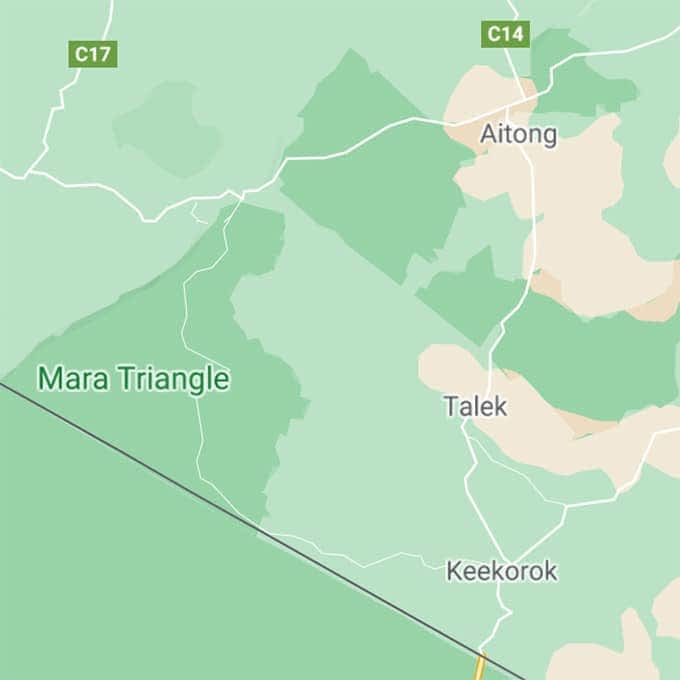
All accommodations in Greater Masai Mara
Browse all camps & lodges
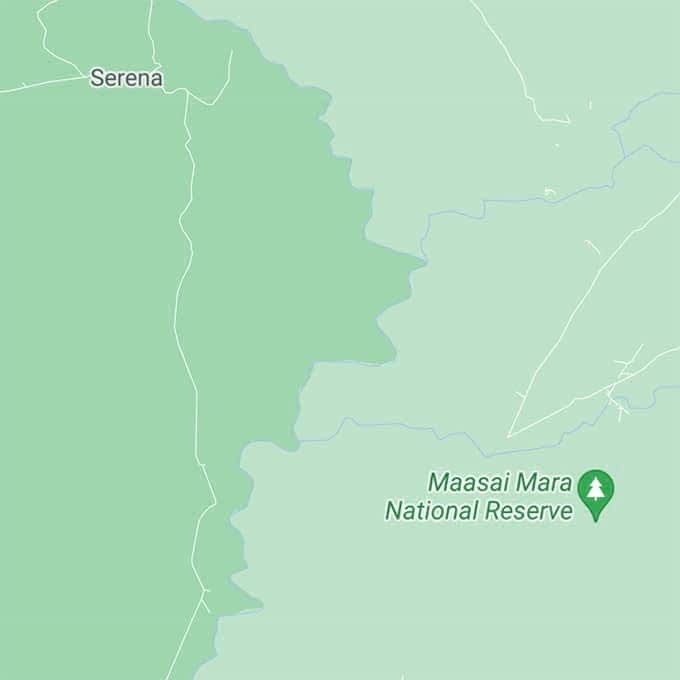

National Reserve accommodation
Browse Masai Mara NR accommodations
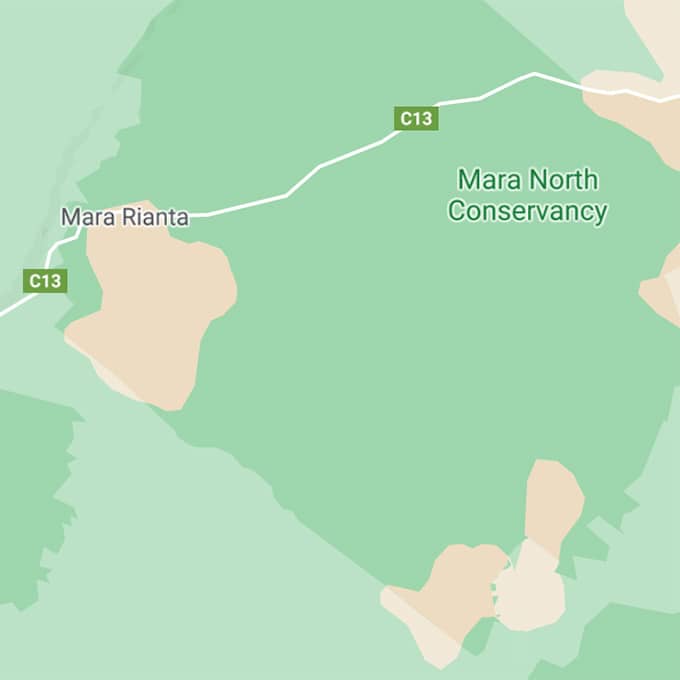
Mara conservancies accommodation
Browse conservancy lodges & camps
Masai Mara lodges we love
We would like to share a few accommodation options with you for your stay in the Masai Mara. Our safari lodge options come in a variety of price ranges, giving you plenty of possibilities to find the right Masai Mara safari camp for your travel budget.
Keep in mind that the following are simply suggestions. We offer tailor-made safari experiences and look forward to creating just the right mix of Masai Mara safari accommodation and activities based on your personal preferences. We look forward to helping you create the bespoke Masai Mara safari of your dreams.
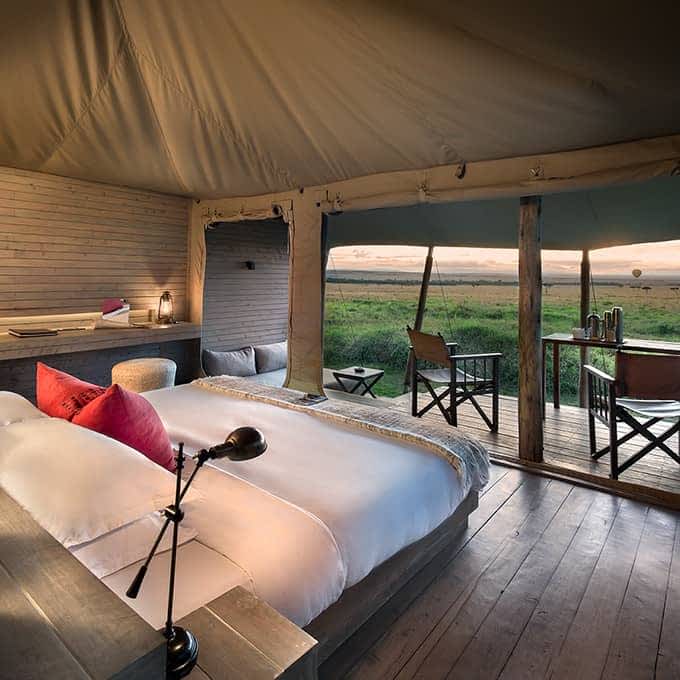
Kichwa Tembo Tented Camp
lodge location Mara Triangle
Kenyan hospitality meets Maasai-inspired luxury on the lush green banks of the Saparingo River. &Beyond Kichwa Tembo Tented Camp lies on the edge of the Oloololo escarpment, where riverine forest meets the sweeping plains of the Masai Mara.

from US$ 435 per person per night
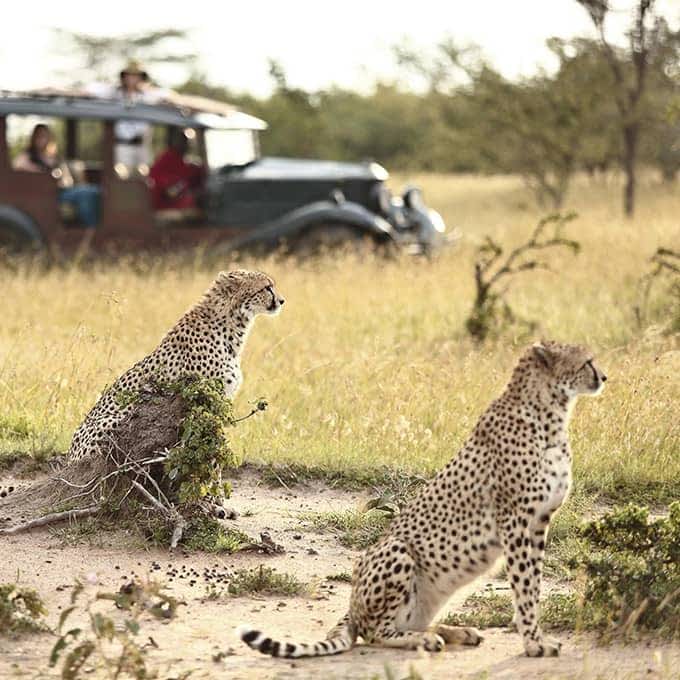
Cottars 1920s Safari Camp
lodge location Olderkesi
Cottar’s 1920s Safari Camp offers guest vintage luxury at its very best. Cream-coloured tents decorated in 1920s epic safari style, professional Maasai safari guides and above all a sense of elegance and class - this classic Kenyan safari camp has it all.
from US$ 1,059 per person per night
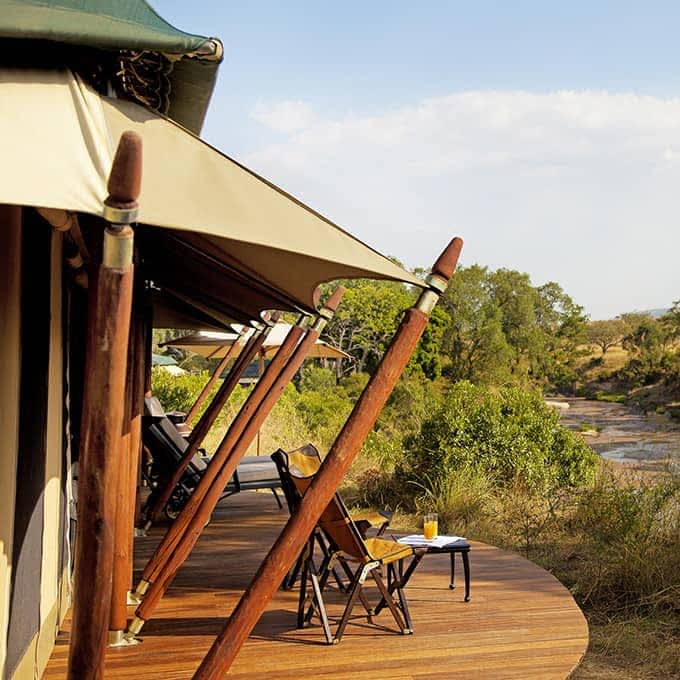
Elewana Sand River Camp
lodge location Musiara Sector
Ideally situated in one of the most remote parts of Masai Mara National Reserve, Sand River Camp pays homage to romantic 1920s safaris. Its design reminds guests of the many African adventure themed Hollywood movies created in that time period.
from US$ 670 per person per night
There were lion cubs galore, a baby zebra born in front of my eyes, pretty much everything an avid photographer could hope for.
The Maasai people were extremely welcoming, and were there to make sure our experience was nothing but the best. We will definitely be back.
The Big 5 and more - giraffes, zebras, hippos, lions with their families, cheetahs and hundreds of wildebeests - no shortage of amazing game sightings every day...
Masai Mara highlights
The Masai Mara is a dream come true for everyone who ever watched ‘Out of Africa’ and longed for the adventurous, romantic nostalgia of an African safari in the wild. The Great Migration, big cats and Maasai warriors await.
The Masai Mara is a photographer's paradise. This region is known for pristine riverine forests, dramatic towering escarpments, stunning sprawling savannahs and of course... all the creatures, big and small, that roam the land. Add a visit to a Maasai village to your stay for a cultural immersion and gain some insight in the day-to-day life of your hosts. For an extra special birds-eye view of the African plains, take to the skies during a hot-air balloon safari. When it comes to crafting the safari of your dreams, the sky is the limit.
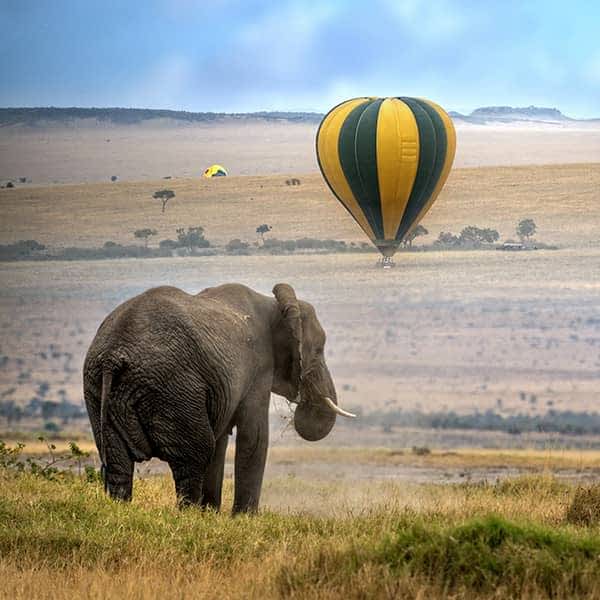
Balloon safari
View golden plains from above
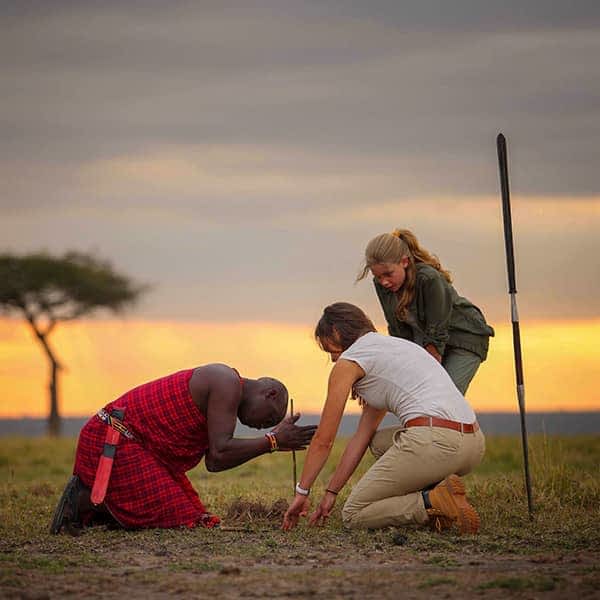
Maasai people
Extraordinary cultural meetings
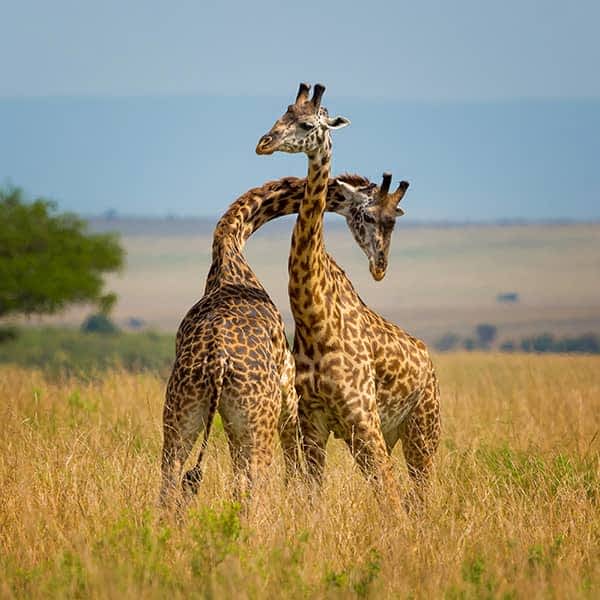
Exhilarating wildlife
Wildlife up close and personal
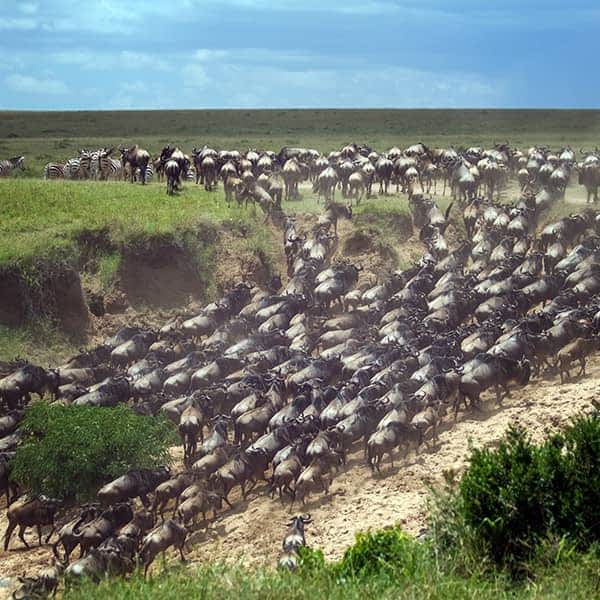
The Great Migration
Wildlife spectacle in the Masai Mara
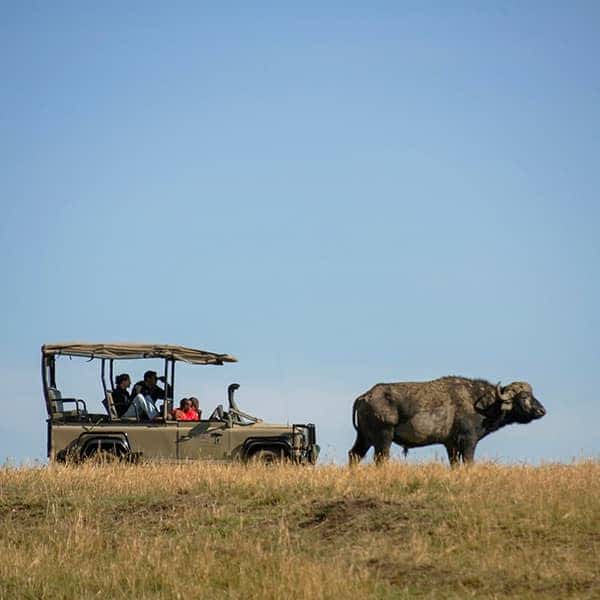
Safari activities
Drive, walks & more
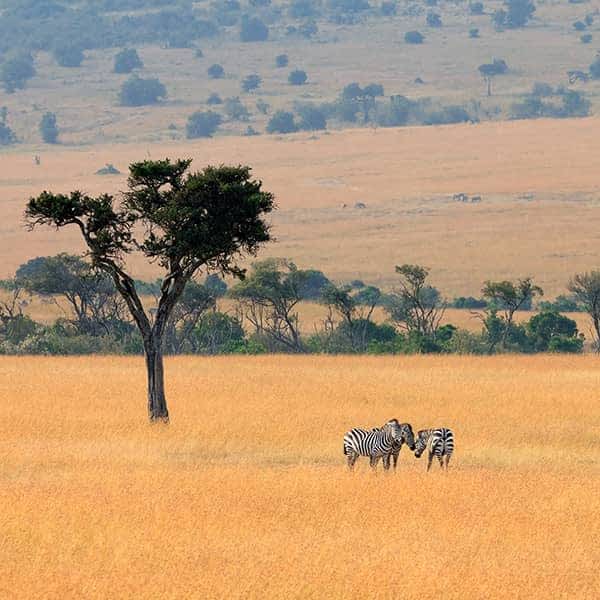
Masai Mara National Reserve
Kenya's premier wildlife reserve
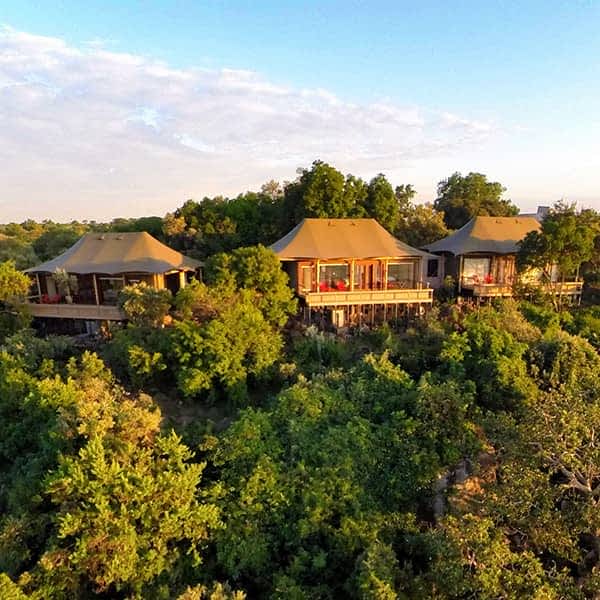
Luxury accommodation
A luxury safari home from home
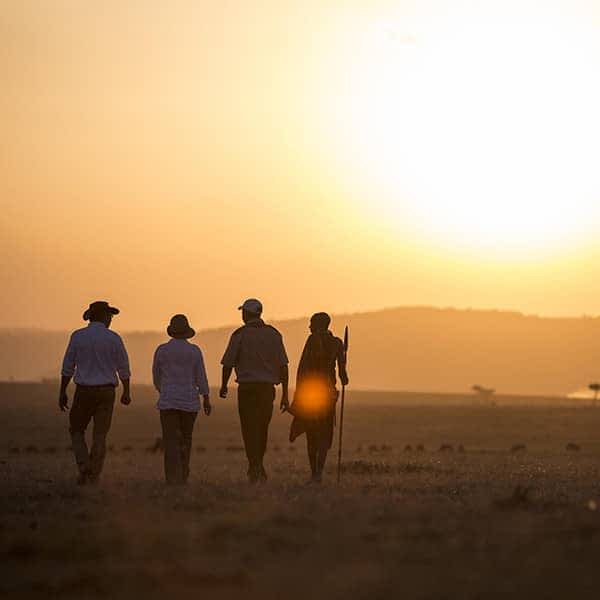
Mara North Conservancy
Enjoy the perks of a conservancy
Conservancies in Kenya are the way to go; protecting the extraordinary wildlife whilst giving the local community an income, together with education on the interaction between the two.
Wonderful area for wildlife viewing. Having been there twice both times were awesome experiences! Will return again.
The highlight of our trip to Mara was seeing the migration at the Mara river. A once in a lifetime experience to see the Wildebeest migrating. An amazing scene of nature it was.
Masai Mara video
The best way of understanding what the Masai Mara and its conservancies are about is by seeing some thrilling footage from the area. Watch this video to experience Kenya's Masai Mara, its splendour and to meet some of our celebrity wildlife species.
Be careful, after watching this video you can be sure that you want to travel to Kenya. Today.
We saw 8 lions in one drive, and a hippo pod being circled by a dozen crocodiles that launched into the water, trying to get the baby hippos in the center of the pod. Wow!
I was fortunate that when I was recently in the Mara North Conservancy there were so few tourists. I saw plenty of wildlife. The sightings of big cats were especially good.
The Mara Triangle is the most beautiful, lush area of the Masai Mara. Loads of elephants and all types of wildlife without all the land cruiser traffic found in other areas of the Mara.
Send your enquiry
We hope you have found all information needed to decide that the Masai Mara in Kenya is the perfect place for your next safari adventure. Still have questions? Or maybe you would like some more specific information about the different lodges? Please fill in the contact form and we will get back to you soon!
- Masai Mara National Reserve & conservancies
- [email protected]
- Travel Guides Plan your adventure
- Destinations Our favourite places
- Tours Book a trip
- Travel Companies Independent specialists
- Travel Guides
- Destinations
- Travel Companies
Safari in Kenya
Kenya's best safari reserves and camps.
Stuart Butler
- In this guide
- Samburu, Buffalo Springs & Shaba
Meru National Park
Lake nakuru national park, amboseli national park.
- Nairobi National Park
- Off the beaten track
Kenya besides safari
- Where to go
- Need to know
- Itinerary planning
- Hidden gems
- Conservancies
- How to plan & book
Kenya is the original home of the safari and it’s still one of the finest safari destinations in Africa . I've been going on safari in Kenya for decades, as a travel journalist and guidebook author writing about safari, conservation and life among the Maasai tribes.
The main thing I've learned: there's so much more to Kenya than the mainstream safari industry of luxury camps and the famed “big five” (so named because they were the prize targets of colonial–era hunters).
The country proudly boasts of an impressive network of protected spaces made up of 65 national parks and reserves as well as dozens of private and community conservancies. Together these cover a huge proportion of Kenya’s diverse landscapes and provide a home for animals as large as an elephant and as tiny as an elephant shrew.
Some parks, such as the Masai Mara and Amboseli , are rightly world famous. Other parks, such as Meru National Park or Kakamega Forest Reserve, barely make a blip on the mainstream safari circuit but are every bit as rewarding (and much quieter!) then the big name parks and reserves.
Kenya has a world class safari tourism industry with excellent safari operators catering to all budgets and a diverse portfolio of safari lodges and camps. All you need to decide is when and where to go – and that's where my guide comes in. Dig in and Safari njema! – (Have a nice trip!)
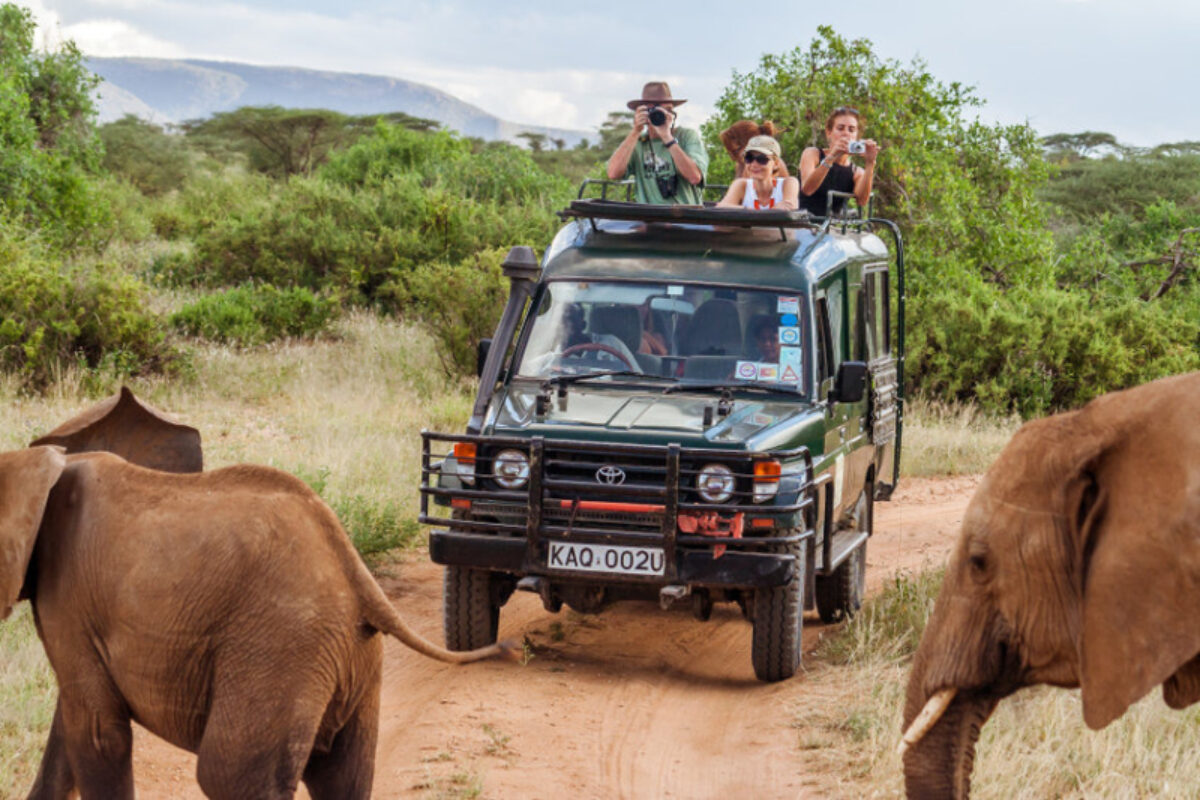
Close encounters with a herd of elephants in Kenya's Masai Mara
The best safaris in Kenya
Kenya’s most popular – and some underrated – safari highlights.
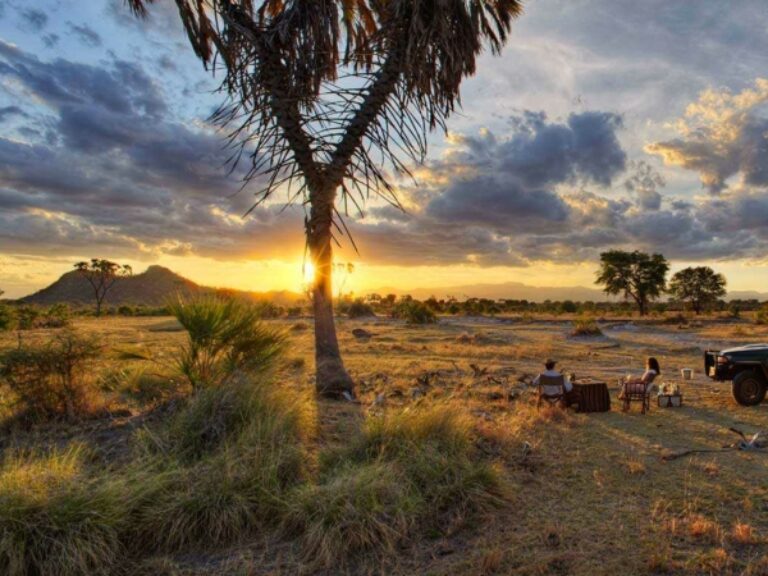
Elsa’s Kopje
This is the best lodge in what is, for me, one of the best safari parks in Kenya. Named after Elsa the lion, of Born Free Fame, the lodge sits on an outcrop with simply incredible views over Meru. Owned by Kenya-based Elewana Collection, it’s undeniably pricey – rooms start at around USD $950 per night and climb steeply from there – but worth a night or two if your budget can stretch that far. If that’s beyond your means I can also recommend Meru Camp and there are cheaper options in the nearby town of Maua.
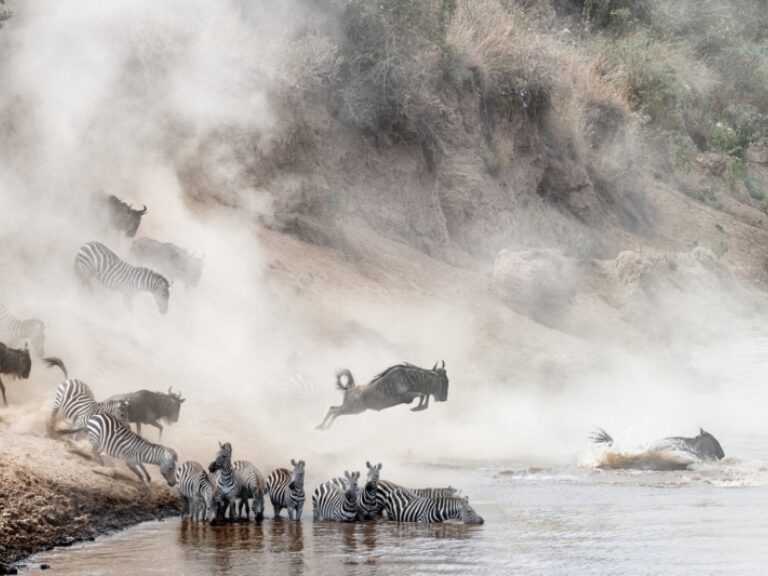
Masai Mara National Reserve
Witness the migration river crossings – but expect crowds.
The wildebeest migration is one of the world’s greatest natural phenomena, and watching the herds dodge hungry crocodiles as they surge across the Mara River is a staple of Kenya safari. The migration moves into the Masai Mara from Tanzania’s Serengeti between June and October. This is by far the busiest time and place of the year, so expect crowds. If you’d rather see the migration untroubled by crowds, I recommend you look at Tanzania instead.
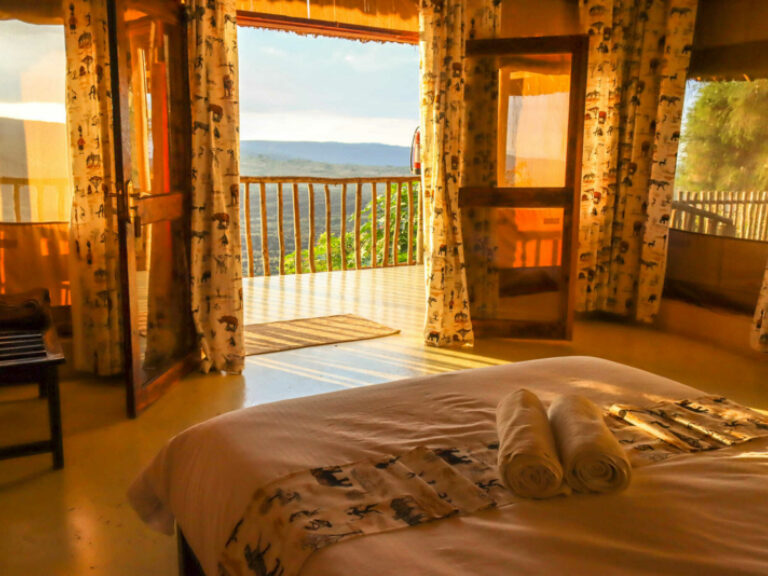
Denise Carnihan
I can highly recommend Maili Saba. It has a picturesque location overlooking the Great Rift Valley and volcano region, with lovely permanent tents each with en-suites and balcony, and all very nicely decorated. There is a communal pool and outside gazebos for relaxing. The main dining room and lounging area is stunning with striking cathedral ceiling and beautiful decor. The food is absolutely outstanding and the staff are warm, friendly and go out of their way to assist their guests. The first time I visited was a complete surprise organised by my Kenyan partner, and I've included it in our tour itineraries ever since.
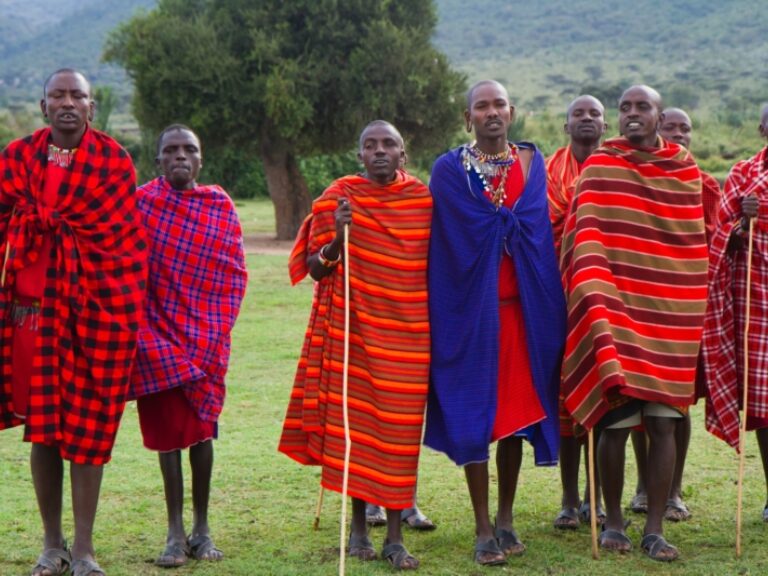
Nashulai Maasai Conservancy
One of the great success stories of Kenya safari has been the emergence of networks of conservancies, usually adjacent to the better known national parks. These are community-run or privately-operated protected areas, run for the benefit of wildlife and local communities. In the Masai Mara, the Nashulai Maasai Conservancy is particularly interesting, as it’s the only one that was 100% established by local Maasai and the only one where the Maasai remain in their homes within the conservancy. I can also highly recommend Mara North, Naboisho, and Ol Dereski; you’ll likely have an amazing time in any of them.
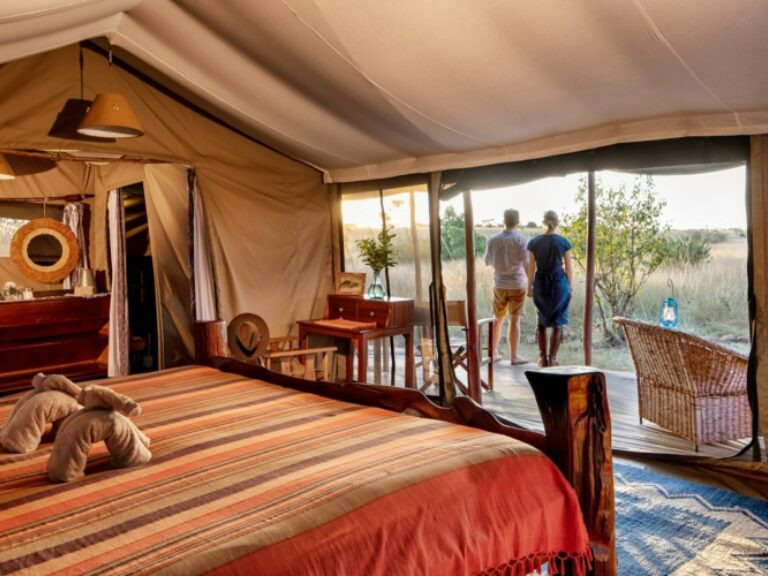
Offbeat Mara
Mara North is perhaps the best known conservancy in the Masai Mara, and Offbeat Mara is one of my favourite camps in the entire place. It's a small, un-showy camp of just seven tents including two family tents. In addition to the standard game drives you can do night drives, guided bush walks, horse riding, hot air balloon flights and even do some Maasai running coaching!
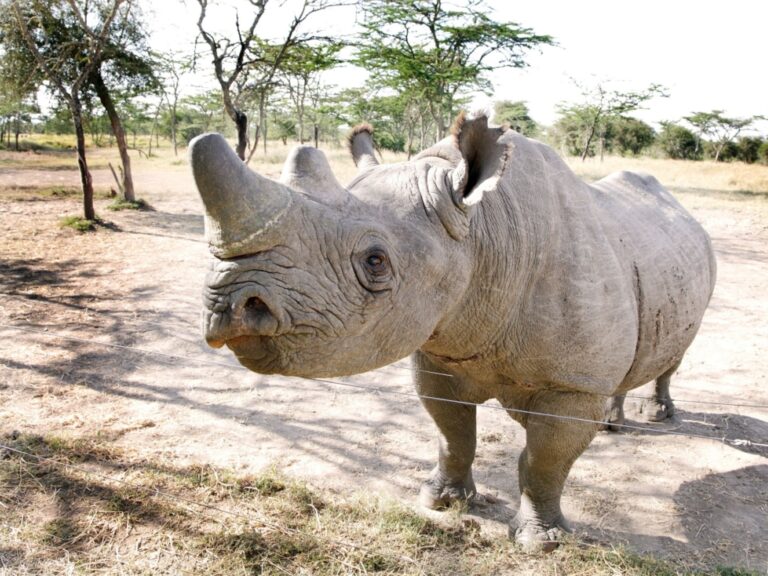
Ol Pejeta Conservancy
If you’ve ever wondered what the hide of a rhino feels like, wanted to experience a safari at night or dreamed of running (or riding) in the wild, open air of a safari reserve, head to Ol Pejeta Conservancy. The conservancy is in the Laikipia region, at the foothills of Mount Kenya. The sanctuary is the largest in East Africa to host black rhino, as well as the world’s last two remaining white northern rhino. Ol Pejeta is also the only place in Kenya where you can see chimpanzees. Conservation is at its core, with several experiences available for intrepid safari-goers who want to do more than just watch the animals.
Those looking to get their hands dirty can join one of the one or two-week volunteer programmes and learn wildlife research and tracking, veterinary care and more of what goes on behind the scenes. The conservancy has several accommodation options from simple cottages to basic campsites and luxury tented eco-camps.
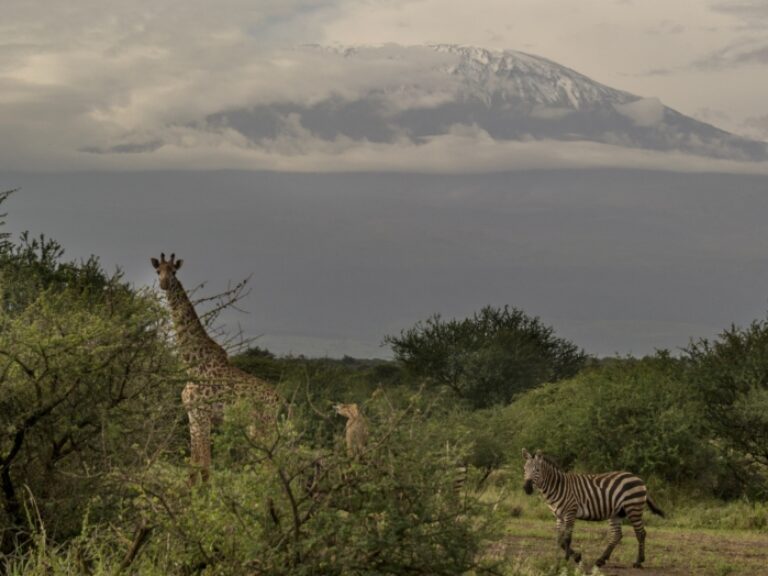
Campi ya Kanzi
If elephants are your thing, you can’t do much better than Amboseli where herds of these magnificent beasts graze in the shadow of the equally magnificent Mt. Kilimanjaro. By far the best place to stay is not in the park itself but 30km away at Campi ya Kanzi in the Kimana Community Wildlife Sanctuary, situated between Amboseli and Chyulu Hills. It’s a very high-end Maasai-run camp that was set up to aid the local community and conservation projects. Its excellent location means you can see wildlife in the conservancy, Amboseli and Chyulu all from one base.
Samburu Game Reserve
Saruni rhino camp.
This camp in the Sera Conservancy, just north of the Samburu Reserve in northern Kenya occupies a stunning location in the semi-desert. Their specialism is a thrilling rhino tracking walking safari, probably my favourite place to see rhinos in all Kenya. I spent five days here and by the end still couldn’t decide if coming within ten metres of the steamroller-like rhinos was thrilling or simply terrifying!
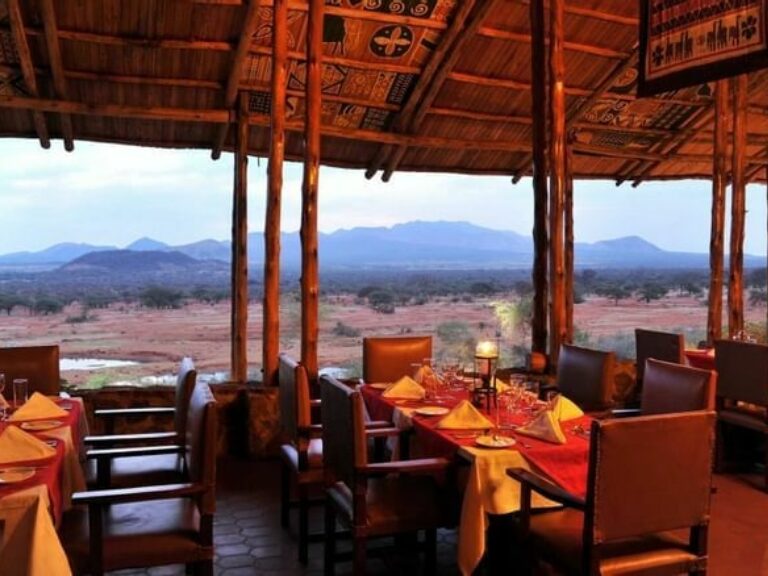
Tsavo East & West National Parks
Kilaguni serena lodge.
In Tsavo West most of the accommodation is fairly expensive (unless you have your own camping gear in which case there are three spartan public campgrounds). A reasonably-priced option is the Kilaguni Serena Lodge – it’s far from a budget offering but the Serena collection is generally pretty good value. If you have the budget to blow, Finch Hattons is the most exclusive camp in the park, with an eye watering price tag to match.
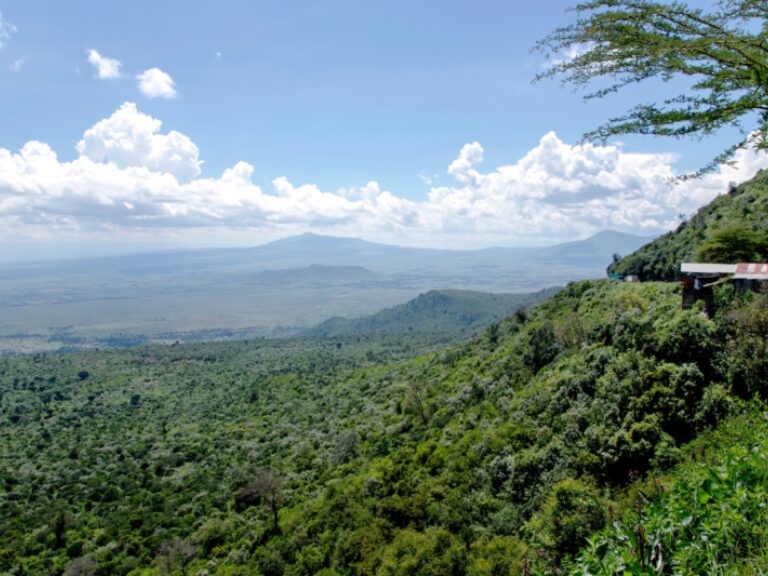
Loita Hills
Best walking safari.
In my opinion the best way to experience a safari is to ditch the 4X4 and explore on foot. With a good tracker-guide you’ll see all the little things you’d otherwise miss if you’re stuck in a vehicle all day. Walking is often forbidden within state-run national parks but is usually allowed, even encouraged, in conservancies. If I had to pick a favourite place for a walking safari in Kenya it’d be Loita Hills without question. Although not far from the Masai Mara, Loita Hills is barely visited by tourists despite boasting superb and varied scenery, a lovely climate, very different wildlife to the lower savannah plains, and fascinating interactions with very traditional Maasai culture.
Also, while Kenya doesn’t really compete with the multi-day Tanzania trekking scene, some organised trekking may be found here, as well as in the Aberdares and around Mt. Kenya.
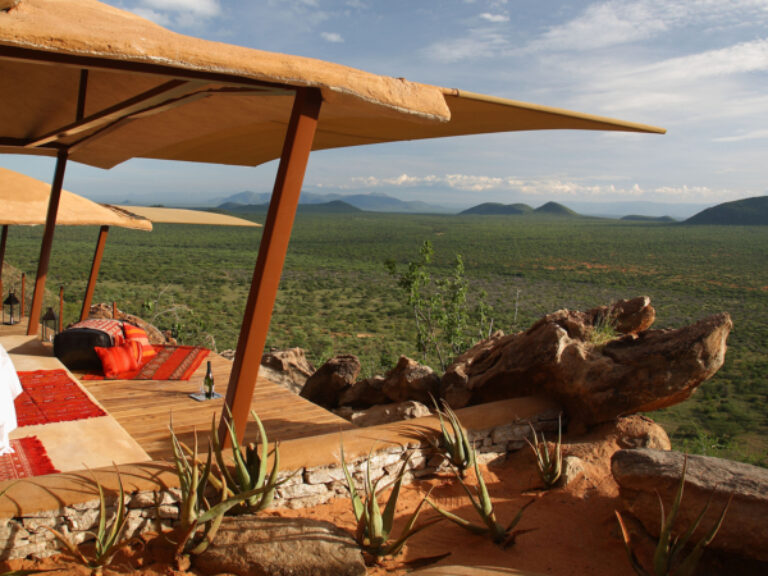
Saruni Samburu
There’s only one lodge within the Kalama conservancy, immediately to the north of Samburu Reserve, and it’s likely going to be one of the most spectacular places you’ll ever stay. Built into, around and onto a huge granite outcrop, Saruni Samburu is almost invisible from a distance but the stunningly turned out rooms offer a cliff side view over what feels like half of northern Kenya.
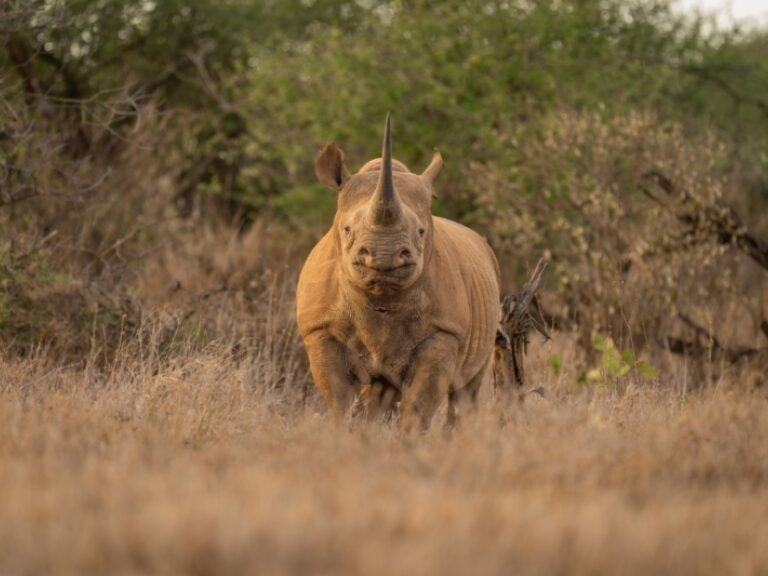
Lewa Conservancy
Lewa, in the Laikipia plateau area, is perhaps the most famous of all Kenya’s conservancies. And for good reason: this is safari to order. Want to see a black rhino? No problem. One of the superb guides will manage to find one. Lions, cheetah, elephant. They are all found here in abundance.
And it’s not just the wildlife that’s outstanding. The landscape is cinematic in its scope. Rolling sun bleached grasslands, table flat acacia trees, meandering rivers and a backdrop of the glinting glaciers of Mt Kenya.
The other great thing about Lewa (and this is common to all the Laikipia area conservancies) is exclusivity. If you’re not a guest of one of the handful of lodges then you can’t go on a safari here.
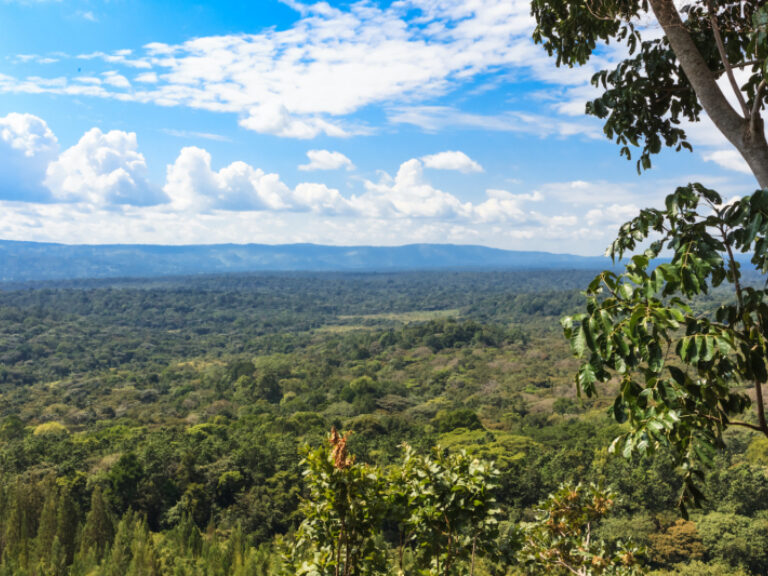
Kakamega Forest Reserve
Kenya’s safari hidden gem.
Just north of the equator in far western Kenya, is Kakamega Forest — Kenya’s only tropical rainforest. The land here is wet, green and intensely cultivated with a mix of subsistence farming and large tea estates. In amongst all this though are a few pockets of the dense rainforests that once covered large parts of western Kenya.
The Kakamega Forest Reserve is a fine example of this kind of forest and interesting walking safaris here reveal bird and primate life that has more in common with the forests of Uganda and the Congo than anything you’ll see on safari in Kenya. Wander the forest’s network of trails and take in the huge variety of flora and fauna it supports, including hundreds of bird species, some of which are not found anywhere else.
In my opinion, Kakamega is one of the most delightful places in Kenya, but yet hardly any tourists know of its existence. It should be a must visit for any ornithologist or herpetologist. As well as birds, reptiles and primates, I found the visit to the old mine shaft to look for bats especially memorable.
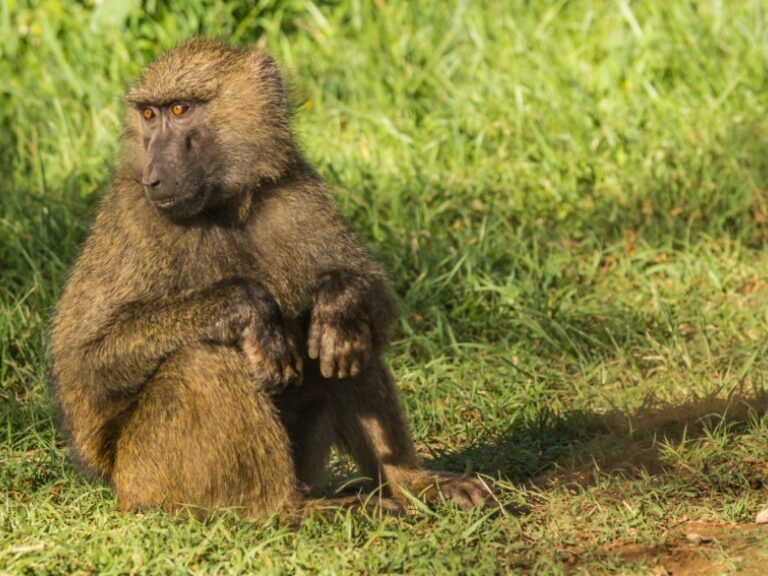
Up close and personal with baboons
Laikipia is known for its rhino conservation, but my own personal highlight in this area wasn’t the rhinos. Rather it was the day I spent with a biologist in very close proximity to around 200 habituated baboons. Having a huge male baboon shove its way past you as it bares its teeth was an experience easily on a par with gorilla and chimpanzee encounters in East Africa. The other nice thing about this particular experience is that it doesn’t involve staying inside an expensive conservancy but rather you are hosted by a grassroots Maasai womens’ project. And hardly anyone – even other Kenyans – know about it!
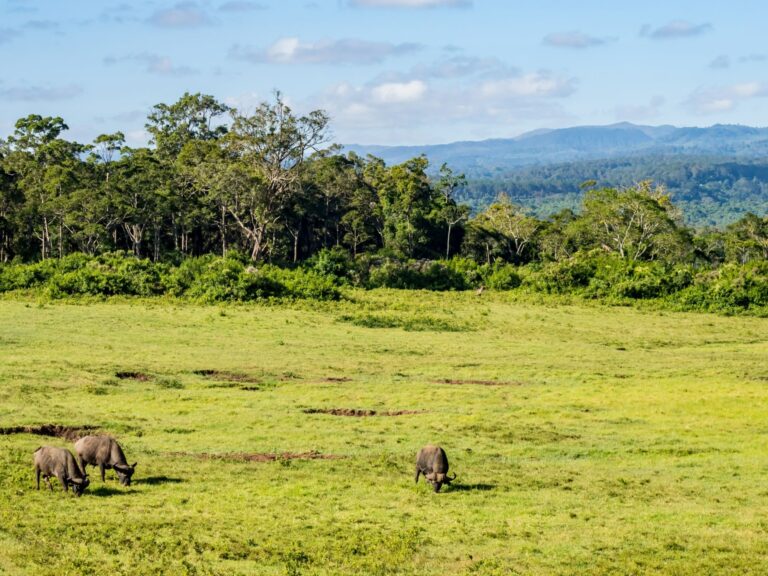
Aberdare National Park
Hiking in aberdare national park.
A world away from the African safari image of savannah grasses and drooling sunsets, the Aberdares consists of two different ecosystems. A high, cold and often bleak moorland and, below that, dense tangled montane jungle.
The wildlife here is a little different and a little harder to spot. But elephants are very common as are big grumpy buffalo. There are also montane species you won’t see anywhere else including bongo antelope, bush pigs and melanistic leopard and serval.
Unusually among Kenyan national parks, you can also get out of the vehicle here and enjoy long, lonely hikes over the moorlands: I have really enjoyed the sensation of trudging across the bleak moorlands in cold afternoon drizzle while always keeping a beady eye out for roaming buffalo.
The park also has some history. In 1952, a young English lady named Elizabeth was staying at the famed Treetops Lodge here (today’s version is actually a reconstruction of the original) when it was announced that her father had died. And so it was, that on a remote Kenyan mountain slope, that young lady became Queen Elizabeth II. Many years later her eldest grandson, and future king, proposed to Kate Middleton in a small wooden fishing cabin in a spot not so far away from where his grandmother became Queen.
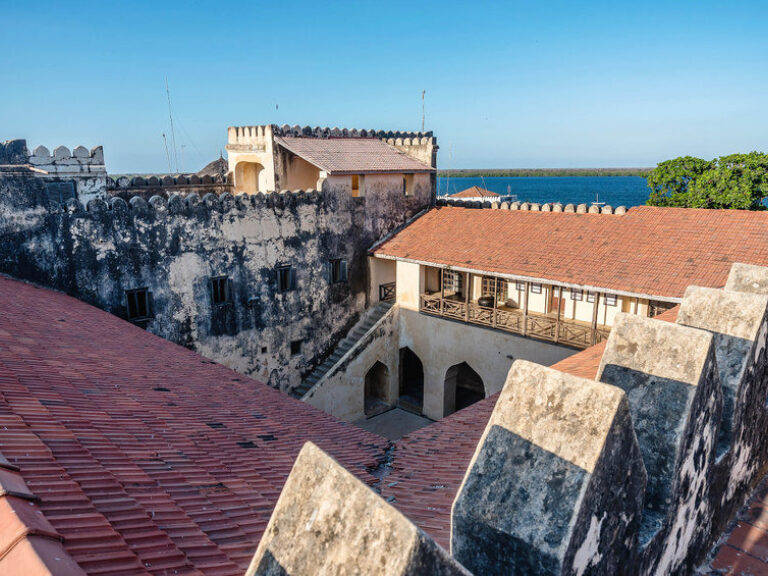
Lamu Island
Post-safari beach time.
If time allows I highly recommend you find a couple of days to wash away the safari dust on Kenya’s palm-fringed coastline. The country has many beautiful beach destinations but the standard itineraries tend to focus on Diani, south of Mombasa. My vote goes for the underrated Lamu archipelago, and in particular the old Swahili trading town of Lamu, which always leaves me enchanted.
Mara North Conservancy
Featured kenya safaris.
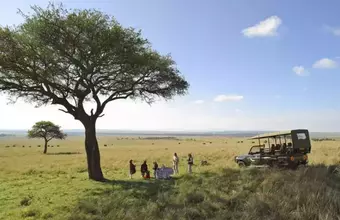
Affordable Masai Mara Safari
Samburu, Rhinos and Mara Safari
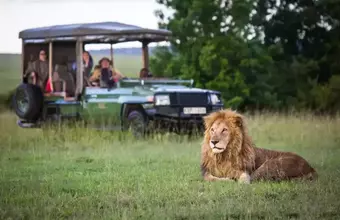
Enchanted Kenyan Safari
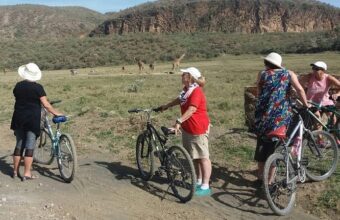
A Taste of Kenya
19 day small group tour.
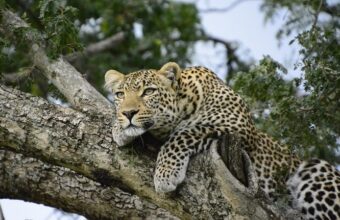
Family Memories
16 day private guided safari.
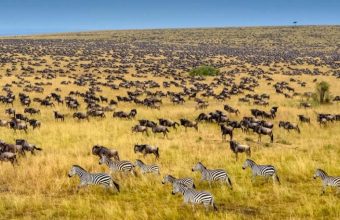
Tanzania and Kenya Safari
The greatest safari on earth, kenya's best safari parks, kenya’s most popular safari parks and lesser-known hidden gems.
In a standard two week safari it’s perfectly possible — in fact I'd highly recommend — to explore three or four different protected areas. Ideally with each one offering a totally different habitat and set of wildlife inhabitants. If I had to pick a favourite, I'd probably vote for Meru National Park, but any of the following could feature on a Kenya safari.
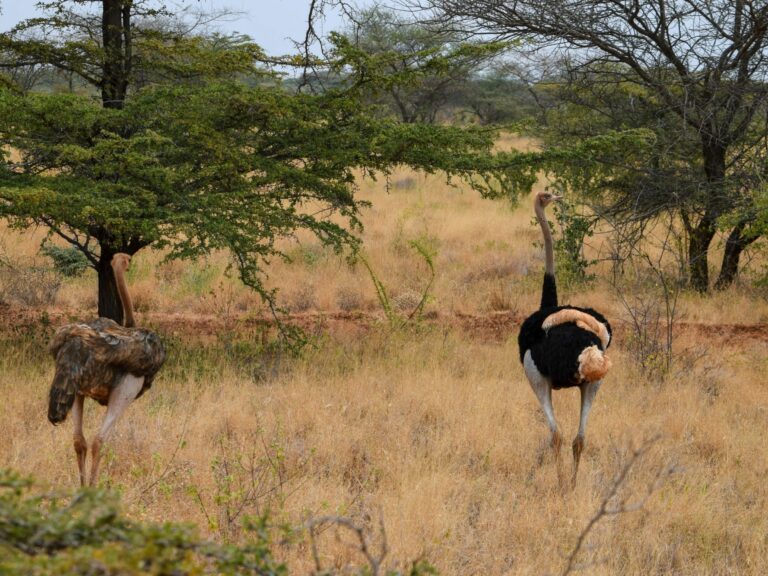
Best for tranquil, crowd-free safaris
Meru, the country’s forgotten national park, is easily one of my favourite of all Kenya’s safari parks. This was once one of the most popular parks in the country but during the 1980s, when Kenya was going through a rough political patch and instability overwhelmed some parts of the country, Meru turned into a hotbed of poaching.
Security and stability have long since returned, yet somehow this park never returned to its former fame. But for those in the know – and that now includes you – Meru National Park is safari gold.

For the classic – if busy – Kenya safari
The very essence of an African safari landscape, the Masai Mara stretches along the Kenya-Tanzania border and forms the northern fringe of the greater Serengeti ecosystem (most of which is in Tanzania ).
This is the part of Kenya in which I have spent the most time (months and months if I added it all up), and was the scene of one of my best ever travel experiences. Some years ago a Maasai friend and I set out on a five week hike that took us across the entire Mara ecosystem. By day we walked alongside the wildlife and Maasai herders. By night we camped out under the stars and slept in traditional Maasai villages. An unforgettable adventure!
This is the place to see large prides of black-manned lions, bellowing elephants, grumpy buffalo and a pick ‘n’ mix box of antelope and gazelles. And that’s before we even touch on the smaller creatures and huge array of birds. But, above and beyond all else, the Mara is renowned for the spectacular wildebeest migration .
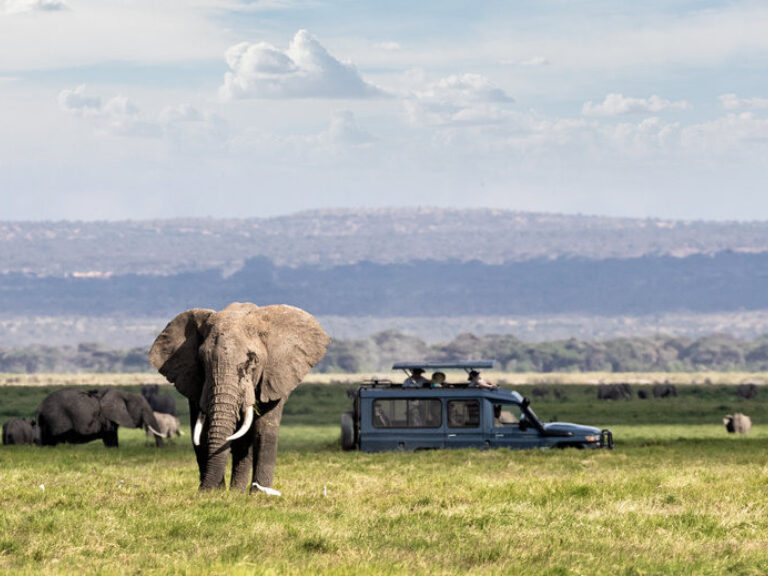
For elephants & Kilimanjaro views
Amboseli National Park is the postcard park of Kenya. This is where those photographs are taken of elephants with a backdrop of the (fast melting!) glaciers of Mt Kilimanjaro. I have spent many dreamy mornings parked under an acacia tree, a thermos of coffee in hand watching the rising sun tinge the snows of Kilimanjaro a pinky-red.
The elephants and the scenery are the real highlights of this park. In dry periods they flock here from miles around to quench their thirst in the swamps and pools that splash the dusty landscape in greens.
Another big reason to visit Amboseli is the chance to see conservation in action in the conservancies and other environmental and community projects surrounding the park.
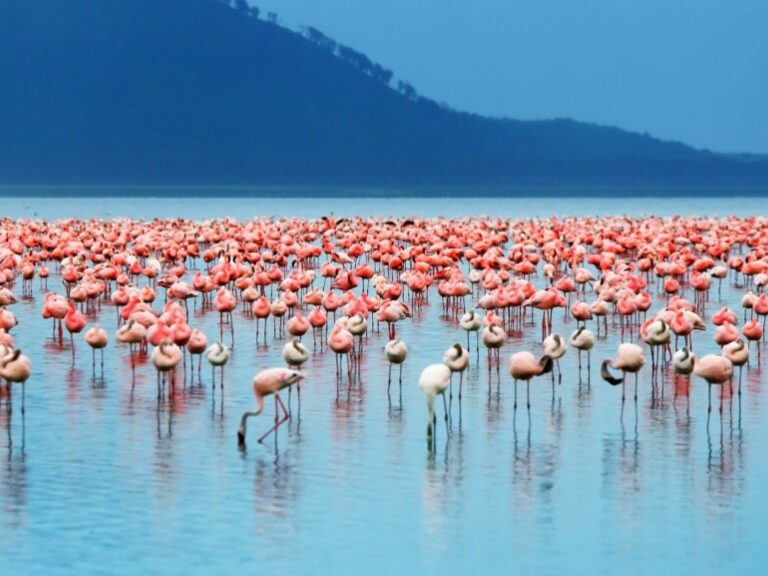
For wetland safari & birdwatching
Just 5 kilometres from the big city of Nakaru, Lake Nakuru National Park’s accessibility makes it one of the most popular Kenya safari hotspots. It’s centred on the large Rift Valley soda lake of the same name, but also encompasses fringing grasslands, acacia woodlands and rocky escarpments.
The park is best known for its sometimes huge flocks of flamingos and a large rhino population. Back in the 1990’s, Lake Nakuru was the first place where I saw a really huge flock of flamingos. I’d seen the odd handful before, but the thousands upon thousands I saw here on that day sticks in my memory. The smell (ah yes the smell!), the noise, and of course the searing pink colours; It was one of the moments that made me fall in love with Kenya.
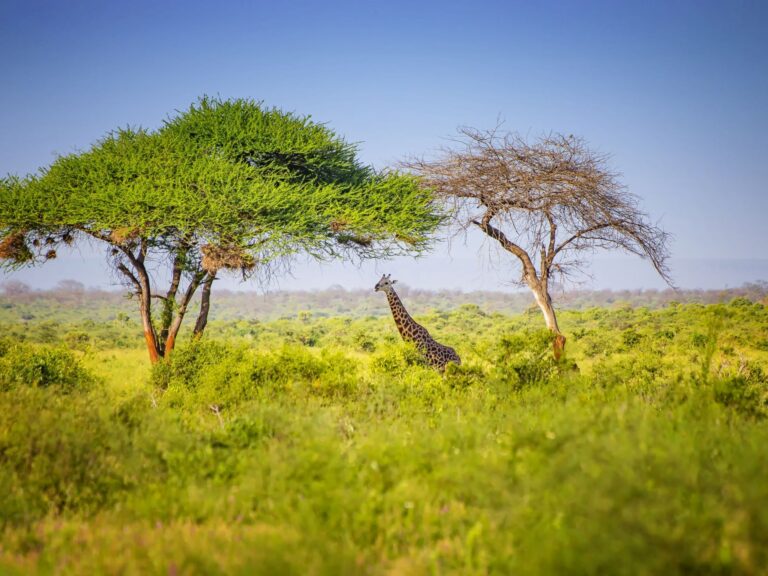
Best for wide open spaces
Combined, Tsavo East and West National Parks cover an enormous swathe of acacia scrub Kenyan wilderness. Tsavo West alone (the bigger of the two parks) covers an area greater in size than Wales, or two and half times the size of Yellowstone National Park.
The two parks are separated from each other by the Nairobi-Mombasa highway and are easy to reach from either city.
Despite being directly adjacent, the two parks are radically different from one another with the green hills of Tsavo East a marked contrast to the red soil and volcanic landscapes of Tsavo West. Because of their diversity and sheer size, I strongly recommend you devote enough time to the parks if you’re going to visit them. The rushed two-day safaris from Mombasa (or Nairobi) simply don’t allow enough time to get much out of a visit.

For world-leading conservation
The Laikipia plateau area in central Kenya is one of the most exciting places in African conservation. This isn’t a single national park or reserve, but rather a network of interlocking private and community-run conservancies where people, livestock and wildlife live together to the benefit of all.
Laikipia hosts all the classic East African safari mammals but is best known for its rhinos, including the critically endangered northern white rhino, only two of which are left alive. Both are female and so, tragically, this is a species awaiting extinction. They can be seen at the Ol Pejeta conservancy.
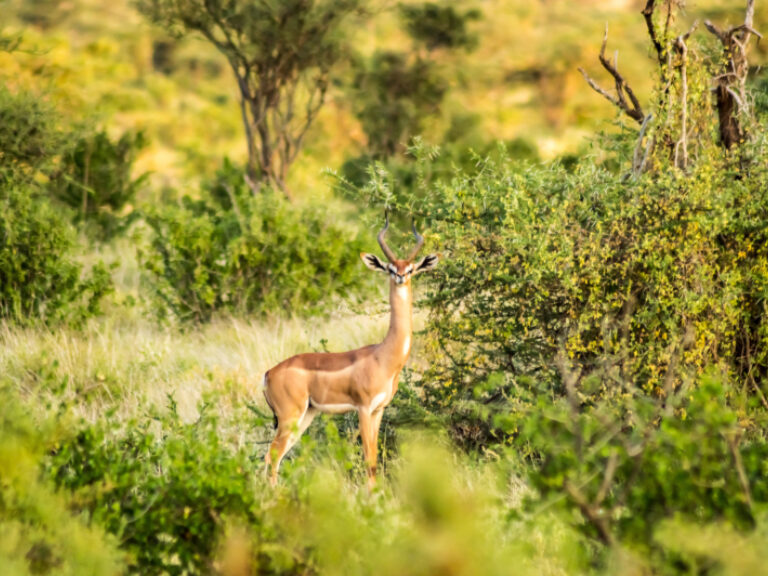
Kenya’s remote far north
Samburu, Buffalo Springs and Shaba National Reserves are three interconnected reserves on the edge of northern Kenya’s vast semi-desert wilderness.
Far removed from mainstream Kenyan life, these northern regions have a wild reputation. The landscape is harsh with endless sunburnt plains of acacia thornbush out of which rise the occasional fertile and densely forested mountain peaks, ranges, table lands and volcanic plugs.
Elephants, in particular, are the main event here. There are large herds who can migrate huge distances in search of water.
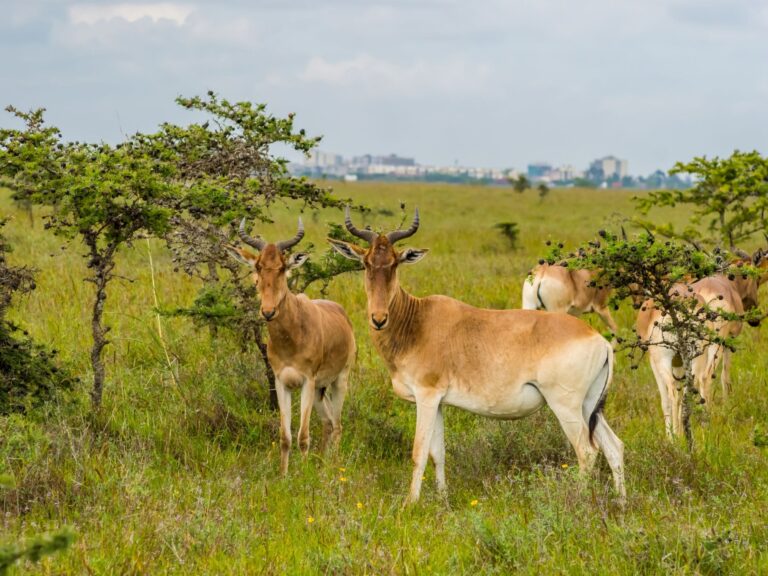
Safari in the big city
While most capital cities have their collection of ornate parks filled with neatly cut lawns, manicured flower beds and perhaps a boating lake, Nairobi has gone one step further.
Its biggest ‘park’ is in fact a 117 square kilometre swathe of undulating savannah grassland and acacia woodland. And while it doesn’t have a boating lake, it does have lions. And buffalo. And rhinos. All of which means that it’s probably not such a sensible place for an after work stroll.
It’s a fabulous safari destination but is woefully overlooked by international visitors to Kenya. This is a shame, because Nairobi National Park is an excellent safari location in its own right. I have been many times, often just for a quick half-day drive from the city. This was the place I first witnessed the thrill of a hunt: a cheetah racing, but failing, to grab dinner for her cubs.

A pair of ostrich in Meru National Park
Kenya safaris: Need to know
Everything you wish you'd known before you booked.
My first Kenya safari was in 1994 and I’ve been coming back pretty much every year since. Here’s what I’ve learned over the years about the best way to plan and book a safari in Kenya.
Mix up your itinerary
My single most important tip for Kenya safari first-timers is to avoid the mistake of non-stop game drives. Standard tour operator itineraries shuttle you from park to park with a gruelling schedule of game drives. Yes, this is the best way of seeing large mammals up close, but the bumpy tracks, early starts and long hours quickly exhaust even the most ardent wildlife-watcher. And there is so much more to safari in Kenya that you’ll miss from racing around in a jeep. Break it up. Look for operators who offer bush walks, village visits, and conservation projects. Or simply take an afternoon or two to sit back under a tree enjoying the sights, sounds and smells.
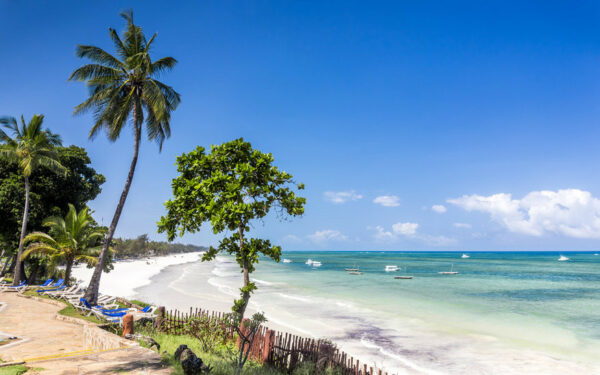
Many visitors to Kenya devote their entire trip to going on safari…
Don’t miss Kenya’s many hidden gems
Most standardised Kenya safari itineraries reduce the entire country to the blockbuster highlights: the Mara, Amboseli, Lake Nakuru… maybe Tsavo and Samburu if they’re feeling adventurous. This does a great disservice to the country’s true diversity. There’s so much more to a Kenya safari than racing around the savannah chasing the big five and I’d strongly advise you find time to visit some of Kenya’s numerous hidden gems.
For instance, out in the far west is Kakamega Forest Reserve which has more in common with the rainforests of Uganda and the Congo than the classic Kenya landscape. In my opinion this is one of the most delightful places in Kenya, yet hardly any tourists know of its existence.
Another personal favourite that’s a world away from the classic Kenya savannah is Aberdare National Park where dense tangled montane jungle gives way to a high, cold and often bleak moorland. Unusually among Kenyan national parks, you can also get out of the vehicle here and enjoy long, lonely hikes over the moorlands.
But that’s not it: Saiwa Swamp, the Chyulu Hills, Hells Gate, Ruma National Park, and many more that rarely feature on the mainstream Kenya safari circuit but are usually accessible on a self-drive safari, or with more specialist safari operators.
Get out of the safari bubble
Many safari goers, especially those on a high end tour just bounce from one heavenly safari camp to another. Sure, you live the Hollywood Africa dream but you’ve not really experienced real Kenya. Instead, hop on a bus and head out to one of the numerous small market towns where most Kenyans live. You’ll experience a totally different side of the country and it’s one that will stay with you long after the sundowner safari drinks fade from memory.
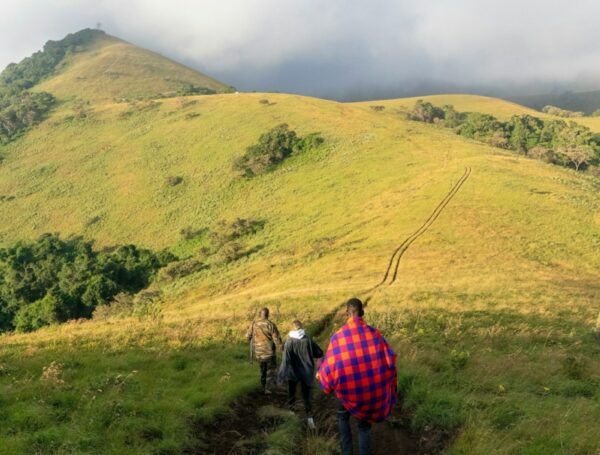
Kenya off the beaten track
The parks and reserves covered in my Kenya safari guide are only the best-known and most visited of the country's numerous protected and other natural areas…
Stay in at least one conservancy
National parks, reserves and conservancies are mentioned a lot in this guide, but just what is the difference and why does it matter?
A national park or reserve is a government or local council run protected area. Most of the best-known protected areas in Kenya fall into this category.
These areas are run solely for the benefit of wildlife and tourism, sometimes at the expense of local people. Tourism in these areas creates jobs, but locals are often forbidden from entering these protected areas other than for work reasons and communities were often (but not always) removed from their land when the parks and reserves were created. Corruption can be a problem with the money generated by these parks not always going where it should.
A conservancy is a different affair. A conservancy is normally located on either communal land owned by the community as a whole or on private ranch land and has no official government status. On a community conservancy the tourism stakeholders (i.e. the safari camps) lease the land from the local communities on the condition that the land is managed in a manner that is of benefit to both people and animals. The (normally very high) fees you pay to stay in a conservancy go toward paying the land leasing fees as well as various community and environmental projects.
Other conservancies may be located on private ranchland, in which case they have to make enough money for the landowner to financially justify turning his land over to wildlife conservation over cattle ranching.
In other words, a conservancy is run for the benefit of both wildlife conservation, tourism and the needs of local communities (in many cases local people are allowed to continue to graze their cattle on a conservancy but in a controlled and sustainable manner).
All of this means that staying in a conservancy is not just a great safari experience but it’s also very good news for conservation!
Do a homestay
For a cultural experience you’ll never forget, try spending a night at a Maasai homestay near the Masai Mara. Finding authentic, community-run homestays can be a bit of a minefield. I can recommend Sekenani Maasai Development Project (Semadep) but there are others – make sure you book with a community owned and operated outfit, and check reviews carefully.
Caution needed: "Human safaris"
In my opinion, one of the big problems with the safari industry is the way it prioritises seeing wildlife over having meaningful connections with local people. In fact, other than being served by their guides, drivers and camp employees, a typical safari-goer might not have any interaction with a local at all. To me, this is the exact opposite of how it should be done! In my experience, a good trip to Kenya isn't just about seeing wildlife: it should put intimate, authentic interactions with local people at the heart of the whole experience. You can make genuine connections and real friendships as you sit around, sharing stories, laughing and learning from each other.
On the other hand, mainstream Kenya safaris are often sold with "village tour" or even "slum tour" add-ons. These "goldfish bowl safaris" as I call them are unethical and nothing short of exploitation. They violate the privacy, integrity and dignity of local communities and undermine sustainable development by perpetuating a myth of backward, poverty-stricken people. The traveller thinks they're doing the right thing by getting some cultural interaction, but in reality it's deeply damaging. I strongly encourage visitors to avoid anything that feels contrived, and look for trips that put real people at the heart of the experience, rather than an afterthought.
How to plan & book a Kenya safari
There are three broad categories of safaris in Kenya.
The first and easiest option is to book a week(s)-long, multi-stop itinerary through a tour operator, either locally-based or international. This provides the most hand-holding and support for cautious visitors, plus more protection should things go wrong. The potential downside is getting shunted onto one of the more formulaic itineraries and simply following the crowds around the most popular parks. If you book a full tour with an operator, try to find a genuine specialist and ask about visiting some of the lesser-known locations mentioned in this guide.
Secondly you can simply show up and book a safari tour once in-country from the hundreds of operators in Nairobi. There’s nothing inherently wrong with doing it this way but I strongly advise you don’t just book something in the street. Do your homework first and find a reputable, responsible operator. Things to double check include whether park entry fees are included in the price, vehicle type (avoid cramped minibuses), and accommodation type.
Thirdly, and probably my recommendation for all but the most cautious of visitors, is to book the accommodation yourself, rent a car (or a car plus driver), and head out solo. You can take your own camping gear or book into lodges or camps (booking ahead is essential!), or mix camping with more comfortable nights in lodges. I strongly advise renting a vehicle plus driver. It’s often cheaper plus you get an unofficial local guide who knows the ropes. A good driver will become a cultural and language translator, wildlife guide, fixer, and general guardian angel.
Aim for shoulder season if possible
High season in Kenya is the peak summer months of July to September, before the rains begin. In my experience the best time to visit – especially in the busier parks – is either June before the crowds arrive or September-October as the crowds are thinning out, wildlife viewing is excellent and temperatures are ideal.
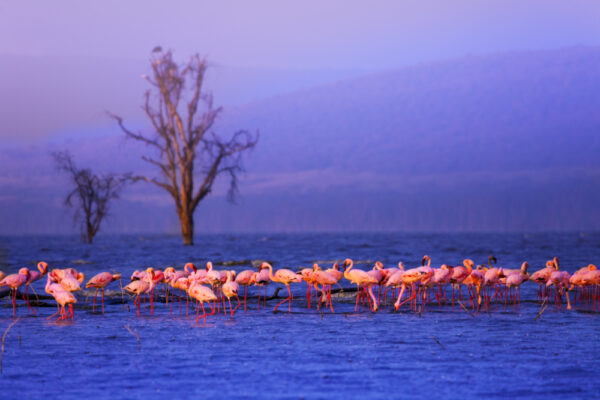
The best time to visit Kenya for safari
January & FebruaryThis is a hot and dry period…
Be prepared to splash out!
There are almost as many different ways of doing a safari as there are stripes on a zebra and how, when and where you safari makes a huge difference to what you pay. Expect to pay anything from $150 to $1,000+ per person per day.
You can find very low budget two or three day safaris to the Mara from around $250 all in, but these are generally rushed, crowded and uncomfortable. If you’re looking to shave off some costs without compromising on the experience, consider doing a DIY camping safari with your own vehicle and driver.
My other big Keny safari tip is to spend as much as your budget allows on fewer nights in better conservancies and camps. Packing more into fewer days gives you much greater bang for your buck.

Kenya safari costs
For a multi-day, mid-range safari visiting some of the big name parks and reserves then you’re looking at around USD $300-600 per person, per day…
Kenya safari FAQs
Your questions, our expert answers, is it safe / a good idea to rent a car in kenya and drive yourself around, or is it better to join a tour.
Yes, it's perfectly easy to do a self-drive Kenya safari . When you ask if it's "safe" that depends a little on what you mean. If you mean are there bandits, car jackings, dangers from wildlife, etc, then no you are quite safe. Instead the danger is from other drivers, as the driving conditions can be a little 'hectic' in places and accidents are common.
I'd recommend hiring a car with a driver, which can be a cheaper and, in my opinion, a much better option. A good driver will know the lay of the land, the driving conditions, best places to stop for lunch, etc. And they are often knowledgeable of the wildlife. A good driver will be both your driver and guide, and probably become your friend!
Almost any tour company in Nairobi or Mombasa can organise a private vehicle with a driver. Standards and prices vary hugely, so explain to the tour company exactly where you want to go and get in writing exactly what is and isn't included. Pay particular attention as to whether fuel, and the drivers food and accommodation is included in the rates. Also make sure you're booking the right vehicle: a 4WD may be needed for more remote areas.
Where’s the best place to see the big five in Kenya?
Seeing all the big five (lion, leopard, elephant, buffalo & rhino) in one park is hard. Only Lewa and some of the conservancies in Laikipia can honestly claim to offer easy sightings of all five. But, who cares! This fixation on racing around to tick off just five species is an anachronism from colonial-era big game hunting days. There’s so much more to Kenya’s wildlife and the modern safari experience.
We're visiting the Masai Mara but would like to visit another area on safari in Kenya. Can you recommend anywhere very different to the Masai Mara to see different wildlife and landscapes?
The most common combinations for a short add-on to the Masai Mara are Amboseli , Laikipia or the Samburu area.
For your requirements of a different habitat and wildlife then without doubt I would suggest Samburu National Reserve. This is a much drier and hotter area than the Mara with different vegetation and animals. And, even the animals you might have seen in the Mara are different up here with different species of giraffe, zebra and ostrich all present (and in my opinion all more beautiful than the kinds in the Mara). The park is also superb for elephants.
Samburu, though still popular, is notably quieter than the Mara and, once away from the river, it's easy to feel you have the place all to yourself (and especially if you go into the co-joined Buffalo Springs and Shaba reserves). Depending on when you are there you will find direct flights from the Mara, but otherwise will have to go via Nairobi. If you're driving it's a long way – a 10 hour non-stop drive, so flying is the better option.
Would you recommend staying at Elephant Bedroom Camp in Samburu Reserve, or at Sarara Camp in Namyunak Conservancy?
The quantity and ease of seeing the wildlife is better in Samburu Reserve than in the neighbouring Namyunak Conservancy (because the wildlife is drawn to the river running through the reserve). But there's not a huge difference in habitats or species between the two.
Elephant Bedroom Camp, in Samburu, is a fabulous, small camp. You'll see a lot of elephants and the owners are some of the worlds foremost elephant experts.
In Namyunak Conservancy, Sarara Camp is one of the most exclusive – yet low-key – camps in Kenya. There's slightly less wildlife than in the reserve but it's very close to the reserve and safaris from Sarara often enter the reserve.
The bonus with Sarara is exclusivity. You and the other camp guests will have the entire place to yourself meaning no crowding around animals (though that's rarely a problem in Samburu).
Unlike in the reserve itself you can do walking safaris in the conservancy and there will be more interaction with local people. The final plus is that by staying on a conservancy you will be actively helping to fund private/community conservation initiatives, which isn't always the case when staying only in a reserve or national park.
Overall then, I would opt for Sarara Camp, but I suspect it does cost more, so it might come down to budget!
We are travelling with a large group of 5 families with 3-4 kids per family. What are the best budget friendly safaris in Kenya in July?
If most of the children in your group are very young, your options are fairly limited as the reality is that a longer, multi-day safari can be a bit much with very young kids. I first did a safari with my kids when they were five and two years old and although it was good I probably wouldn't do it again! Past the age of about eight or nine the safari experience gets much easier, as they'll will tolerate sitting in a jeep on a bumpy road for longer.
Do be aware that some safari camps don't accept children below the age of 12. These are normally the unfenced camps and it's done for safety reasons.
You will also need to keep in mind that you will either need several safari jeeps and to travel in convoy or a bus (and these aren't always allowed in some parks). Because you will be travelling with so many children I would suggest small safari camps which you can book out for your group alone. Some of these are more child friendly than others. Some possibiltles that I believe might work well for your group are: Maji Moto Eco Camp, Loita Hills Basecamp, and if you are interested in a Maasai homestay style experience then I'd suggest Semadep Camp, who can arrange homestays around the Masai Mara.
As for specific parks and reserves the Masai Mara area is good because there's a lot of animals to see everywhere you look which keeps children interested. Also good are Nairobi and Narok national parks because of easy access and good roads. Lake Naivasha is good for families too.
It would be easy to combine all these places into a 10 day safari and then you could maybe finish up on the beach (Lamu and Watamu are both superb for families).
Can you recommend any family-friendly camps/lodges in the Masai Mara?
I would suggest rather than staying within Masai Mara proper, stay in one of the conservancies that now fringe the Mara.
In the most basic of terms these are like private, community-run wildlife reserves. Conservancy operators lease the land from local people and each local family receives a guaranteed monthly payment. The conservancy also provides employment and sets up development projects. People continue to graze their cattle but in a more controlled manner. And in return, fences are removed and the wildlife encouraged to return to the lands they were once driven out of. The conservancies have been a great success both for wildlife and local people. And, for tourists, they offer a very exclusive experience and the world's finest safaris.
Each conservancy has only a handful of very discreet high end camps and only guests of those camps can go on a safari in the conservancy, which means crowds of vehicles around a lion are non-existent.
The conservancies also allow activities not permitted within the reserve such as walking (highly recommended), bush camping, night safaris, etc. This makes them ideal for kids because it breaks up the routine and allows a little more freedom.
The safari vehicles and guides used in the conservancies are absolutely the best in the game and the wildlife populations are the equal of the actual reserve. However, there's a catch (of course...), conservation like this doesn't come cheap. All of the conservancies are superb but some names are Naboisho, Mara North and Nashulai Maasai Conservancy (this last one being slightly cheaper than the others and lots of focus on meeting local people). As for actual camps you cannot go wrong with any of them. All the conservancy camps are superb. I'm a big fan of the Basecamp offerings, Off-Beat and Kicheche. All are a little less extravagant than some of the other camps.
If you want to only visit the reserve and not a conservancy then I suggest either Basecamp Mara, Oldarpoi or you could go for a Maasai homestay in Sekenani village. Expect basic but perfectly comfortable rooms but an amazing experience. Your kids would really enjoy this.
Is February a good time to visit the Masai Mara, or would June-July be better? What would be the differences?
February is a very good time for safari in the Masai Mara , but also very different to the experience in June and July.
It's hotter and drier in February and generally there are fewer other tourists. There will still be plenty of zebra and wildebeest around but these are the non-migrating resident herds, so they don't form the massive iconic herds that you might see on TV.
July is good because the migrant wildebeest are all normally in the Mara by then, but its also absolute peak high season so can be busy and expensive. June is perhaps my overall favourite month. Everything is green after the rains and it's nice and cool with far fewer tourists than July, but the first migrant wildebeest might start to arrive (it all depends on rains and the state of the grass).
In short, all three months are excellent but each is different so it might be best to go with whatever just suits your timings better.
I will be in Kenya in early March and am looking for a five day safari for wildlife photography and birdwatching. Where would you recommend for me noting it is the start of the rainy season?
Early March is still a bit early for the rainy season so you might just get the odd thunderstorm. If birds are your real interest and you only have five days then probably the easiest is to go down to the Masai Mara via the Rift Valley lakes of Naivasha and Elementia or Nakuru. This would give you a good range of avian habitats and species in a short space of time. Don't forget as well that Nairobi itself has some excellent birding in the various forests and parklands in and around the city. Plus of course, there's the superb Nairobi National Park where you will see a lot of wildlife and birds.
We can't travel during the migration river crossings, are there other impressive spectacles at other times of year?
Yes! I think calving season during the wildebeest migration is just as spectacular as the more famous river crossing period.
This period runs from December to March around the Ndutu Plains to the south of Serengeti. During this time the wildebeest and zebra stampede over the plains preparing to give birth to thousands of calves. At the same time the big cats are on the lookout for an easy snack. With vast numbers of animals, their sounds and smells, all of the little calves, and the big cats on the lookout... it's theatre on an epic scale and you cannot be disappointed. And the extra benefit is that it's a much shorter drive here than to see the river crossings.
Robbin Meulemans
In this guide:, typical prices for a safari in kenya, when to go on safari in kenya, things to do in kenya other than safari, best safari camps and lodges in the masai mara, about the author.
Stuart is an award-winning travel journalist covering safari, trekking and conservation in Africa for the Lonely Planet, Rough Guides, BBC, Bradt Travel Guides, amongst many others. He is the author of Walking With The Maasai , a journey through some of Kenya's lesser-visited Maasai lands.
Featured tours

Kenya & Tanzania East African Adventure
21 day small group tour.

Other guides you might like
Gorilla safaris, an expert guide to seeing gorillas in the wild.
Philip Briggs
South africa safari, an expert guide to safaris in south africa.
Anthony Ham
Wildebeest migration safaris, an essential guide to planning a migration safari in tanzania and kenya.
Hans Cosmas Ngoteya
Safari in zambia, an expert guide to zambia's best safari parks, camps & lodges.
Sarah Kingdom
Safari in tanzania, tanzania's top safari parks and game reserves, safari in botswana, an expert guide to botswana's best safari reserves, camps and experiences, where and how to see the big 5 on safari in africa, safari in africa, our travel writers' top africa safari picks, zimbabwe safaris, an expert guide to the best safari camps in zimbabwe, chimpanzee trekking, an expert guide to seeing chimpanzees in the wild, namibia safari, an expert guide to the best safaris in namibia.
Melanie van Zyl
Featured tours view all.

Why Horizon Guides?

Impartial travel guides
Our guides are written by the leading experts in their destinations. We never take payment for positive coverage so you can count on us for impartial travel advice.

Expert itineraries
Suggested itineraries and routes to help you scratch beneath the surface, avoid the tourist traps, and plan an authentic, responsible and enjoyable journey.

Specialist advice
Get friendly, expert travel advice and custom itineraries from some of the world's best tour operators, with no spam, pressure or commitment to book.
Our guides are 100% impartial and are written by independent, professional travel journalists. We make money by charging carefully-screened travel companies to list their business on our website. Our advertisers have no influence on our editorial content and we never accept payment for positive coverage.
Read more about how we work and what we believe in here .
- Travel guides
- Work with us
Sitemap , Privacy Copyright © 2024 Horizon Guides
Call: 020 7843 3500 Enquire Now Enquire Now
- Wishlist ( 0 )
- Our Experts
- Travel Tips >
Kenya's Best Safari Parks And Reserves
When the topic of an African safari is brought up, Kenya must be one of the first destinations which comes to mind. It is after all, the birthplace of the safari and was the first country to introduce the concept of the Big 5. A Kenyan safari is a must for anyone looking to see a huge array of wildlife but knowing exactly which park or reserve to travel to can be tough. With that in mind, we’re highlighting the five places in Kenya for a safari that we feel are the best.
1. Masai Mara National Reserve
The iconic Masai Mara is widely regarded as the jewel of Kenya’s wildlife viewing areas, and deservedly so. A varied land of savannah woodlands, riverine forest and vast grassland, the reserve is home to an abundant predator population year-round, with the chance to encounter prides of lions, cheetahs hunting on the open plains and leopards stalking in the forests all serving as key attractions.
The Mara is also, of course, home to the ultimate wildlife experience from July through to September, when you'll witness thousands of wildebeest making their annual journey across the Mara River during the Great Migration . Some of Kenya’s most revered camps and lodges can be found in the Masai Mara, such as the famous Governors’ Camp which sits along the Mara River and has a bar tent and deck overlooking the river, perfect for tracking the migration.
2. Lake Nakuru National Park
Visitors from around the world are drawn to Lake Nakuru to witness the huge flocks of flamingos gathering at the lake, as well as the 300+ plus other species of bird which call the park home. Although the numbers of flamingo and pelican congregating in the area has decreased in recent years, it has been known to rise to up to 1.5 million. It’s not just birdlife which inhabits Lake Nakuru en masse, the park was declared a rhino sanctuary in 1983 and currently has a very healthy population of both black and white rhino. If you venture south to the forested area below Flamingo Hill, you’ll find the popular lion-spotting region, where you’ll see the lionesses sleeping in the trees as well as a few leopards.
3. Laikipia
Located to the north-west of snow-capped Mount Kenya, the high plains of Laikipia are increasingly being recognised as one of Kenya's premier safari regions. This thinly populated area offers endless vistas and stretches of complete wilderness, offering some of the most extraordinary views found anywhere in the country. On the wildlife front, the density of the wildlife population in Laikipia ranks second only to the Masai Mara, and the area supports more endangered mammals than anywhere else in East Africa, as well as a healthy number of endemic species including the Grevy’s zebra and reticulated giraffe. One of Laikipia’s biggest attraction is the huge number of rhinos. The region is home to an astounding 50% of Kenya's rhino population, with over 300 of the magnificent creatures roaming the vast plains.
4. Meru National Park
Having been restored since it fell into neglect amidst out of control poaching in the 1990s, Meru National Park is becoming an increasingly popular destination for wildlife viewing. It is still one of the least visited of Kenya’s big parks, but this works in its favour as it leaves an unspoiled stretch of land spanning 870 square kilometres, just waiting to be discovered.
Meru may not boast quite as many visitors as other well-established parks, but its wildlife population and game viewing opportunities matches almost any other park in Kenya. There are now increasingly frequent sightings of the Big 5, as well as cheetah and numerous other savannah species. The streams and rivers which run through Meru are a key feature of the landscape, and offer excellent opportunities to spot hippo, crocodile and the African fish eagle.
5. Samburu National Reserve
Deriving its name from the Samburu people who have been native to the region for many years, Samburu National Reserve is one of Kenya’s smaller parks in comparison to the likes of the Masai Mara but is teeming with life, nonetheless. The unrestricted savannah grassland has the Ewaso Nyiro River passing through it, which attracts an abundance of wildlife including a huge population of Nile crocodile, and the reserve is also home to the ‘Samburu Special 5’, the rare northern species which inhabit the park. These are the Grevy’s zebra, Somali ostrich, reticulated giraffe, gerenuk and the beisa oryx.
The birdlife at Samburu is prevalent, with over 350 species of bird including vultures, kingfishers, marabous, bateleurs, guinea fowl, and others. Other Kenyan wildlife present in the park includes cheetahs and lions, as well as elephants, buffalo and hippos. Elusive leopards are also found in the reserve and are best spotted in the evenings. While at Samburu, it’s also definitely worth making time for the cultural tours, where you’ll visit the local Samburu villages and get a chance to interact with the colourful Samburu people in their traditional setting and experience the culture.
Sign up for our newsletter
Africa travel latest, chris wain: named one of the world's top travel specialists 2024.
Africa Travel's Chris Wain has once again been named one of the world's top travel specialists by Conde Nast Traveler.
A Guide To Wine Tasting Tours In South Africa
Get the lowdown of South Africa's wine region.
A Guide To South Africa's Battlefields
Shaun Obery
Get the lowdown of South Africa's historic battlefields.
A Guide To Hot Air Balloon Safaris In Africa
Thought that nothing could beat the thrill of being in a safari vehicle as it bounds along in search of the resident wildlife? Think again – think hot air balloon.
A Guide To Golfing Holidays In South Africa
Get the lowdown on golfing holidays in South Africa.
A Guide To Birding Safaris In Africa
Felicity Balcomb
Discover why Africa truly is a bird lover's paradise.
A Guide To South Africa's Flora & Fauna
Julia Melim
Get the lowdown on South Africa's flora and fauna.
A Guide To Malaria Free Safaris In South Africa
Discover our run down of the top malaria-free safari destinations in South Africa.
A Gourmet Guide To Cape Town
Discover the flavours of Cape Town with our gourmet guide to the Mother City.
A Guide To Kosher Safari Holidays In Africa
Discover how easy it is to enjoy a Kosher safari in Africa.
Tailor-made Request Form
Please complete the below details so that we can forward you a personalised holiday quotation
Please note that due to the fluctuating currency at this time, all quotes are subject to change at time of booking.

Top 14 Safari Lodges In Kenya 2023
Kenya is one of the most renown countries for an African safari – best known for the Great Migration and the Maasai Mara National Park, it has other amazing game parks including the Amboseli National Park, Tsavo National Park, and Lake Nakuru National Park. Kenya is also home to Mount Kenya which can be found in the Mount Kenya National Park, which is a UNESCO World Heritage Site and a popular destination for hikers, climbers, and wildlife enthusiasts.
Safaris in Kenya consist of a guided excursion, either by safri vehicle or on foot. Professional guides will lead you through the parks, pointing out animals and plants explaining the various relationships between the animals and their habitats. You might even be able to take a hot air balloon flight over a park to get a bird’s-eye view of the wildlife below.
A safari in Kenya allows you to explore the local culture as well as view beautiful wildlife. Many safaris include trips to Maasai settlements, where you can learn about these legendary warriors and cattle herders’ traditional way of life.
When deciding where to stay on a Safari in Kenya it is important to consider which areas you want to visit and the kind of experiences you wish to have.

Maasai Mara National Reserve
The Maasai Mara National Reserve is a wildlife reserve in southwestern Kenya that borders Tanzania’s Serengeti National Park. The reserve is named after the Maasai people who live in the area and comprises 1,510 square kilometers (580 square miles).
The Maasai Mara is famous for its spectacular wildlife, and it is regarded as one of the greatest places in Africa to observe the “Big Five” – elephants, lions, leopards, buffalo, and rhinoceros. Many other species live there, including cheetahs, hyenas, giraffes, zebras, and many varieties of antelope.
The reserve is well-known for its annual wildebeest migration, which occurs from July to October each year known as the Great Migration. Millions of wildebeests, zebras, and antelope migrate from the Serengeti to the Maasai Mara at this time in search of fresh grazing and water. The migration is a breathtaking spectacle that draws thousands of people each year.
Cultural activities are also a fantastic highlight of visiting the Maasai Mara. Visitors can experience how the Maasai live during a cultural tour, including their traditional home, diet, and everyday activities. Students can also learn about the Maasai’s close relationship with cattle, which are seen as a sign of prosperity and prestige.
Traditional Maasai activities such as spear throwing, leaping competitions, and dancing are also available to visitors. These activities, which are accompanied by singing and chanting, offer a unique glimpse into the Maasai’s rich cultural legacy.

Amboseli National Park
Amboseli is well-known for its vast elephant herds, which can be viewed throughout the park. Other wildlife species found there include lions, cheetahs, leopards, buffalo, zebras, giraffes, and a variety of birds.
The sight of Mount Kilimanjaro, Africa’s tallest peak, is one of the delights of Amboseli National Park. On clear days, visitors may view the mountain’s snow-capped peak towering over the park’s plains. The combination of wildlife and mountain views creates an amazing experience.
Visitors to Amboseli can enjoy a variety of activities such as game drives, guided nature walks, and bird watching. Photographers visit the park to capture the breathtaking beauty and wildlife on film.
You can also take part in cultural tours from the Amboseli National Park.

Tsavo National Park
Mzima Springs, a series of natural springs that provides fresh water to the park’s wildlife, is one of Tsavo National Park’s highlights. Visitors to the springs can take a guided tour and see the crystal-clear water as well as the hippos, crocodiles, and other creatures that reside there.
Tsavo is also known for its breathtaking landscape, which includes rough hills, vast plains, and volcanic landscapes. The landscapes of the park make for a spectacular backdrop for wildlife viewing and photography.
Tsavo National Park visitors can engage in a variety of activities such as game drives, guided nature walks, and bird viewing. The park also includes a tour to a typical Maasai village where visitors may learn about their culture and way of life.

Lake Nakuru National Park
Lake Nakuru National Park is located in central Kenya, about 160 kilometers (100 miles) northwest of Nairobi. It is named after the alkaline lake that dominates the park and has an area of 188 square kilometers (73 square miles).
Lake Nakuru National Park is well-known for its diverse birdlife, particularly its resident flamingo population. Millions of flamingos live in the lake and feed on the algae that blooms in the alkaline water. Other bird species that can be found in the park include pelicans, cormorants, and storks.
Our Top 14 Luxury Safari Lodges In Kenya
There are a number of fantastic luxury safari lodges in Kenya, each lodge offers its own unique experiences, tastes and style. Here are our top 14 lodges to stay at while on safari in Kenya.

1. Angama Mara
Angama Mara is perched on the edge of the Oloololo Escarpment and provides breathtaking views of the surrounding plains.
The lodge is divided into two camps, each with 15 luxurious tented suites. The tents are fashioned in a classic safari style with modern facilities and are designed to optimize the views.
Angama Mara is inspired by the Swahili phrase that means “suspended in mid-air.” Angama Mara is a spectacular safari lodge overlooking Kenya’s Maasai Mara, regarded by many to be the most beautiful game reserve on the continent.
The lodge is divided into two camps, each with 15 luxurious tented suites. The tents are fashioned in a classic safari style with modern facilities and are designed to optimize the views. The lodge also has a private airfield with access to the Mara below, tailor-made safari days, and a notably warm Kenyan welcome.
Angama Safari Camp, an exclusive-use movable tented camp located deep in the Mara Triangle and amidst the giant herds during the Great Migration, complements the lodge superbly.

2. Mara Plains Camp
Mara Plains Camp is a luxury tented camp in Kenya’s Olare Motorogi Conservancy, which borders the Maasai Mara National Reserve. The camp provides a luxurious safari experience with first-rate service and amenities.
The camp is made up of seven luxury tents, each with its own balcony and en-suite bathroom. The tents are decorated in an exquisite, safari-style with modern facilities and are designed to fit into the surrounding nature.
Mara Plains Camp is well-known for its excellent wildlife viewing opportunities, especially for big cats like lions, leopards, and cheetahs. In addition, the camp provides a variety of activities such as game drives, guided hikes, and cultural trips to Maasai villages.
No other Maasai Mara camp provides the enormous traversing area that Mara Plains Camp does, with access to 40,000 hectares of private conservancy land and the world-renowned Maasai Mara, home of the Great Migration.

3. Porini Lion Camp
Porini Lion Camp is a luxury safari camp in Kenya’s Olare Motorogi Conservancy, which borders the Maasai Mara National Reserve. The camp is located in a private conservancy, making for a more private and intimate safari experience.
The camp is made up of ten spacious and exquisite tents, each with its own private veranda and bathroom. The tents are designed to blend in with the surrounding wilderness and have solar-powered lights and hot water.
While picking your Maasai Mara Hotel, avoid the tourist hotspots and go for a more authentic safari experience. The award-winning, eco-friendly Porini Lion Camp provides a one-of-a-kind opportunity to go on guided walks with Maasai Warriors and enjoy day and night safari game drives within the Olare Motorogi Conservancy.

4. Ol Pejeta Bush Camp
Ol Pejeta Bush Camp is a safari camp located in central Kenya’s Ol Pejeta Conservancy. The camp provides a one-of-a-kind and authentic safari experience, with an emphasis on sustainable tourism and conservation. Ol Pejeta is located in Laikipia County in central Kenya, overlooking the ragged slopes of Mount Kenya. The environment varies from wetlands and savannah to acacia and yellow-green fever tree thickets.
The camp is made up of six luxurious tents, each with its own bathroom and balcony. The tents are designed to fit with the surrounding bush, providing a private and personal safari experience.
The conservancy is noted for its innovative conservation activities, such as efforts to protect and conserve endangered species such as the northern white rhino.
Ol Pejeta Bush Camp is open June – April and closed in May, and it welcomes families and children of all ages.

5. Ol Seki Hemingways Mara
The Ol Seki Hemingways Mara is in the Naboisho Conservancy, which borders the Maasai Mara Reserve. The conservancy restricts access to clients staying in the region and provides an extremely exclusive safari experience. The lodge is made up of nine exclusive tents that provide amazing views as well as the best Kenyan hospitality anyone could ask for. There is no such thing as a typical day in Ol Seki Hemingways Mara. The lodge is tiny and attempts to personalize every day to your preferences, making your time in the Mara an unforgettable safari encounter.
In the Maasai Mara, wildlife is abundant all year, and game viewing is feasible at any time. The weather and accessibility of particular regions, however, vary according on the rains, which often arrive between May and June and in November.

6. Mara Nyika Camp
Mara Nyika Camp, which means “Great Plains,” is an intimate Great Plains Conservation Réserve-Collection safari tented camp nestled in a valley and is an ideal setting for your Kenya safari. The camp is hidden beneath the treetop canopy on the western edge of the Naboisho Conservancy, bordering the Maasai Mara.
All of the suites provide guests with breathtaking views of the plains. The walkways connecting the guest suites to the main area have the feel of a treehouse under canvas. The ethos and motivation of the camp are one of exploration and adventure. Mara Nyika Camp values privacy. Privacy to live, think, explore, be passionate, and be pampered – all with one of Africa’s most magnificent landscapes.

7. Saruni Mara Camp
Saruni Mara is a luxury safari lodge in Kenya’s Lemek Conservancy, which borders the Maasai Mara National Reserve. The lodge provides a luxurious safari experience with first-rate service and amenities.
Each of the lodge’s six exquisite suites and one family home has a private veranda and an en-suite toilet. The cottages are decorated in a contemporary African style with modern conveniences and are designed to integrate with the surrounding nature.
Saruni Mara is well-known for its excellent wildlife viewing chances, especially for big cats like lions, leopards, and cheetahs. In addition, the resort provides a variety of activities such as game drives, guided walks, and cultural trips to Maasai settlements.

8. Sasaab Lodge
Sasaab’s architecture, perched on the edge of a river valley, combines Swahili and Moroccan design principles, with the African heat as the key issue. Each of the nine canvas-sided rooms exceeds 100m2, with private plunge pools and breathtaking views across the Laikipia Plateau and Mount Kenya’s jagged peaks. Its elevated position over the river allows it to observe the elephant herds that come to bathe below, as well as a variety of other animals.
Sasaab Lodge is well-known for its excellent wildlife viewing opportunities, notably for Samburu-specific species such as the gerenuk, reticulated giraffe, and Grevy’s zebra. In addition, the lodge provides a variety of activities such as game drives, guided walks, and cultural trips to surrounding Samburu villages.

9. Ololo Safari Lodge
A small safari lodge on the outskirts of Nairobi National Park in Kenya. The warmth and comfort of a home are combined with seamless style and personalized care at Ololo Safari Lodge. Ololo, a historic Kenyan homestead that has been turned into a modest lodge, is wonderfully positioned on the lovely banks of the Mbagathi River, which forms the Nairobi National Park’s southern border.
The resort is only a 45-minute drive through the park from Nairobi and both major airports, but its remote position feels a world apart. Ololo brings you the pleasures of excellent ‘paddock to plate’ fresh food. Our established and isolated gardens allow guests to settle in and enjoy a one-of-a-kind safari experience.

10. Finch Hattons
Finch Hattons is a luxurious tented camp in Kenya’s Tsavo West National Park. Denys Finch Hatton, a great big-game hunter and explorer who was famously linked with Karen Blixen, the author of Out of Africa, inspired the camp’s name.
The camp has 17 beautiful tented suites, each with its own private veranda and shower. The tents are fashioned in a classic safari style with modern comforts and are designed to fit into the surrounding wilderness.
Finch Hattons is well-known for its outstanding service and customized attention to visitors.

11. Kilaguni Serena Safari Lodge
Kilaguni Serena Safari Lodge in Tsavo West National Park is a tranquil, hushed, and cool refuge framed by Mount Kilimanjaro and the rolling, volcanic landscapes of the deep green Chyulu Hills. It immerses you in stunning beauty and exhilarating adventures while surrounding you with every modern comfort. Our classic stone style enchants arriving guests, as do views of elephants, buffalo, and other plains animals drinking and cooling off in our water hole.
Tsavo West National Park is home to a diverse range of wildlife, including elephants, lions, leopards, buffalos, and other antelope species. The park is also famous for its breathtaking scenery, which includes spectacular hills, volcanic cones, and the Mzima Springs.

12. Elewana Tortilis Camp
Tortilis Camp is a luxury safari camp in southern Kenya’s Amboseli National Park. The camp is located on a hill overlooking the park, with breathtaking views of the surrounding environment and Mount Kilimanjaro.
The camp is made up of 16 spacious and exquisite tents, each with its own private veranda and shower. The tents are fashioned in a classic safari style with modern comforts and are designed to blend into the surrounding nature.
Tortilis Camp is named after the Acacia Tortilis, a flat-topped umbrella thorn tree, and embraces a hill in one of Amboseli’s Acacia Tortilis woodland regions. Situated in a private conservancy abutting the national park, guests can enjoy wildlife drives, walks, sundowners, and bush lunches both inside and outside the national park.

13. Amboseli Serena Safari Lodge
Amboseli Serena Safari Lodge was designed for those with an African dream and a desire for adventure. The safari lodge offers an elegant blend of stark beauty and sumptuous comfort in the heart of Kenya’s Amboseli National Park, with Mount Kilimanjaro standing majestically just beyond the golden, acacia-specked grassland.
The two-bedroom family rooms features a bedroom with one king bed, a second bedroom with two twin beds, a common bathroom, and a private terrace overlooking the spectacular grasslands of Amboseli National Park.

14. Porini Amboseli Camp
Porini Amboseli Camp is an eco-friendly safari camp in southern Kenya’s Selenkay Conservation Area, next to the Amboseli National Park. The camp is located in a private conservancy, making for a more private and intimate safari experience.
The camp is made up of nine spacious and exquisite tents, each with its own own veranda and shower. The tents are designed to blend in with the surrounding wilderness and have solar-powered lights and hot water.

Contact Secret Africa
+27 21 204 6073
Email: [email protected]
Address: Workshop17, 17 Dock Road, V&A Waterfront, Cape Town, 8005
Important Pages
- Privacy Policy
- Terms & Conditions
- Newsletter Sign Up

This site uses cookies. By continuing to browse the site, you are agreeing to our use of cookies.
Cookie and Privacy Settings
We may request cookies to be set on your device. We use cookies to let us know when you visit our websites, how you interact with us, to enrich your user experience, and to customize your relationship with our website.
Click on the different category headings to find out more. You can also change some of your preferences. Note that blocking some types of cookies may impact your experience on our websites and the services we are able to offer.
These cookies are strictly necessary to provide you with services available through our website and to use some of its features.
Because these cookies are strictly necessary to deliver the website, you cannot refuse them without impacting how our site functions. You can block or delete them by changing your browser settings and force blocking all cookies on this website.
These cookies collect information that is used either in aggregate form to help us understand how our website is being used or how effective our marketing campaigns are, or to help us customize our website and application for you in order to enhance your experience.
If you do not want that we track your visist to our site you can disable tracking in your browser here: Click to enable/disable Google Analytics tracking.
We also use different external services like Google Webfonts, Google Maps and external Video providers. Since these providers may collect personal data like your IP address we allow you to block them here. Please be aware that this might heavily reduce the functionality and appearance of our site. Changes will take effect once you reload the page.
Google Webfont Settings: Click to enable/disable Google Webfonts.
Google Map Settings: Click to enable/disable Google Maps.
Vimeo and Youtube video embeds: Click to enable/disable video embeds.
You can read about our cookies and privacy settings in detail on our Privacy Policy Page.

See More Stories Like This

- Search Please fill out this field.
- Manage Your Subscription
- Give a Gift Subscription
- Sweepstakes
Why Kenya Is the Best Place for a Safari, According to a Seasoned Local Guide
Veteran tour guide Kitonyi "George" Kamonde describes what it’s like to work for one of the world’s leading safari companies.
:max_bytes(150000):strip_icc():format(webp)/Image1-1a20d153e499415d89d3bc396b96d275.png)
Ask almost anyone and they'll surely tell you that a majestic safari experience is at the top of their travel bucket list. From South Africa to Tanzania, the stunning images of seemingly endless green plains, towering giraffe, and the formidable "Big 5" (African leopard, African lion, Cape buffalo, African elephant, and rhinoceros) have captivated adventurers the world over. However, much like people, not all safari destinations are created equal. Each location offers something special that speaks to those fortunate enough to indulge in its wonder. This is true for Kenya where various spectacular landscapes, such as Amboseli, Lewa, and Masai Mara, are home to rarities like Grevy's zebra, black rhino, and African wild dog.
When he's not home in Kenya's sunny, bustling capital city of Nairobi, Kitonyi Kamonde — better known to adventure seeking travelers as George — is in the bush serving as an expert guide with one of the world's best safari outfitters, Micato Safari . For a decade, George and his warm smile have provided local insight into Kenya's wildlife to generations of safari goers in order to give them the experience of a lifetime. From recalling historic facts and seeking out rare animals to helping guests indulge in luxurious accommodations like Elewana's Kifaru House , George is the man you want by your side — whether you're on your first or your fiftieth safari.
Travel + Leisure caught up with the knowledgeable veteran to learn more about how he got started in the industry, his most memorable experience, and what mistakes he wishes first-timers would stop making on safari.
T+L: How did you get started as a safari guide?
Kitonyi "George" Kamonde : "I've always had a fascination with wildlife. I grew up on a small farm (what we call a shamba ) about two hours from Nairobi, very close to a national park. That exposed me to the wonders of the wild from an early age — and I joined Kenya Wildlife Clubs to learn everything I could about Kenya's magnificent wildlife and birdlife. Next, it was off to college where I graduated with a degree in Tourism & Wildlife Management.
I was a driver-guide for some years before becoming a safari director for Micato, where our training is always ongoing. The process of becoming a certified guide takes many years of study and, like every Micato safari director in Kenya, I earned the prestigious Silver-Level certification awarded by the Kenya Professional Safari Guides Association. I am very proud to have achieved the Silver Certification and, as part of my always ongoing learning about safari guiding, I am working towards my Gold level. Those exams are very difficult, but I am confident that I will be ready if I study hard enough."
What do you love most about being a guide?
"I love meeting guests who love the wild as much as I do, and eventually [becoming] friends. I'm excited each day about guiding and educating them about my country, people, history, culture, and traditions. And we must never forget that our guests are here for the wilderness and the animals. Whether it's a lion or dung beetle, they give us a different show to narrate every time. I also love working with my fellow guides who always find ways to challenge me with their own knowledge. And of course, every day is different. When a morning begins with a loping lioness on the hunt and ends with a 10,000-pound bull elephant bathing in a hippo pool, well, let's see what our afternoon looks like."
What advice do you have for others looking to get started as a guide?
"Being a Safari guide is so much fun! We always find time to laugh, but you must remember that there is much to learn. It's one of the best professions in the world and you will enjoy it if you do your homework well. You have to be well rounded, have a sense of humor, and be ready with the knowledge and information and answers at your fingertips to keep your guests informed, entertained, and happy. And never give an answer you are not sure of. If I don't know the answer, I say so and then find it."
What's your most memorable safari experience?
"You know when news of a really good party spreads like wildfire? Imagine a grand and glorious male lion, six feet long and weighing at least 400 pounds, in a fight to death with a pack of hyenas over a juicy wildebeest kill. When we arrived at this primal scene, there were five hyenas, which was exciting enough, but then word got out and suddenly more swept in from all directions and soon there were 30 at the party. Adaptable and opportunistic, the hyenas immediately surrounded the lion, some trying to grab bites from the kill. The lion flayed and snarled, starting to scare them off, but they retaliated en masse by biting the lion's tail, rear legs, and rear end. At least one hyena died in the fight, but the lion eventually had to retreat, running to safety in a nearby marsh.
Not the end of the story! The hyenas followed and pushed him deeper into the water where he crouched to avoid the relentless attacks. The lion was finally rescued from these daring hyenas by his brother, who eventually emerged from some distance to find his sibling in danger. I was as amazed as our guests were about that one!"
Which safari region is your personal favorite, and why?
"The beautiful landscape and the abundance of game in the Maasai Mara is difficult to beat. The splendid beauty of the big cats, alongside leopard, cheetah, [and] elephant, so readily seen, is one of the world's most impressive marvels."
What's the best time to visit Kenya on safari?
"Kenya is good to visit year-round due to its location on the Equator, though April sees the most rain. We always make sure to find — and create — the finest experience for our guests."
What are three mistakes you often see guests make on their first safari ?
"Overpacking. No need to bring things like hairdryers and shampoo and lots of other things that Micato makes sure are in supply. Too many shoes. And too many clothes. Micato includes complimentary laundry service every day in the bush.
For those who are interested, bring a good camera with a good lens, for birds and other far-off shots. Some guests, who have only their phone for pictures find that they wish they had a longer lens. But of course, the new phones are getting so good that they can be a great tool for many people. My best advice is to know what you are after and know what your equipment is capable of doing. Then bring what suits you best.
People on safari can get excited about an animal sighting and noise can end up making shy cats disappear into the bushes. Micato guests catch on pretty quickly and get pretty quiet, especially if an elusive leopard is nearby."
How has COVID-19 affected the safari industry in Kenya?
"Of course, there have been ups and downs. It was difficult when Kenya was shut off to international flights last spring. Safari and all tourism was brought to a standstill for months. Many camps and lodges had to close, at least on a temporary basis. Things were very quiet in the bush. The best moment was when flights to and from Kenya started again on Aug. 1 [2020]. Now that was a good day! When we re-started our safaris, we as guides were so pleased to have happy guests with us again. Many safety measures went into action right away. Along with Micato, the airlines and the lodges we use have put rigorous COVID safety protocols in place and our guests have been very happy with Micato's protocols. Our guests have told me that the best decision they made was to travel during these times and not wait. That is so nice to hear."
What three words describe the beauty of a Kenyan safari?
"Exhilarating. Incredible. Awesome — and, may I add, the only thing missing? All of you!"
- &BEYOND LODGES
- South Africa
- Flying solo
- With my partner
- With my family
- Adventurous
- Responsible Travel
- Private Travel
- Slow Travel
- TRAVEL TRADE PORTAL
- MANAGE YOUR TRAVEL BOARD
What should I expect on a Kenya safari?
Kenya combines some of the richest big five areas on the planet with landscapes that are truly.
Home of classical safari, Kenya combines some of the richest Big Five areas on the planet with landscapes that are truly grand and iconic. The Kenyan safari experience is highly developed, with a wide range of tour operators, lodges and transport companies welcoming thousands of visitors every year. For the budget conscious there are overland tours in modified trucks or minibus taxis, as well as large hotel-style lodges offering competitive rates and standard accommodation. For those who can afford it, Kenya boasts a number of camps that rival the world’s top boutique hotels in terms of service, location and dining, offering experiences tailored to the exacting standards and tastes of their high-end clientele.
Kenya’s varied landscapes offer a multitude of thrilling safari activities. Guests can walk through some of the most remote and isolated regions in the world guided by tribesmen for whom these natural wonders are an ancestral home. Helicopter flights that reach the pristine shores of the high-altitude lakes around Mount Kenya can take keen trout anglers to spots rarely ever touched by man. Traditional morning and evening game drives unveil a host of rich wildlife, rounded off with scenic sundowners and superb dining. Fly-camps made up of small tents set up in the bush or bed set up on high platforms in the open invite guests to enjoy a night directly beneath a galaxy of stars.
A safari in Kenya can take place on foot, on horseback, by bicycle, by boat, on a quad bike or in a customized open safari vehicle. Keen nature photographers can set off with specialized guides who combine knowledge of wildlife and photography. Those looking for a more active thrill can run with Maasai warriors or hike up some of Africa’s highest mountain slopes. Birding enthusiasts can lose themselves in plethora of resident and migrant species found in Kenya.
One of the most thrilling natural spectacles in the world, during the late winter months the Great Migration of wildebeest and zebra crosses into southern Kenya from Tanzania, with vast herds of animals plunging across rivers and braving the jaws of some of Africa’s biggest crocodiles. Predators such as lion, leopard, hyena and the occasional cheetah follow the Migration, their watchful presence heightening the drama as they wait and watch for the weak, sick or simply unwary. Hundreds of vehicles enter the Masai Mara daily, seeking to witness a lion kill or a dramatic river crossing. This is one of the most sought-after times to travel and accommodation must be booked far in advance. While tourist numbers are high and sightings are almost always shared with a number of other vehicles, the wildlife viewing during this time is truly spectacular. Smaller and more intimate camps set on exclusive concessions or deep in the remote reaches of the national parks can lessen the impact of other tourist while still providing an exceptional wildlife experience.
While the Masai Mara is a definite highlight of any journey in this country, most Kenya safaris will visit several different areas, travelling either by road or by scheduled light aircraft flights. It is possible to include a number of experiences in any itinerary, from exploring the vast Laikipia plateau on foot to seeking out unusual species in Samburu. A relaxing spa or yoga retreat might be the ideal way to end your itinerary, while you could also choose to spend some time delving into Kenya’s fascinating colonial history or discovering its conservation heroes, such as the Adamsons and their famous lions. Indulge in a round of golf on a verdant fairway that straddles the equator at the base of Mount Kenya or saddle up to ride through the stark Chyulu hills , camping out beneath the stars along the way.
PLAN YOUR JOURNEY
Talk to a Travel Specialist and tailormake your journey
Use the filters below to browse our selection of hand-picked travel ideas in this iconic destination
I dream of travel that leaves our world a better place.
You’re just 5 easy (and fun) steps away from creating your ideal Travel Dream Board.
Step 1: Start with where
Step 2: Clarify what kind of traveller you are
Step 3: Tick off those grand bucket list experiences that will fire your imagination
Step 4: Log in to create and add to your Dream Board
Step 5: Share & start dreaming
Leaving our world a better place for years
Discover the impact legacy that your travel with &beyond is driving. just as the un’s sustainable development goals have been a touchstone for our vision 2020 group-operation sustainability audits, so they continue to guide and underpin our ambitiously scaled vision 2030 goals., we're sorry but this site doesn't work properly without javascript enabled., please enable it to continue., privacy overview.

Authentic Safari Thrills in East Africa
Immerse Yourself in Unforgettable Authentic Safari Thrills Across East Africa's Pristine Wilderness

Exploring Safari Splendors in Tanzania
Immersive Adventures Amidst Tanzania's Wildlife Marvels

Discover Pristine Beaches in Kenya
Unveiling the Untouched Beauty: Explore Pristine Beaches in Kenya

Rich Heritage Discovery in Uganda
Discovering the Soul of Uganda: Heritage Exploration Adventures
Experience Africa's Wonders: Tailored Safari Experiences with Our Expert Team
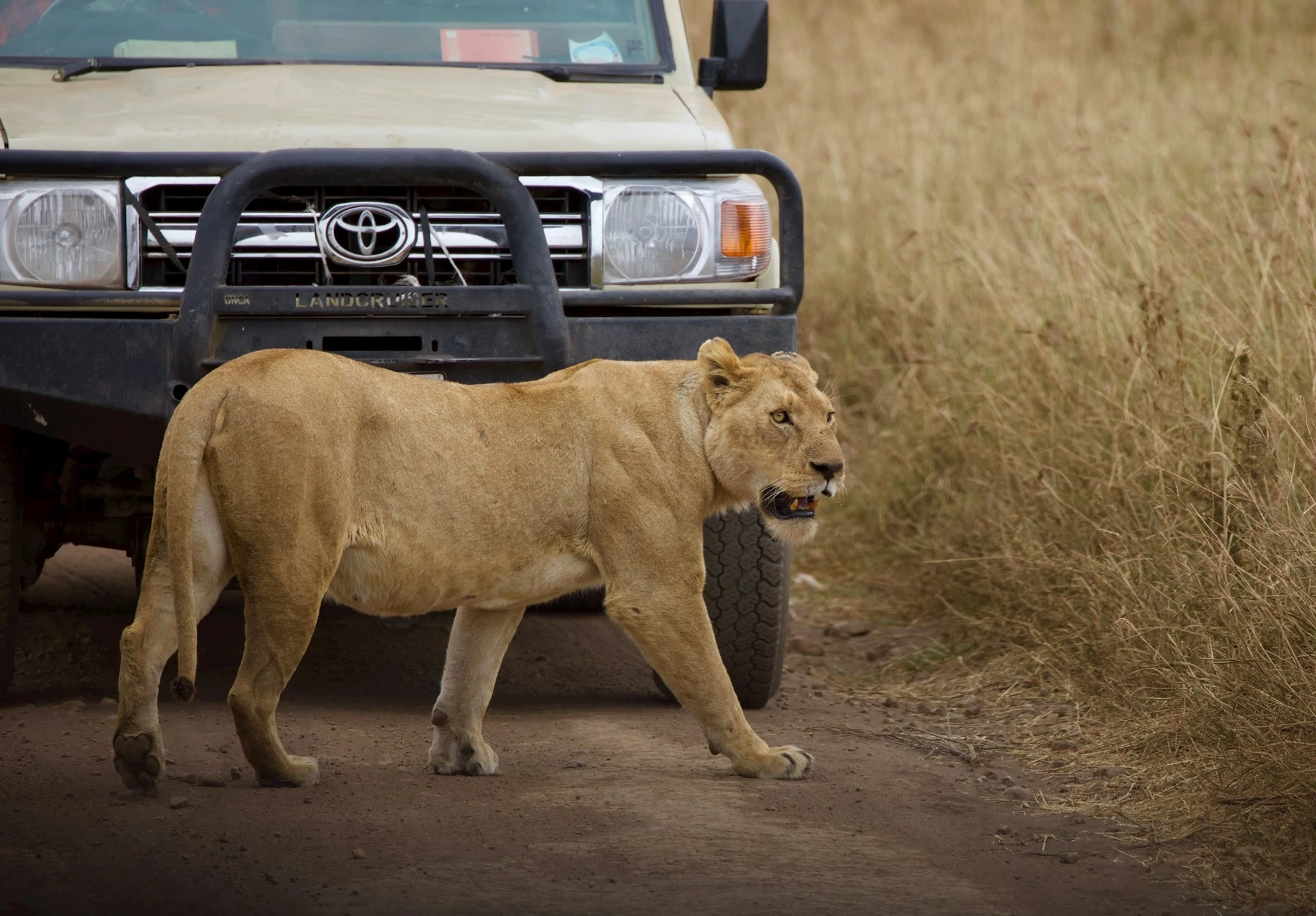
Embark on an extraordinary East African adventure with our private guided safaris , curated by local-born professional guides. At Kenya Safaris Experiences , we redefine the safari experience, offering an authentic exploration of Kenya,Uganda, and Tanzania's exquisite destinations. Our guides, with in-depth knowledge, lead you through captivating trails. Prepare for a lifetime of memories with our almost all-inclusive African safari experiences. Specializing in bespoke tours, our Kenya Safaris Experiences , transcend the ordinary. Explore Kenya, Uganda, and Tanzania , combining bush and beach adventures in a unique fusion. With over a decade in the industry, our team at Kenya Safaris Experiences , is committed to exceeding expectations. We deliver peerless, personalized, and impeccable service. Join us for a journey driven by passion, knowledge, and an unwavering commitment to creating unparalleled memories in East Africa.
Discover Top-Rated Kenya & Tanzania Tours: Best Sellers 2024 & 2025
Witness Iconic Wildlife: Top-Rated Tours to Kenya's Masai Mara & Tanzania's Serengeti
Pinnacle of Luxury Kenya's 7-Day Wildlife Safari
Nairobi,Samburu,Aberdares,Nakuru,Masai Mara
11 Days Kenya Luxury Flying Safari
Nairobi,Lewa,Masai Mara,Diani Beach
8 Days Classic Kenya and Uganda Gorilla Trekking Safari
Ol Pajeta,Masai Mara,Bwindi Impenetrable Forest
14-Day Thrilling Kenya Wildlife Safari
Ol Pejeta,Samburu, Aberdares , Naivasha ,Amboseli,Nakuru,Tsavo
4 Days Mount Kenya Hike
8 days tanzania wildlife family safari.
Ngorongoro,Tarangire,l.Manyara,Serengeti
Recommended African Safaris to Ignite Your Wanderlust
Luxury African Safaris: Unwind in Style Amidst Untamed Beauty
6 Days Gorilla and Chimpanzee Trekking Safari
Entebbe,Kibale ,Queen Elizabeth,Bwindi
10 Days Classic Kenya-Tanzania Wildlife Safari
Ol Pejeta Conservancy, Lake Nakuru National Park, Masai Mara National Reserve, Serengeti National Park, Ngorongoro Conservation Area, Lake Manyara National Park
9-Day Bush and Beach Classic Safari
Samburu, Ol Pejeta, Lake Nakuru, Maasai Mara, Diani Beach
7 Days Kenya Highlands Lakes and Plains Wildlife Safari
Aberdares, Nakuru,Bogoria, Naivasha, Masai Mara
14 Days Beach to Bush Epic Safari
Diani,Tsavo ,Amboseli,Maasai Mara
8 Days Classic Kenya Wildlife Safari
Samburu, Ol pejata, L.Nakuru, Masai mara
Why Choose Kenya Safaris Experiences?
Unforgettable Encounters, Untamed Beauty: Discover Kenya's Hidden Gems
Expert Local Knowledge
Our team of experienced travel experts has extensive local knowledge, ensuring that you get insider tips and recommendations to make the most out of your travel experience.
Personalized Services
We believe in tailoring your travel experience to your unique preferences. Our personalized services ensure that every aspect of your trip is customized to meet your needs and desires.
Competitive Prices
We offer competitive prices without compromising on quality. Our goal is to provide you with the best value for your money, making your travel experience affordable and memorable.
24/7 Support
We understand that travel can come with unexpected challenges. That's why our dedicated support team is available 24/7 to assist you and ensure a smooth and stress-free travel experience.
Testimonials
See Why They Choose Us: Unbiased Customer Experiences
Kenya Safari Experiences: dream-worthy safaris, breathtaking landscapes, and genuine adventures. Unforgetable memories await! 🦓🌍🌟

Kenya Safaris Experiences delivered an incredible journey, blending adventure and nature seamlessly. Highly recommend!

Accreditations & Affiliations
Building Trust & Expertise: Our Accreditations & Affiliations
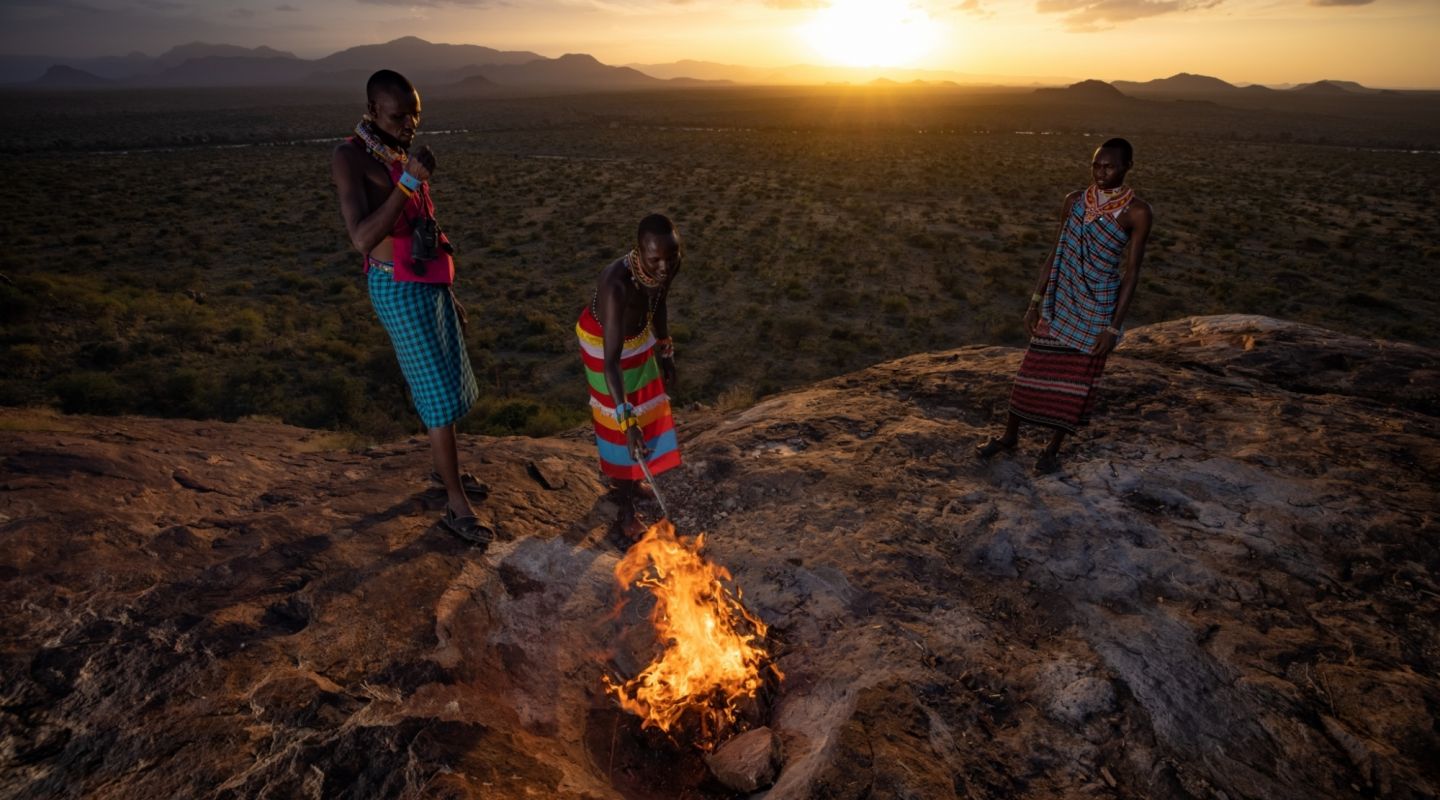
Kenya is a diverse place home to over 40 tribes. Track wildlife with a Maasai guide, join a Samburu camel train or try running with a Kalenjin.
Millions of wildebeest and zebra thunder their way to the Mara’s fresh grasses each year, stalked by lion, leopard and cheetah. One of nature’s most awe-inspiring sights, we can put you in the heart of the action.
Kenya’s pioneering model of community-led conservation and sustainable tourism ensures local people are invested in protecting ecosystems and share the benefits travel brings.
Rift Valley lakes, volanoes, mountains and deserts – the rarely explored north of Kenya is an incredible setting for an off-grid adventure.
Luxury safaris and private adventures
The home of safari.
Straddling the equator between the Rift Valley and the Indian Ocean, Kenya is a land of astounding geographical, cultural and biological diversity. Meaning ‘journey’ in Swahili, safari holidays originated right here in Kenya which is a richly rewarding place to explore.
The Maasai Mara is perhaps Kenya’s most iconic vista – savannah plains dotted with umbrella-like acacia trees and home to an incredible density of wildlife, especially so when the two million wildebeest and zebra on the great migration wheel their way onto the Mara from Tanzania. Camps in community-owned conservancies extending from the national park offer more freedom and exclusivity for your safari while directly supporting sustainable livelihoods for the Maasai people here.
Follow the frontier southeast to see Amboseli’s elephant herds backed by the white peak of Kilimanjaro, then wander Chyulu’s green hills and forests. North of Nairobi, in the shadow of Mount Kenya, the plains of Laikipia were once dominated by cattle ranches. Now, many are devoted to conservation and the region is once again a haven for endangered species, especially rhinos, African wild dogs and giraffes. Lodges here include some of Africa’s most exclusive, offering an adventurous experience about so much more than game drives.
As you head further north, the landscape turns khaki and arider. Samburu county, home to the Samburu people, is a rugged but beautiful place where you can learn about their culture and visit inspiring community-led conservation projects. Beyond this, the Rift Valley’s saline lakes, deserts and volcanic wilds are best explored by helicopter.
What's the weather like?
When to visit kenya.
- 28 °C 100 MM Green season January - February
- 26 °C 170 MM Long rains March - May
- 25 °C 82 MM Dry season June - September
- 27 °C 125 MM Short rains October - December
Example trips
Get inspired.
Browse our Kenya example trips and get in contact to start planning your very own adventure.
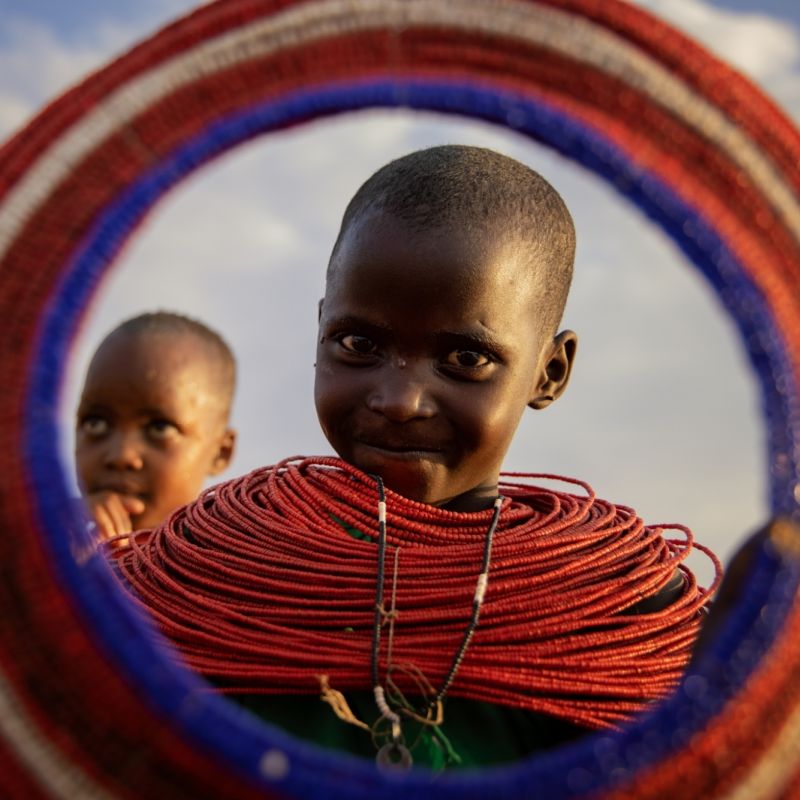
11-day trip
Conservation and culture in kenya.
Experience the best of Kenya's wildlife, conservation efforts and some of the most iconic hotels
From € 14575 PP
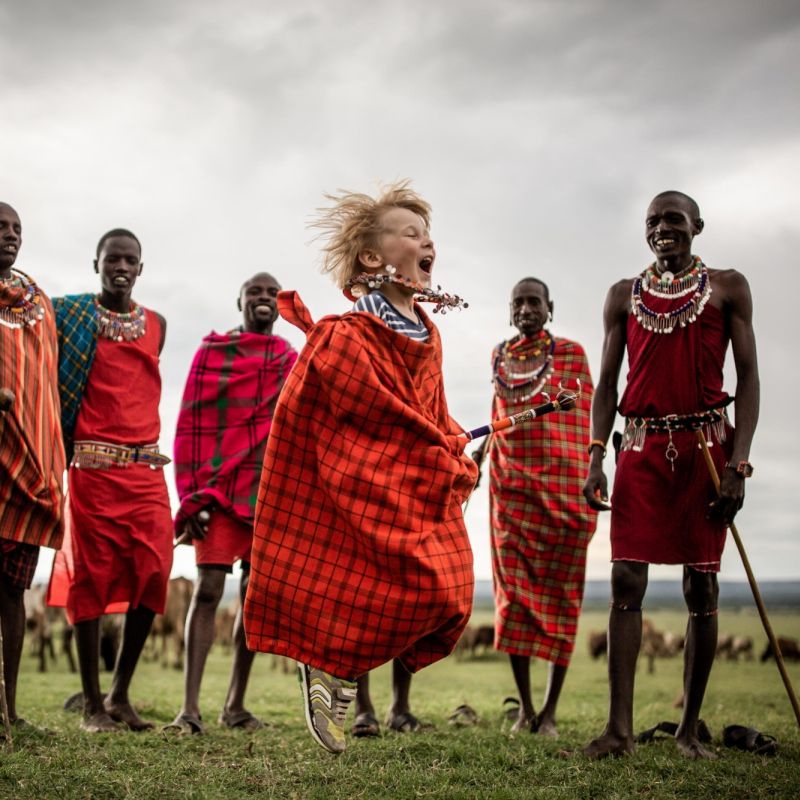
A Family Adventure in Kenya
This trip is a real family adventure, combining the freedom of a Laikipia Ranch with a classic safari on the Maasai Mara.
From € 7760 PP
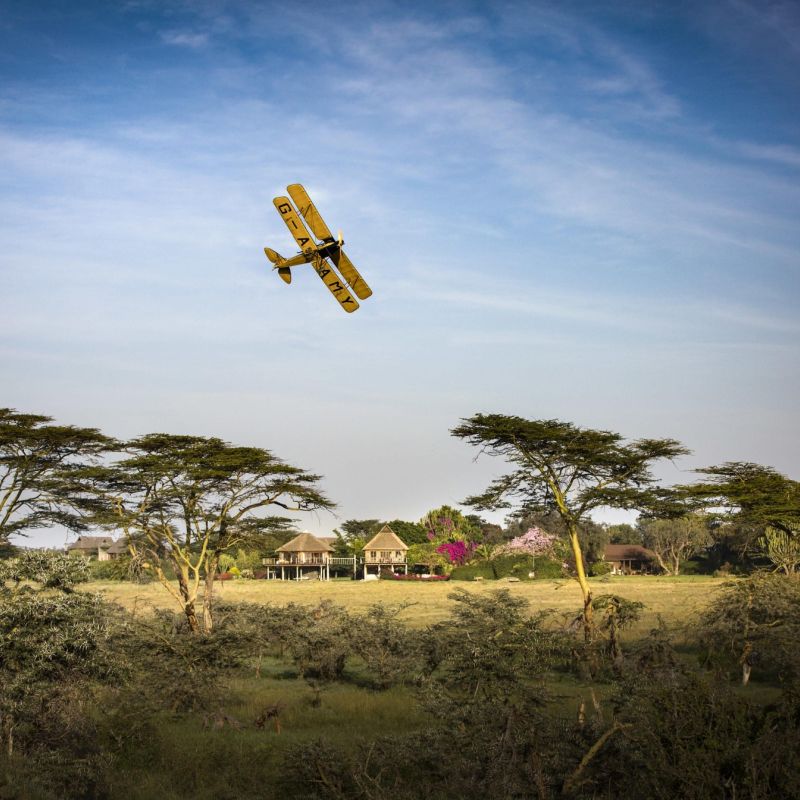
10-day trip
Luxury kenya.
A fabulous luxury safari in Kenya blending unforgettable wildlife experiences and epic vistas with genuine cultural insights and impactful conservation.
From € 12305 PP
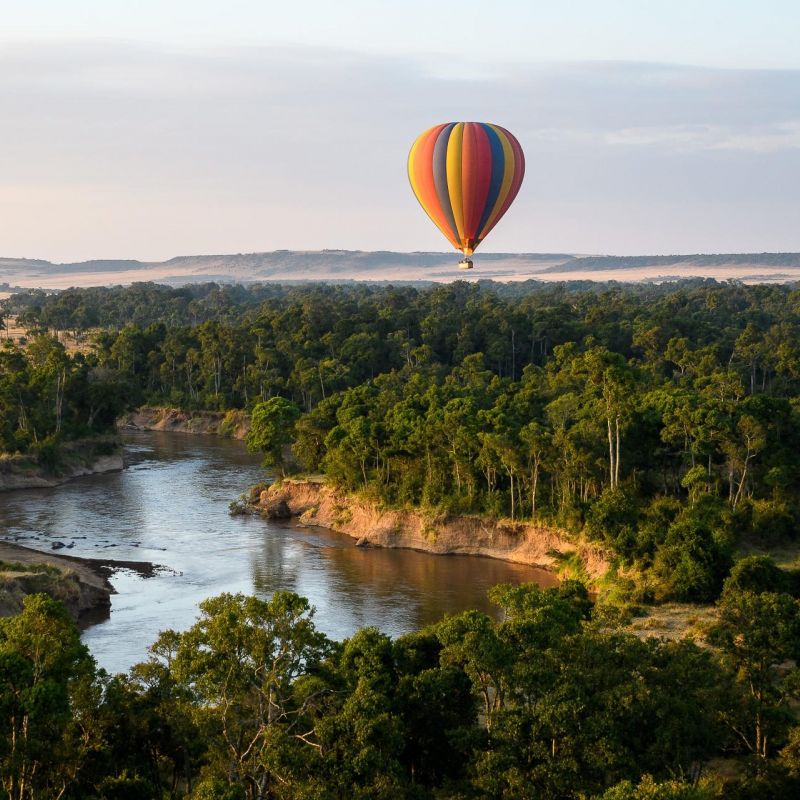
Kenya Safari and Seychelles Honeymoon
A classic combination of safari and sand staying at wonderfully romantic properties renowned for their conservation work.
From € 13500 PP
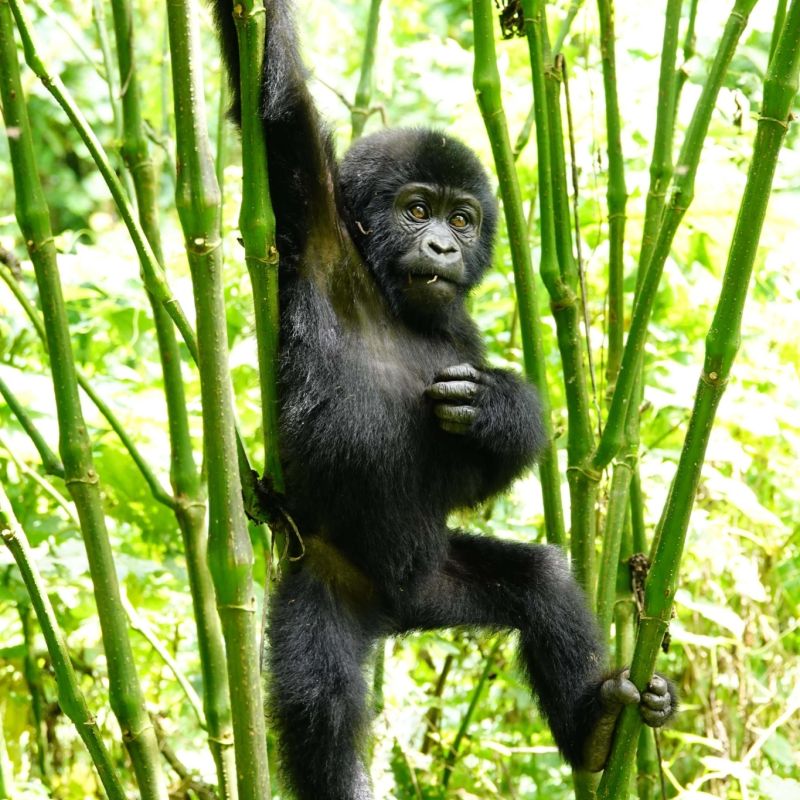
Uganda Gorillas and Kenya Safari
Bwindi, the Mara and Chyulu Hills. A wonderful way to experience some of East Africa’s most incredible wildlife encounters and life-affirming cultural exchanges.
From € 9030 PP
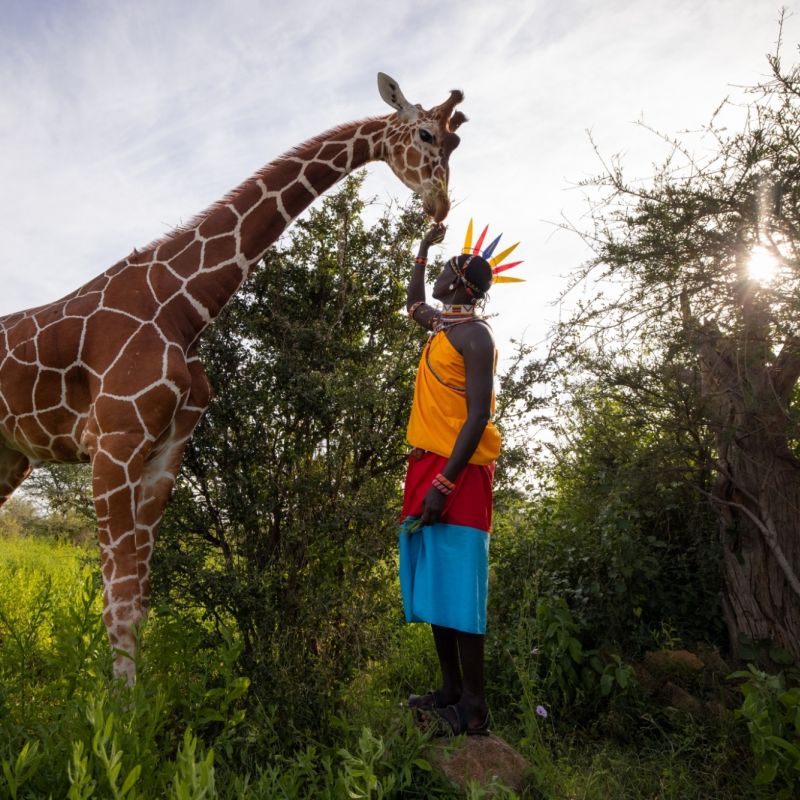
The Mara and Northern Kenya Safari
Explore three contrasting regions of Kenya from the iconic Maasai Mara to the unseen north, staying at luxury lodges and camps known for their work with local communities and conservation efforts.
From € 11515 PP
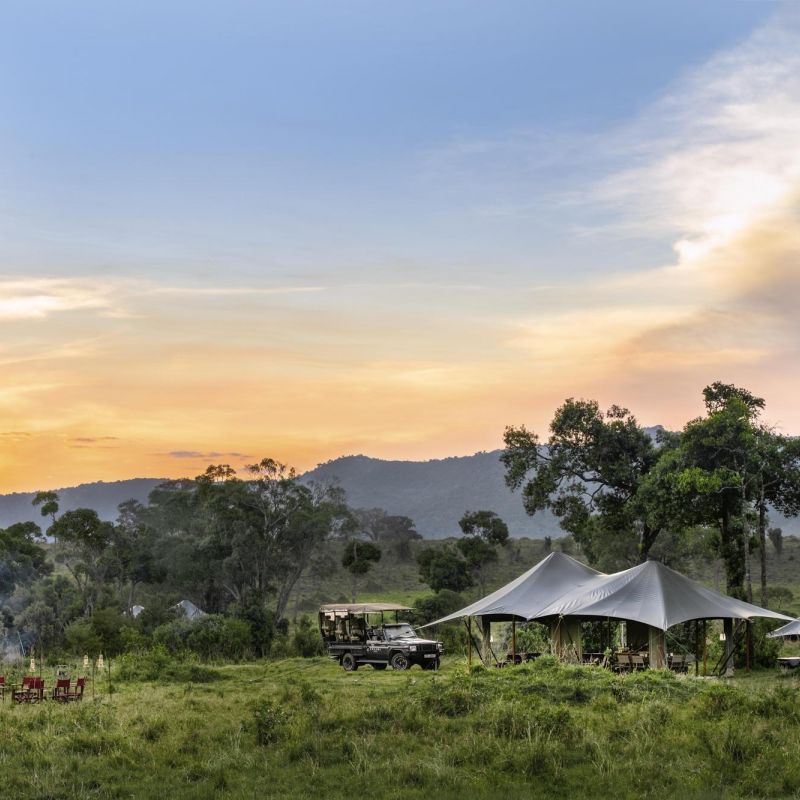
Private Kenya Safari
A fabulous private safari adventure to Kenya, perfect for friends and family after luxury, freedom and a great mix of activities.
From € 16215 PP
Elevating different perspectives
Our stories.
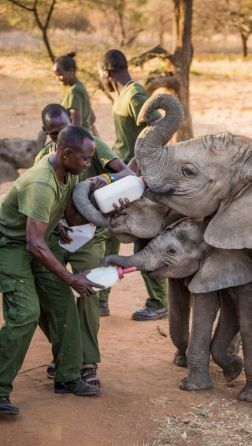
Reteti Elephant Sanctuary: An African trailblazer
Responsible travel.
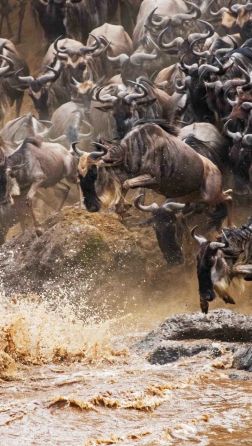
The Great Wildebeest Migration FAQ
Destination guide, what makes us different.
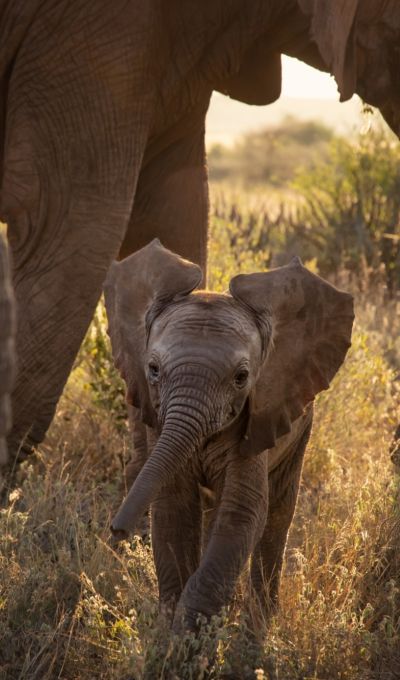
Niarra Travel is a forward-thinking travel company headquartered in London born out of a passion to do things differently.
In Swahili, a Bantu language spoken by millions in Eastern, Central and Southern Africa, the name Niara means "with utmost purpose" and our team are united by a passion for exploration and a belief that the right kind of travel can make the world a better place.
Our Travel Researchers are here to create incredible trips with a positive impact for you.
Unforgettable experiences
Creating your trip is entirely collaborative and our Travel Researchers are here for every step.
Positive impact
Curated sustainable experiences and accommodation that maximize the benefits to local people and place.
Fairness and transparency
An open, competitive pricing structure that ensures more money goes to where it's needed in the destination.
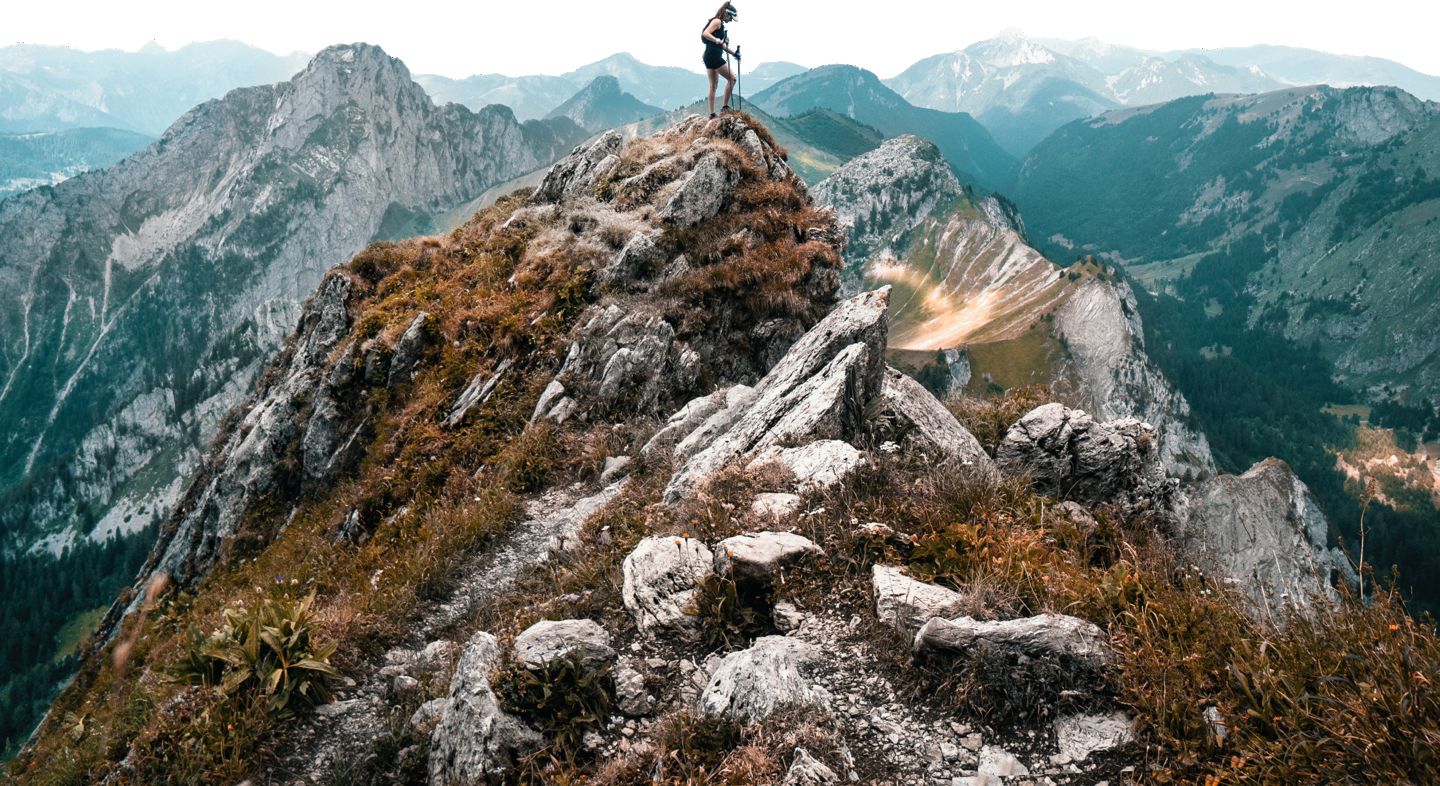
The world is at your feet
Receive inspiration in your inbox, contact a travel researcher.
We always aim to reply within 24 hours.
Call Us +1 (833) 215 9353
Send us an enquiry.
Bienvenue sur le site de Safari Kenya Magique
Passion, culture, nature. Spécialiste du safari photo au Kenya depuis plus de 10 ans
ATTENTION ! SUITE A L’AUGMENTATION DES ENTREES DE PARCS PAR NOTRE GOUVERNEMENT, TOUS LES TARIFS SONT MIS A JOUR POUR 2024. CES TARIFS SONT A TITRE INDICATIF, CAR LES ENTREES CHANGENT ENCORE.
Circuits & Safaris
L'ensemble de nos safaris débutent dès votre arrivée aux aéroports de Mombasa ou de Nairobi
Rashid, Votre Guide
Je m’appelle Rashid , je suis Kenyan et j’habite à Mombasa depuis toujours. Né dans la vielle ville de Mombasa, j’ai fait toutes mes études à l’école primaire et secondaire du coté de la vielle ville de Mombasa.
Ma famille est connue partout sur la cote de l’Afrique de l’est . Elle fait partie des descendants Arabes Omanais qui sont venus sur la cote au 17° siècle et se sont installés là .
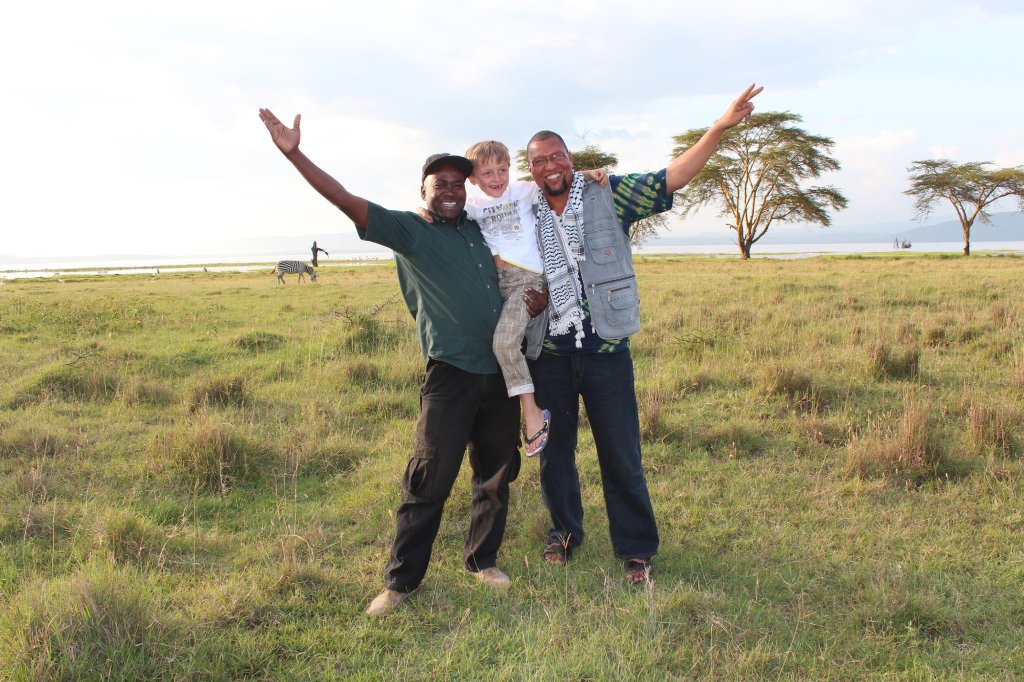
Grand Kenya Magique
Durée : 12 jours, 11 nuits Régions : Nairobi, Masaï Mara, Naivasha, Amboseli, Kilimandjaro Hébergements : Kibo Tented Camp, Naivasha Simba Lodge, Sentrim Tented Camp.
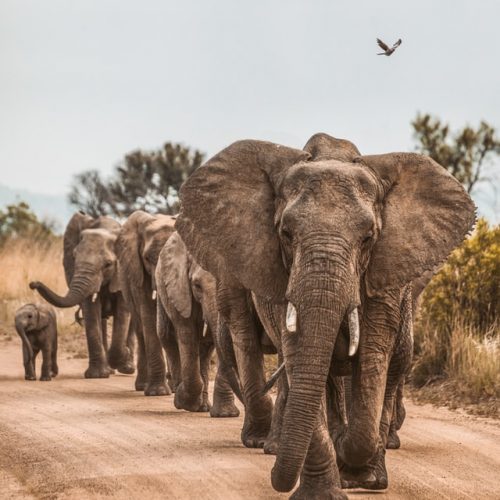
Les Pistes Oubliées du Kenya
Durée du séjour : 9 jours, 8 nuits / 2 nuits en Camps, d'autres nuits en hôtel , cabanes et resort. Régions : Meru , Marsabit , Chalbi , Turkana , Samburu
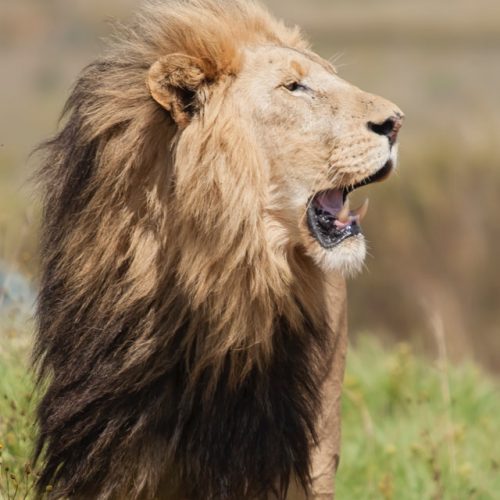
Simba Magique
Durée du séjour : 7 jours, 6 nuits / 3 nuits sous tente pre montée, 1 nuit en hôtel et une en tented camp et une nuit en Lodge Régions : Nairobi, Masaï Mara, village Masaï, Elementaita, Amboseli, Tsavo Est
Jetez un œil à certaines de nos galeries de photos de safari
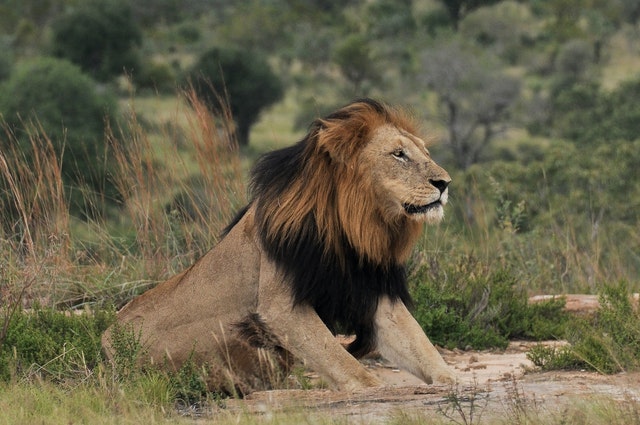
Ce que disent nos clients
Nous sommes fiers de partager notre beau pays, le Kenya, avec nos clients et de nous assurer qu'ils bénéficient du meilleur service.
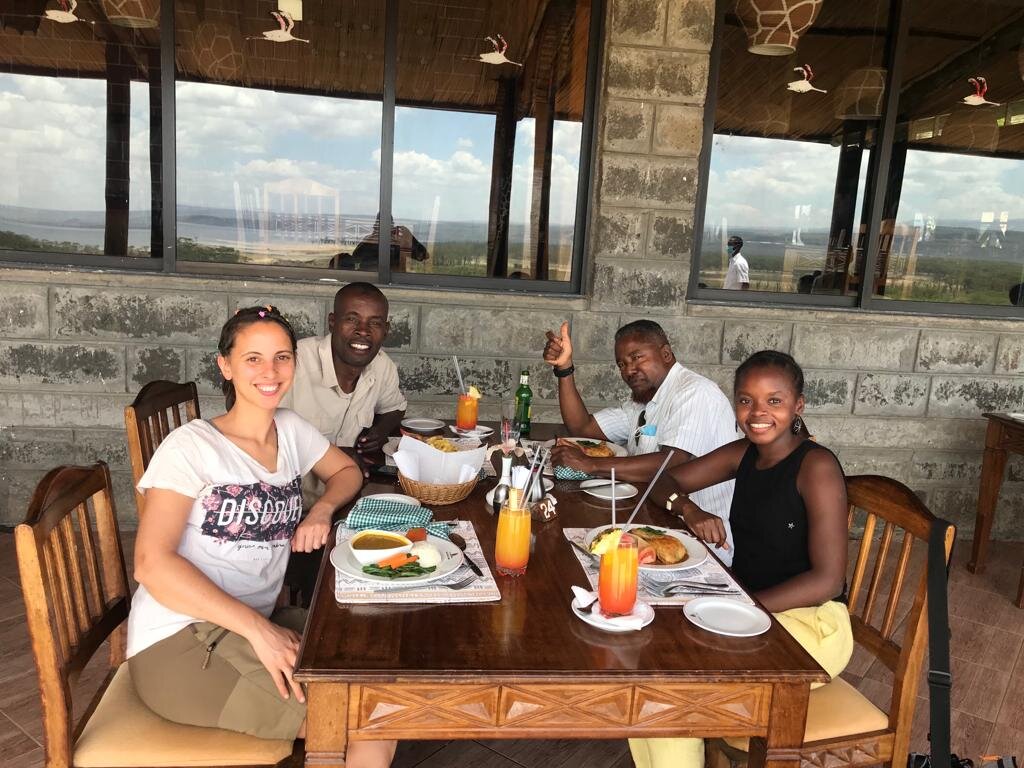
Réservez votre séjour Safari
- +254 722 397 650
- info [@] safari - kenya - magique [dot] com
I visited 5 of the best safari parks in Africa. The trip was filled with surprises, and there are a few things I wish I'd known before leaving.
- I visited five of Kenya's best safari parks to see some of Africa's most famous animals in the wild.
- There were many aspects of the safari that surprised me despite the research I did before my trip.
- I was surprised by many things, including how long I spent sitting in safari cars.

Seeing some of Africa's most famous animals in the wild has been on my bucket list for years. With adventure travel on the rise, I decided to take the plunge and make the 20+ hour flight to Africa to visit some of Kenya's best safari parks.
Masai Mara is arguably the most famous for big-cat sightings, but Amboseli National Park , Crescent Island Game Sanctuary, Nairobi National Park, and Hell's Gate National Park are also must-see reserves teeming with wildlife.
I did lots of research beforehand but found I was unprepared for many things I experienced while on safari — and there are things I'll definitely do differently the next time I go.
From what I should have worn to what seeing the animals was really like, here's what surprised me most about going on safari in Kenya.
I sat in the safari vehicle for about 8 hours every day
Between a morning and afternoon game drive, I spent about eight hours in the car daily. It was shocking to see the low number of daily steps on my Oura ring.
I started doing yoga at the end of the night to loosen up my hips. My airplane pillow also helped me stay comfortable, especially during the seven-hour drives to other parks.
My shoes were off for most of the drives
In hindsight, I should have worn sandals on my drives. Most safari vehicles have small windows and a top that lifts up, and you're frequently standing on the chairs to get a better view.
We took off our shoes when we got into the car so we were ready to hop up on the chairs at a moment's notice.
I had lots of early mornings and bedtimes.
The best times for safaris are in the mornings and at dusk, and sometimes, we had 4 a.m. start times. The lack of sleep , paired with the heat, made me eager to get to bed early.
Related stories
I'm not a morning person, but I preferred the early drives for the animal activity (and incredible sunrises) we saw. We used the less-ideal safari hours during the day to nap, do other activities in the area, or drive to other parks.
Many animals can be difficult to spot due to distance or camouflage
We had our fair share of close-up sightings, but many of the animals we wanted to see were far away and sometimes not immediately obvious to the naked eye.
We ditched our iPhones and used binoculars and someone's camera viewfinder to get a closer look.
A pair of binoculars and a camera with a zoom lens are essential for getting the best view (and pictures) possible.
There were long periods of time with minimal animal sightings
Safari drives can be frustrating because you can't control what animals you'll see, how far away they are, and how long the sighting will last. But being patient can be rewarding.
During one dusk drive, we spent three hours searching for a pride of lions without any luck. Finally, as the sun set in the last half hour, we stumbled upon three female lions napping, a leopard, and giraffes.
Many of the animals are sleeping during the day
I expected to see animals moving around or hunting, but many were resting during the day. It was only when dusk approached that they started to slowly stake out a spot by the grazing herds.
If I go on safari again, I'll book a night drive so I can see how the lions and other animals act during their peak hours of activity.
My view was largely out of my control
Whenever a less common animal like a lion or cheetah is spotted, a traffic jam of safari vehicles speed over and line up, vying for the best view.
What you see — and sometimes, if you see anything at all — can depend on your driver and what vantage point they can get.
Your view can also depend on your position in the car. I spent a lot of time scrambling around to catch a sighting (and a photo, if I was lucky).
Prey is plentiful, but seeing any action is unlikely
Gazelles and impalas were everywhere, so it was surprising to learn that the lions might not eat for days.
Our driver told us the best thing he's seen on safari was a cheetah hunting a gazelle, and then a pride of lions swooping in to steal his meal. However, these kinds of sightings are rare.
Predators need to consider everything from the direction the wind is blowing to the length of the grass when trying to sneak up on their prey. Many hunts are unsuccessful, so seeing one in person is unlikely.
Watch: Crocodile wrangler rates 12 crocodile and alligator attacks in movies and TV
- Main content

Hemingways Watamu: fall asleep to the sound of the ocean in Kenya's Marine National Park
S ynonymous with safari and the big five, Kenya ’s coast often mistakenly gets overlooked in favour of the country’s impressive game reserves. But with swathes of white sands and an ocean that teems with wild spinner dolphins, humpback whales, and vividly coloured fish, this is one part of the world you don’t want to miss out on.
Unfolding directly onto the paradisiacal beachfront, and surrounded by swaying palms, manicured gardens dotted with bird of paradise blooms, and a handful of swimming pools that mirror the cloudless, bright blue expanse of sky above, Hemingways Watamu embraces frazzled guests like long-lost friends.
But it’s not only the surroundings that add to the magic, it’s the people who work here that make this five-star resort feel like a true home away from home. Always eager to chat, Hemingways’ hardworking staff elevate this hotel from amazing to truly exceptional.
As the jumping-off point for one of Kenya’s first protected marine parks, and recognised as a UNESCO Biosphere Reserve due to its abundance of coral gardens, and impressive marine life, the village of Watamu - where Hemingways is located - is a truly unbeatable natural haven.
The closest airport to the hotel is 30 minutes away in the town of Malindi, a one-hour, 15-minute plane ride from Kenya’s capital Nairobi. Otherwise, it’s around a two-hour drive from Mombasa along an epic coastal road where the ocean changes colour by the second, from cobalt blue, and azure to the brightest turquoise. Direct flights from London to Nairobi are available daily, starting at around £600 return with BA.
With a fresh colour palette of bright whites, soft blues, and sage greens, the hotel has been designed to allow the natural beauty of the surroundings to truly shine. The huge open restaurant area that affords breathtaking views of the ocean from almost every angle stands out as the focal point of the complex. Here wicker tables and chairs are dressed with botanical print cushions, fresh flowers, and nods to the ocean with shell and coral-inspired artworks.
The bar, on the other hand, with its free and easy atmosphere, feels slightly more rustic with wooden detailing and a focus on deep-sea fishing since life-size cast models of marlin and hammerheads proudly line the walls. It reminds me of establishments I’ve visited in Key West and Havana, places that the hotel’s namesake, Ernest Hemingway also frequented. I can almost imagine the intoxicated writer, strong cocktail in hand watching over the place at sunset.
A handful of pristine swimming pools and the serene spa cater to holidaymakers who simply want to fly and flop, while the huge on-site tennis court and well-equipped gym are ideal for fitting in a holiday run or workout.
Which room?
Hemingways Watamu boasts 76 rooms, all with an ocean view and in categories spanning deluxe singles, to two-bed apartments. For a vacation that truly wows, the Residence suites are the way to go. Residence number eight is one of the most impressive, featuring a spacious ensuite double room complete with a four-poster canopied bed, a separate twin bedroom with its own en-suite and large bathtub, an expansive open-plan dining-living-kitchen area that’s bigger than most London apartments, and a private wrap-around terrace with daybed and loungers.
Two comfy full-size sofas, a circular wooden dining table, work desk, and a full kitchen ensure guests can comfortably reside at Hemingways for months on end should they desire. There’s even a sizeable walk-in wardrobe. Decor is tastefully simple, without too much fuss and fanfare, like the rest of the hotel, it’s the views here that command all the attention.
Food & drink
Buffet dining can occasionally equate to poor quality or bland dishes, but that’s not the case at Hemingways. Breakfast options feature an abundance of delightful options with fresh fruit juices, tart passion fruits, locally grown melons and pancakes being the highlights. But there’s everything you can imagine, from eggs and crispy bacon to waffles and pastries and plenty of incredible Kenyan tea and coffee — all served overlooking the Indian Ocean.
Buffet dining is also available each evening or there’s the option to order from the a la carte menu where seafood is the standout option. Native grilled rock lobster slathered in butter, fresh shrimp with chilli and garlic, and any of the house specials — black pepper kingfish, Swahili coconut chicken, and fish creole — all impress.
Since the coastal area around Watamu has a strong Italian community that dates back to around the 1960s it’s not unusual to find good gelato and pasta in town. Nearby Papa Remo serves plates of authentic Italian dishes with sublime service.
Extracurricular
While it would be easy to relax for a week at Hemingways it would be a shame not to visit the coral gardens that bustle with wildly elegant marine life like parrotfish, sweetlips, lionfish, and snappers. The hotel can arrange boat excursions that leave directly from the beach in front of the hotel, so guests can spend a few hours snorkelling, wild dolphin spotting, or even getting up close to humpback whales, which can be seen for around four months each year, from June onwards.
Eco World Watamu, just a short drive away from the hotel, is a community-run project that collects plastic waste to sort and recycle. Partnering with local women and youth groups the organisation promotes awareness around recycling and beach clean-ups. Tours of the centre are available to book through the hotel and provide an inspiring overview and the chance to pick up a recycled trinket.
Still hankering after the big five? It’s possible to witness elephants who will occasionally visit Arabuko Sokoke Swamp’s watering holes just before sunset. Then board a majestic single-sailed dhow for a sunset cruise along Mida Creek, with a glass of wine in hand, it’s the ideal way to wrap up a day in paradise.
Best for...
Daydreamers, nature lovers, couples, friends, or families — this place really does cater to all. With direct beachfront access, endless activities, welcoming staff, and fresh home-cooked seafood, Hemingways Watamu is the ideal tropical holiday destination or the perfect location for a post- safari wind-down.
Double rooms available from £437 on a half-board basis, hemingways-collection.com
Register now for one of the Evening Standard’s newsletters. From a daily news briefing to Homes & Property insights, plus lifestyle, going out, offers and more. For the best stories in your inbox, click here .
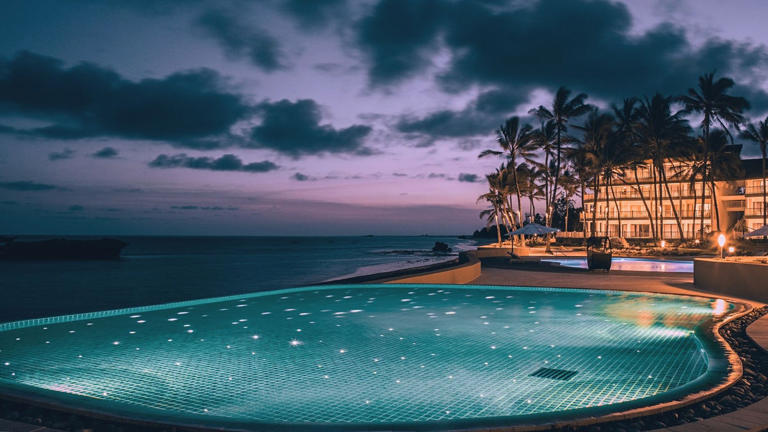
Palm Beach County organization raises $350,000 to aid Maasai community in Kenya
A Palm Beach County organization has raised roughly $350,000 to help pay for the construction of spring water pipelines as well as school buildings, desks, textbooks and more for a Maasai community in Kenya, said Becky Conway, co-founder of the Olalashe Foundation.
The money was raised during a private fundraiser hosted March 11 at Le Bazaar Salon in Palm Beach that also featured the appearance of William Ngigiro Twala, a Maasai safari guide and co-founder of the foundation, who traveled to the United States for the first time to attend the event.
The fundraiser's success marked a milestone in the organization, which started after Dris Ramdane fulfilled a lifelong dream of traveling to Africa. Ramdane, an owner of Le Bazaar, went on to co-found Olalashe with Conway, Twala, Julie Kasle and his wife, Junny Luke Perez.
“I started to go to Kenya in 2015 as an amateur wildlife photographer, and I met Twala," Ramdane said. “We became really, really good friends right away.”
The trip fueled countless more, each growing the relationship between Ramdane and Twala, while also opening Ramdane's eyes to the daily challenges of water insecurity and limited education opportunities facing the pastoral people living in Kenya's arid southwestern region.
“We started getting very close, I knew his parents his kids ... And I started to think, ‘What can I do besides just doing the (safari) tours and taking pictures?’” Ramdane said. “What can I do for the community?”
Perez, Kasle and Conway soon made their own visits. Each came away with a drive to help the community that hosted them.
In 2019, with guidance from Twala, the group paid to build a more than 1.5 mile pipeline that ran safe drinking water through the Majimoto Village to the Naisula Primary School. The village is nearly 267 miles southwest of Nairobi, Kenya's capital.
The village's reaction left a lasting impression on the future co-founders.
“When I went there to see it, I didn’t expect much. But Twala tricked me by bringing out the whole village, and I was overwhelmed by everything,” Ramdane said.
Encouraged by the positive reception, they worked with Twala to form the Olalashe Foundation, with a focus on building infrastructure to deliver clean water and create more educational opportunities for the Maasai people.
Twala said he visited the various Maasai villages, talking to leaders and residents to figure out their most pressing needs.
Sometimes that meant steering the organization away from its original focus, Conway said.
“During COVID-19, we actually ended up being able to raise money ... (and) we were able to deliver 77,000 meals for the Maasai people,” said Conway, a resident of Wellington. “It didn’t follow along the lines of water and education ... but at a time of extreme crisis, what did education mean if no one was getting fed?”
Since then, the organization's efforts have led to the distribution of 700 textbooks, 134 desks for schools, multiple scholarships opportunities for Maasai children, clean water access to 11,000 residents and the construction of 46 buildings including latrines, classrooms and teacher housing.
Teacher housing and classroom expansions are especially important, said Twala, since public education in Kenya functions through a registration system in which the government provides teachers so long as three key requirements are met.
Those are, that the school is registered with the state of Kenya and has paid any accompanying fees, that there is adequate housing and accommodations for the incoming teachers and that there are a sufficient number of potential students living in the community, Twala said.
Twala's first trip out of Kenya
Not only was Twala's visit to Palm Beach County his first time leaving his home nation, but also his first time visiting the U.S.
The journey was not easy.
The U.S. Embassy in Kenya denied his attempt to get a U.S. visa, turning him away immediately after his first interview, Conway said.
But Twala had someone working outside on his behalf. Conway began reaching out to friends, who reached out to others. Eventually, they connected with Delaware Sen. Chris Coons, who because of his time in the 1980s as a relief worker in Kenya, had connections to the U.S. Embassy there.
"When they called Twala, for the first time from Sen. Coons office, they said, 'I don't know how in the world you've got this connection,'" said Conway, who is also an International Equestrian Show Jumping Rider.
Twala finally landed in the U.S. on March 3. With Ramdane and Conway as guides he has spoken to students at Wellington's Upper Echelon Academy about the help the Maasai have received from the Olalashe foundation.
Twala has also visited the Everglades where he gave kayaking a try. And he's discovered a new favorite treat: ice cream.
"It (Palm Beach County) is totally different from where I come from, the culture is so different, things are so well organized," Twala said.
Diego Diaz Lasa is a journalist at the Palm Beach Daily News , part of the USA TODAY Florida Network. You can reach him at [email protected] . Help support our journalism. Subscribe today.

Safari Rally Kenya
29 – 31 Mars 2024
Résumé vendredi – Rallye du Kenya 2024 en direct
Fait partie de cette série d'évènements

Championnat du monde des rallyes WRC
Championnat du monde wrc 2024 : retrouvez tous les rallyes, informations, actualités, pilotes, parcours, direct live, vidéos, photos, résultats, classements... sur toutes les étapes du wrc 2024 ici .
Le terrain sauvage du Safari Rally Kenya offre aux pilotes un test d'endurance ultime, avec de la boue, des rochers, du sable fesh-fesh et des traversées d'eau difficiles. Retrouvez un résumé et les meilleurs moments de chaque jour duSafari Rallye du Kenya 2024 en direct live vidéo ici avec Red Bull TV !
- Newsletters
- Les débats DH
- Lifestyle & people
- Belgium Running
- Nos podcasts
- Dernières dépêches
WRC - Safari Rally Kenya - Neuville prévoit une course imprévisible dans cette "aventure" qu'il n'aime pas trop
Thierry neuville (hyundai) aborde jeudi le safari rally, la 3e des treize manches du championnat du monde des rallyes. l'épreuve kenyane ne laisse pas que de bons souvenirs au pilote n.1 belge..
/s3.amazonaws.com/arc-authors/ipmgroup/76581f45-a2de-4bdc-92ed-2f817abafffe.png)
- Publié le 25-03-2024 à 13h08
- à Bruxelles, Belgique
/cloudfront-eu-central-1.images.arcpublishing.com/ipmgroup/NSWWA332IRCMROU2L4QYDHK3MI.jpg)
Neuville était en tête de la course en 2021 quand il a heurté une pierre et été contraint à l'abandon. L'année suivante, c'est un violent contact contre un arbre qui a mis fin à ses espoirs de victoire. Il est reparti le lendemain et a terminé cinquième. En 2023, sa suspension a cédé lors de la première journée. Neuville a fini 8e et remporté la Powerstage avant d'être disqualifié après le rallye à la suite d'une reconnaissance du parcours interdite.
Cette année, Neuville prend le départ en tant que leader du championnat et devra donc s'élancer en tête. Dans des conditions normales, c'est un désavantage sur la terre. "Le plus grand défi cette année, ce sont les conditions météorologiques. Le rallye a été avancé au mois de mars (au lieu de juin, ndlr). On s'attend à beaucoup de pluie, mais la question est de savoir quand elle tombera. Selon le moment où il pleut, partir premier peut être un avantage ou un inconvénient. S'il y a de grandes flaques d'eau que nous devons vider ou si elles n'existent pas ou qu'elles soient déjà vidées", estime Neuville.
"Les étapes sont imprévisibles, mais la fiabilité de la voiture doit être au rendez-vous. La voiture ne doit pas nécessairement être la plus rapide du peloton. Elle doit être capable de résister aux différentes conditions que nous rencontrons. Le Safari Rally n'est pas mon rallye préféré, mais c'est une aventure. L'année dernière, nous avons remporté une spéciale et nous avons terminé deux fois dans les trois premiers. Cette année, nous voulons passer à l'échelon supérieur et faire un bon rallye".
© 2024 Belga Newsbriefing . Tous droits de reproduction et de représentation réservés. Toutes les informations reproduites dans cette rubrique (dépêches, photos, logos) sont protégées par des droits de propriété intellectuelle détenus par Belga Newsbriefing . Par conséquent, aucune de ces informations ne peut être reproduite, modifiée, rediffusée, traduite, exploitée commercialement ou réutilisée de quelque manière que ce soit sans l'accord préalable écrit de Belga Newsbriefing .
À 26 ans, il ouvre son atelier de lutherie à Mons : “la première fois que j’ai eu une guitare entre les mains, j’ai trouvé l’objet extraordinaire”
Un camion Tibi s’enflamme à Mont-sur-Marchienne
L’homme de 36 ans s’amuse à briser les vitres de voitures à Liège
Les plus consultés
La FGTB recale l'idée du contrat à durée indéterminée pour les intérimaires
Le milliardaire britannique Joe Lewis veut être placé sous surveillance électronique
Attentat au Crocus City Hall de Moscou - L'Italie prend des mesures de sécurité supplémentaires après l'attentat de Moscou
Lotto Super League - Anderlecht ouvre les playoffs 1 par une large victoire contre le Club YLA

Keftas à la menthe, coriandre, cumin

La Storia revisite les classiques italiens en les sublimant dans un décor baroque au cœur du Royal Hainaut à Valenciennes (France)

Pudding aux graines de chia et à la banane

Velouté d’asperges vertes
Paris Match

Désigné comme le grand favori pour le rôle de James Bond, Aaron Taylor-Johnson subit déjà des appels au boycott

Voici une astuce surprenante pour lutter contre les cheveux gras

Vie en famille d'accueil, sociabilisation, stages, tests... Nous avons découvert le parcours de formation d'un chien guide (VIDÉO)

Charles III malade : le roi “frustré” par sa guérison “plus longue que prévu”
Le débat DH du jour

IMAGES
COMMENTS
Parc de Nairobi. 9. Parc des Aberdares. 10. Réserve nationale de Shimba Hills. 11. Lac naivasha. Si le Kenya est si célèbre pour ses safaris, c'est que le pays abrite toutes les grandes espèces de la faune africaine. Parmi elles, celles qui intègrent le Big Five : lion, léopard, éléphant, rhinocéros, buffle….
3.0 of 5 bubbles. & up. 2.0 of 5 bubbles. & up. Lake Naivasha. Nairobi National Park. Lake Nakuru. Maasai Mara National Reserve. Top Kenya Safaris: See reviews and photos of Safaris in Kenya, Africa on Tripadvisor.
For a trip to Kenya, travellers are required to apply for a visa. The easiest, most commonly used visa for going on a safari in Kenya, is the Kenya e-visa . It is valid for 90 days, and can even be extended once to 180 days once you arrive in Kenya. The visa can easily be applied for online and will save you the hassle of having to apply at an ...
Zèbre ; Babouins, vervet ; Oiseaux en tout genre. Réaliser un safari au Kenya, c'est donc l'occasion rare de voir et photographier les « Big Five », les 5 espèces les plus emblématiques des safaris en Afrique (et dans le monde), à savoir le lion, l'éléphant, le rhinocéros, le léopard et le buffle. Pour la plupart en voie de ...
9-Day Kenya Scenic and Wildlife Budget Safari Adventure. $2,640 to $3,520 pp (USD) Kenya: Private tour Budget Hotel & Tented Bush Camp. You Visit: Nairobi (Start), Samburu NR, Meru NP, Lake Naivasha (Naivasha), Lake Nakuru NP, Masai Mara NR, Nairobi (End) Nature Insight safaris. 5.0 /5 - 8 Reviews.
Les safaris économiques classiques au Kenya couvrent à la fois la faune et des destinations géographiques comme la vallé… Annulation gratuite. Annulation gratuite jusqu'à 4 jours à l'avance. Recommandé par 98 % des voyageurs. 98 % des contributeurs ont attribué à ce produit une note de 4 ou plus.
1 - Le Parc National d'Amboseli. C'est sans aucun doute l'un des plus beaux parcs du continent africain et donc l'un des meilleurs pour faire un safari au Kenya. C'est le parc le plus connu et vous avez déjà forcément vu une photo prise dans ce parc avec le Kilimandjaro en arrière plan 🙂.
Lake Nakuru National Park. Great For: An easy one-day safari. Highlights: Black and white rhinos plus a million flamingos. Lake Nakuru is amongst the very best places to spot rhinos in East Africa. Although the park doesn't always have that raw and wild feel synonymous with the rest of Kenya, seeing black and white rhinos in one place is ...
2. Ol Donyo Lodge, Chyulu Hills. Situated between Tsavo East and Amboseli National Parks, ol Donyo (meaning 'large mountain') is located on the Masai-owned Mbirikani Group Ranch. It nestles picturesquely in the foothills of the Chyulu Hills in Kenya's renowned Amboseli National Park. Elephant spotting on a Kenya safari at Ol Donyo Lodge.
Preparing for Your Safari. Paperwork. You'll need a passport that is valid for at least six months prior to your arrival. Your passport must contain a minimum of two blank pages for stamps. You'll ...
Address. Ol Derkesi Community Conservancy, 44191, Nairobi, Kenya. Phone +254 733 773377. Web Visit website. Cottar's 1920s Safari Camp is located far from the crowds in the southeast corner of the Maasai Mara, near the Tanzanian border. Set in a stunning 6,000-acre private conservancy, the camp consists of just 10 luxury tents decorated in a ...
lodge location Olderkesi. Cottar's 1920s Safari Camp offers guest vintage luxury at its very best. Cream-coloured tents decorated in 1920s epic safari style, professional Maasai safari guides and above all a sense of elegance and class - this classic Kenyan safari camp has it all. from US$ 1,059 per person per night.
For wetland safari & birdwatching. By Stuart Butler. Just 5 kilometres from the big city of Nakaru, Lake Nakuru National Park's accessibility makes it one of the most popular Kenya safari hotspots. It's centred on the large Rift Valley soda lake of the same name, but also encompasses fringing grasslands, acacia woodlands and rocky escarpments.
1. Masai Mara National Reserve. The iconic Masai Mara is widely regarded as the jewel of Kenya's wildlife viewing areas, and deservedly so. A varied land of savannah woodlands, riverine forest and vast grassland, the reserve is home to an abundant predator population year-round, with the chance to encounter prides of lions, cheetahs hunting ...
14. Porini Amboseli Camp. Porini Amboseli Camp is an eco-friendly safari camp in southern Kenya's Selenkay Conservation Area, next to the Amboseli National Park. The camp is located in a private conservancy, making for a more private and intimate safari experience.
Why Kenya Is the Best Place for a Safari, According to a Seasoned Local Guide. Veteran tour guide Kitonyi "George" Kamonde describes what it's like to work for one of the world's leading ...
Home of classical safari, Kenya combines some of the richest Big Five areas on the planet with landscapes that are truly grand and iconic. The Kenyan safari experience is highly developed, with a wide range of tour operators, lodges and transport companies welcoming thousands of visitors every year. For the budget conscious there are overland ...
Explore Kenya, Uganda, and Tanzania, combining bush and beach adventures in a unique fusion. With over a decade in the industry, our team at Kenya Safaris Experiences, is committed to exceeding expectations. We deliver peerless, personalized, and impeccable service. Join us for a journey driven by passion, knowledge, and an unwavering ...
A fabulous private safari adventure to Kenya, perfect for friends and family after luxury, freedom and a great mix of activities. Discover Trip. From $ 16,215 PP. The home of the safari. Encounter a land of astounding geographical, cultural and biological diversity by booking a luxury Kenya safari holiday with….
Rashid et Safari Kenya Magique Tours nous ont concocté un séjour à la carte de 12 jours sur place au Kenya. Le rapport qualité/prix est imbattable ! Un séjour de rêve avec Rashid comme guide, intarrissable sur son pays, sa faune et sa flore ! il nous a fait découvrir la vie dans la réserve de Samburu, le parc Ol Pejeta, la lac Nakuru ...
Pour les touristes occidentaux, le Kenya est surtout connu pour ses incroyables safaris. Mais loin de se résumer à cette image de carte postale, les paysages...
Seeing some of Africa's most famous animals in the wild has been on my bucket list for years. With adventure travel on the rise, I decided to take the plunge and make the 20+ hour flight to Africa ...
Safari au Kenya. Kenya un bijou de l'Afrique, un pays époustouflant doté d'une faune sauvage qui inspire tout voyageur d'y aller faire l'aventure. Kenya, avec ses 56 réserves naturelles, est le cadre idéal pour aller faire des safaris et rencontrer les animaux mythiques de Big Five : Buffle, rhinocéros, éléphant, lion et léopard.
Préférez les lodges avec piscine et donc les périodes plus chaudes. Le safari réside dans un trajet en voiture parfois long, qui épuise l'attention des enfants.
S ynonymous with safari and the big five, Kenya's coast often mistakenly gets overlooked in favour of the country's impressive game reserves. But with swathes of white sands and an ocean that ...
William Ngigiro Twala, co-founder of charity and professional safari guide, appeared at the fundraiser in his first trip to the U.S. ... "I started to go to Kenya in 2015 as an amateur wildlife ...
Le Safari Rallye du Kenya offre aux pilotes le test d'endurance ultime sur un terrain sauvage. Direct. ... Retrouvez tous les rallyes, informations, actualités, pilotes, parcours, direct live ...
The 2024 Safari Rally (also known as the 2024 Safari Rally Kenya) is a planned motor racing event for rally cars scheduled to be held over four days from 28 to 31 March 2024. It will mark the seventy-second running of the Safari Rally, and will be the third round of the 2024 World Rally Championship, World Rally Championship-2 and World Rally Championship-3.
Safari Rally Kenya has developed a reputation for being not only unique among the various global locations on the WRC calendar, but also for the unpredictable and unforgivable conditions it throws at teams, too. Typically, those teams must deal with soaring temperatures and torrential rain, which poses some unique challenges in terms of tire ...
WRC - Safari Rally Kenya - Neuville prévoit une course imprévisible dans cette "aventure" qu'il n'aime pas trop. Thierry Neuville (Hyundai) aborde jeudi le Safari Rally, la 3e des treize manches du championnat du monde des rallyes. ... "Les étapes sont imprévisibles, mais la fiabilité de la voiture doit être au rendez-vous. La voiture ne ...